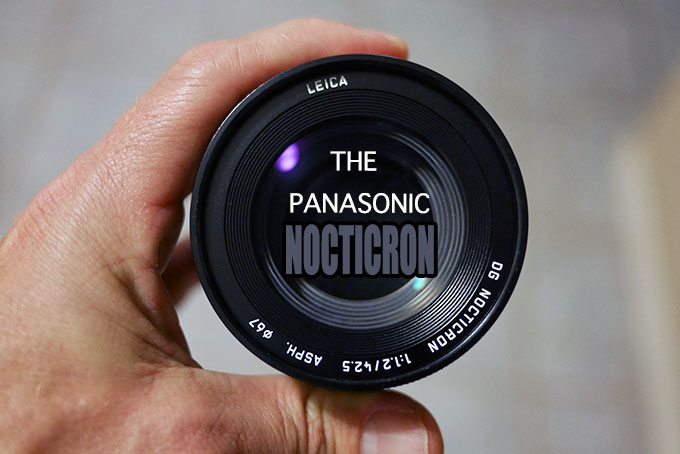
The Panasonic Leica Nocticron 42.5 f/1.2 Lens Review & Comparison
By Steve Huff
BUY THE NOCTICRON AT AMAZON HERE
BUY THE NOCTICRON AT B&H PHOTO HERE
Hey hey! It is review time again and I have been a busy man shooting this Panasonic/Leica Nocticron lens for the past two weeks and let me tell ya, it is a serious lens my friends. It is large, it is expensive, and it is FAST with an f/1.2 aperture for those “NOCTurnal” moments.
Panasonic decided to create a “statement lens” to show that Micro 4/3 users can have some fun with shallow DOF, subject isolation and 3 Dimensional POP just as much as the APS-C guys 🙂 The only problem is that they must have forgotten that Olympus has the 45 1.8 Lens that one can now buy for $350 or so. Yep, almost the same focal length and almost as fast in the aperture department for about $1100+ less. Oops.
But is it really an Oops? I do not think so because this Nocticron is so so so good that it beats the 45 1.8 in most ways (besides size and weight and cost). Is this Panasonic jewel $1100 better? No, but the Nocticron is a lens for those who want the best of the best..the unique draw and style, a taste of a real Noctilux and yes, the LEICA name.
Indoors, a coffee shop..I raised the Panasonic GX7, aimed, and fired. F/1.2 wide open and sharp as a tac. This Nocticron offers it all. Color, contrast, sharpness, gorgeous bokeh, build and more. Click the image below for a larger and much better view.
It seems that some think that Leica makes this lens. They do not. It also seems that some feel Leica supplies the glass for this lens. They do not. This is a made in Japan Panasonic lens made by Panasonic. Panasonic has a deal with Leica where they use the Leica name on certain lenses because Leica helped with the design. So in reality, Leica did help with the design but the construction is all Panasonic, made in Japan.
So does the LEICA name on the front of the lens mean that this lens at least has some of that Leica mojo and magic? Previous lenses from Panasonic with the Leica name included the now legendary 25 1.4, which has been considered as the best Micro 4/3 lens available when you want that Leica look and quality. There is also been the older 45 2.8 Macro, which was astounding in the IQ department though slow to focus. Panasonic also recently announced the new 15mm f 1.7 with the Leica name and that one looks like a 100% winner at $599. A 30mm equivalent with a fast 1.7 aperture. Yummy.
After using this lens extensively I would say that YES, it does indeed have a little of that Leica look, feel and rendering..or as I call it “MoJo”. I will go a bit farther and say that this is an overall better lens that the old Leica F/1 Noctilux that sells for $6500 or so used.
Olympus E-M1 with Panasonic Nocticron at f/1.2 – IMO, nothing beats Olympus colors.
So if we look at pricing..the “PanaLeica” 25mm 1.4 is around $529. The 45 2.8 comes in at $719. The new 17 1.7 will be $599.
So why is this Nocticron nearly $1600?
Well, the real answer is because it is a costly design AND an amazing performing lens and as I said earlier, a Statement piece from Panasonic. Panasonic will not sell loads of these due to the cost and the fact that it is really a specialty lens. So they can not spend millions to design and create it only to sell it for $500! Even the old 45 2.8 is $720, for an f/2.8! This Nocticron is not or in any way a $500 lens. In fact, when I first saw it and held it it reminded me of the real deal, the $11,000 Leica Noctilux f/0.95. It has the same design on the outside. In that regard it has some “Noctilux” character to it. The Leica is $11,000 for a 50mm f/0.95 and that lens is a tour de force of optical magic. Is it worth $11,000? No. But it sells well at that cost for Leica because there is nothing like it, at all. It is one of a kind and sharp even at 0.95 with a creamy Bokeh that melts into the frame.
The Panasonic is $1600, or $9400 less than the Leica Noctilux! While the Panasonic is NOT a Leica Noctilux it does indeed offer some of the flavor of that big money lens, for MUCH less money..MUCH less. I will state right up front that the Panasonic Nocticron has the best Bokeh I have seen next to the real deal. It competes and compares with the Leica Noctilux in this area 100%. The Bokeh is amazingly creamy, dreamy and NOT headache inducing like some lenses. Many exotic lenses fall short in this area..the out of focus background areas. Not this lens!
This is also the area where the 45 1.8 falls a bit short as the Bokeh can get busy and neurotic during certain scenes. The Panasonic has gorgeous Bokeh quality above and beyond any Micro 4/3 lens I have seen to date. In fact, I will call it the “Bokeh Master” of the Micro 4/3 world.
E-M1 and Nocticron at f/1.2 – click it for larger
Is smooth and creamy background blur worth $1600? No, not really but in this review I will be taking a look at this lens as a whole from build, to O.I.S., to AF speed to sharpness at all apertures, bokeh and a comparison with the Olympus 45 1.8 and Voigtlander 42.5 f/0.95 (that comes in at $1000 but is manual focus only). Then I will decide if as a whole “is this lens worth $1600”?
I have used this lens exclusively for the past two weeks and what you will read below is my experience with it in all aspects. If you do not want to read the full review let me just say that after my time with the lens I bought one for myself from Amazon right HERE. Yep. I found it is just as special as the real Leica Noctilux (in a Micro 4/3 kind of way) and offered me more character, more pop, better contrast, and much nicer Bokeh than the $350 Olympus (which I also own). I guess that answered my question of “is it worth it” pretty quickly! I will get more into why I bought one of these expensive lenses when I already own the $350 marvel in the conclusion of the review 🙂
The Nocticron Arrives
I originally rented this lens because I did not want to buy one to review it. I figured I would rent it for a week or two, use it, review it and say “Buy the Olympus 45” and be done with it. But as it went, I was wrong. When the lens rental arrived I pulled it out of a case only to say “wow, this LOOKs like the Noctilux”! It is not built like the Leica Noctilux, not even close…but it does resemble it. It is much lighter than the Noctilux as well. Still, this lens looks and feels mighty impressive for a Micro 4/3 lens. I instantly knew that this was the best built AF lens for the system, hands down. While all Olympus primes are built nicely and feel like little light jewels, this Panasonic is more of a brute..a serious light gathering machine..more importantly “An Artist’s Tool”.
Olympus E-M1 and Nocticron at 1.2 – ISO 12,800
I say “An Artist’s Tool” because this lens has that capability, that extra something that is lacking in most lenses to call it just that. The rendering when wide open, at the right distance from your subject gives you the 3Dimensional Pop (not as much as an f/1.2 lens in full frame) as well as the color and contrast characteristics of high end lenses. The Micro Contrast is also very good here, among the best I have seen with Micro 4/3 (Olympus 75 1.8) and the Bokeh is phenomenal.
But before I go on and on about the qualities of this lens, let me start by talking about the specs:
Focal Length 42.5mm – Comparable 35mm Focal Length: 85 mm (classic portrait lens)
Aperture Maximum: f/1.2 – 16.0 (starting at a super fast f/1.2 this gives us true light gathering of an f/1.2 lens, so for night this is #1 in M4/3)
Camera Mount Type Micro Four Thirds
Minimum Focus Distance 1.64′ (.5 m) (pretty close min focus, Leica Noctilus has a 1 meter min distance)
Elements/Groups 14/11 – (14 elements, 11 groups)
Diaphragm Blades 9 (for better and smoother Bokeh. The Fuji 56 1.2 has 7 blades)
Image Stabilization Yes – (built in O.I.S. which is what makes it so large)
Autofocus Yes
Filter Thread 67 mm
Weight 14.99 oz (425 g) -(Leica Noctilux is 700 grams)
Additionally, there is an Extra-low Dispersion element that increases contrast and sharpness and an Ultra High Refractive Index element allows for a uniform look to the edges of the frame.
The above specs are impressive for this lens no doubt and one of the most controversial will be the f/1.2 aperture. Micro 4/3 hater and naysayers always are quick to point out that an f/1.2 lens in Micro 4/3 is like having an f/2.4 lens in full frame. Well, this is not true. FOR LIGHT GATHERING AND LOW LIGHT USE, this is a true F/1.2 lens. Period. For DEPTH OF FIELD it is more like a 90mm f/2.5 lens. Something like the $1800 Leica 90 f/2.5 Summarit but with a closer minimum focus distance and true f/1.2 light gathering ability and for less money. 🙂
The lens breakdown…
The key to this lens is that you are getting pure state of the art performance for your Micro 4/3 camera and yes, Micro 4/3 is a legitimate format that is used by pros, enthusiasts, amateurs and every day camera Joe’s. The performance of the latest M 4/3 camera bodies (specifically from Olympus) is up there with any APS-C, and as I have reported about before, in some areas they are better. Cameras like the E-M1 are a whirlwind of performance in every way. I also feel, after using everything out there, that Micro 4/3 offers the BEST quality lenses for any mirror less camera system (besides Leica M). They are that good in build, speed, and IQ.
These Leica/Panasonic lenses take it up another notch when it comes to color, contrast, micro-contrast and overall IQ.
Was in my kitchen table at night, Brandon was in front of me and I called his name and fired. The E-M1 was at ISO 800, lens was at f/1.2. CLICK it for larger and sharper.
–
This lens will work for portraits..
–
or even candid street moments..
–
Bokeh is smooth and free of the nasties, even in a bokeh torture test condition like the one below – click for larger. E-M1
Yes this lens works well with Olympus or Panasonic bodies
This lens works with the Olympus Micro 4/3 bodies just as well as it does with the Panasonic bodies. Yes, I have been shooting a GX7 and E-M1 side by side and I get consistent results with the E-M1 in regards to color and lower noise. The GX7 files have SLIGHTLY more noise (RAW, without NR) even at base ISO and I prefer the color rendering, build, and quick menu of the Oly system. But the GX7 produces IQ almost the same as the E-M1 with some color differences but the build is of a lower standard with the Panasonic GX7 vs the E-P5 or E-M1.
It is a fact! The Olympus bodies are built so so well. The E-P5 feels like a solid brick of metal with quality switches and dials. The GX7 feels plastic with lower quality dials and levers.
But with that said, the lens works well on either camera and on Panasonic bodies you will be able to use the manual aperture dial. On Olympus bodies the Aperture ring is useless and can not be used so you just use the normal aperture thumb dial on the E-M1. It is a give and take I guess.
The manual aperture dial reminds me of quality Leica M glass, much like the real $11k Noctilux (which I have owned long term in the past).
So wether you have an Olympus OM-D or PEN this lens works wonderfully. If you have a Panasonic you get the Aperture dial function.
Inside of a restaurant at f/1.2 – Olympus E-M1
Built in OPTICAL IMAGE STABILISATION
The Panasonic Nocticron has O.I.S. built in, so for all of you Panasonic body shooters this is very important and useful. For Olympus shooters that have one of the 3 or 5 Axis IS bodies then you will want to use the in body 3 or 5 Axis over the lens O.I.S. as the Olympus IS system beats the lens O.I.S. hands down. I have said it before and I will say it again, there is NOTHING like the 5 Axis IS of the Olympus bodies, nothing. The few who put it down just do not shoot Olympus and prefer Panasonic but the real story is that the 5 and 3 Axis IS systems of the Olympus bodies is revolutionary and offers HUGE benefits, even for video use.
Below is a snippet where I tested the built in O.I.S. of the lens vs the Olympus E-M1’s 5-Axis IS – same shutter speed but the 5Axis provided a clear image vs the lens OIS blur.
So having the OIS in the lens is good for those who shoot without a body that has the advanced IS built in. On the GX7 this is mandatory to have in a lens like this so it is good that Olympus packed it in, they really had no choice.
A Closer Look
Below is a comparison between the amazing little Olympus 45 1.8 that comes in at around $350 as well as the Voigtlander 42.5 f/0.95. It seems I had an issue focusing the Voigtlander on the Panasonic GX7 due to the small EVF. When the 42.5 Voigtlander is focused correctly it is razor sharp, even wide open, in the center of the frame. See my review HERE.
1st up, YOU MUST click on the images below to see them correctly.
The Nocticron is 1st at f/1.6, then the Olympus at 1.8 and then the Voigtlander (slightly mis-focused, sorry!) The Olympus has more magnification going from 85mm to 90mm and is quite good for a $350 lens! The Olympus offers more of a “telephoto” look with more compression..flatter. The Nocticron offers a gentler more 3D rendering similar to a real Leica lens.
Below is a more visible example of the difference between the Nocticron rendering and the Olympus 45 1.8.
Click the images for correct and larger versions..
The 1st image below was shot with the Noctiron and GX7 at f/1.2, wide open. Here you can see the 3D pop between the subject and the background. There is a clear distinction between Debby and the background, with a superb fall off from in focus to out. This is the hallmark of a good lens IMO.
–
Below is the Olympus 45 1.8 and when you click and view this side by side with the Nocticron you can see the differences. To some, you may not even see it. To others it will be huge and to some it will be slight. The 45 rendered the image in a duller way from color to a flatter look. As good as the 45 1.8 is, it does not approach the Nocticron, which is one reason why the Noct is so expensive.
–
And now and image from over a year ago in the same spot taken with the Leica Noctilux at f/0.95 on an M 240. This is the most 3D of them all but it should be considering the combo of lens and body will run you about $18,000. 🙂
Full Size Files and a crop
I am finding the Nocticron to be sharp even wide open but at the same time it is not clinical in any way. It is more organic and flowing, much like the original F/1 Noctilux from Leica. It has a certain character to it wide open that I like, a lot. Below are two full size files, one wide open at f/1.2 and one that should have been f/4 but the EXIF reads at f/3.2
Thanks to “Baby” my little Chihuahua we rescued for being extremely still while modeling 🙂
1st up, wide open at f/1.2. Right click image and open in new tab or window for full size from RAW
–
again, right click and open in new tab or window for full size at f/3.2
The lens is RAZOR sharp wide open and gets sharper as it is stopped down. I actually love the lens at f/4 as well as f/1.2. It is an all around great performer and for this focal length, the ultimate lens for Micro 4/3. HERE IS ONE MORE wide open at f/1.2 – look at the sharpness, color, detail and Bokeh. Amazing..
CLICK IT for larger and better version – the way it was meant to be seen..AMAZING detail at f/1.2, superb color and Bokeh. This was shot with the GX7. THIS simple test shot reveals why this lens is so special. Bokeh gets an A, sharpness gets an A+, color gets an A, 3D pop gets an A.
Distortions
While shooting this lens in real word scenarios I never saw any kind of distortion or had an issue with CA. I do not do scientific tests nor do I shoot white walls looking for vignetting, because if I do not see an issue while using the lens for what it was designed to do (take photos) then I do not see a problem. When shooting the Panasonic Nocticron I had no issues with Vignetting or Distortion. Period. The lens does have slight vignetting wide open though but so does the Noctilux f/1 and 0.95.
The one shot that slightly missed focus but this so reminds me of the Leica Noctilux F/1 Rendering! I love it.
AF Speed
The Af speed of the lens is VERY quick in good light and slows down in low light but it always locks on and the only time it missed for me is in the above shot of the dog but I think it was trying to focus on the dirty glass instead of the dog, so maybe it did NOT miss. AF speed was a TAD faster on the E-M1 vs the GX7 but both were comparable.
VIDEO USE
This lens SHOULD be a video shooters dream. I have yet to shoot video with this guy but plan on it soon and when I do I will post a sample video right here 🙂 So check back in a week or two!
Bottom Line Conclusion
So is this lens worth $1600? THAT is the question, especially when we have lenses like the Olympus 45 1.8 which is similar in focal length and slightly slower in aperture speed for $350. The Olympus is also MUCH smaller and MUCH lighter and slightly faster to AF. So wouldn’t the Olympus be the “No Brainer” decision? Why yes, it would.
BUT! If you are like me, and DO notice those small differences such as contrast, color, bokeh quality and rendering then you might want to take a serious look at this Nocticron. The Panasonic/Leica lenses have all been SUPERB. The 25 1.4, the 45 2.8 and now the Nocticron all use a Leica design and in the case of this Nocticron, more exotic glass than a normal Panasonic lens. When good glass is used you can tell and this lens has a way of lighting up a scene just like a real Noctilux does.
Sometimes a lens comes along that is special. This is one of those lenses. It has it all built into one monster shell, though it still comes in smaller in size and lighter in weight than a comparable full frame lens. Built in O.I.S., great sharpness and rendering at f/1.2 AND Auto Focus, something that the Voigtlander lenses are missing and those lenses can be tricky on a smaller EVF camera like the GX7. I am thrilled that Panasonic created this lens.
Many will argue that this is not an F/1.2 lens, but it is indeed a true f/1.2 aperture lens. I will repeat: THIS IS A TRUE 42.5MM f/1.2 LENS.
Yo will get f/1.2 light gathering capability. You will be able to shoot at f/1.2 in the dark and you will be using a true f/1.2 aperture with 1.2 light gathering ability. THIS is what an f/1.2 lens is made for..low light and in that regards the Nocticron is true to its name..NOCTURNAL.
The image below was shot on the E-M1 at ISO 10,000 at f/1.2. It was inside my house at night with barely ANY light at all. ZERO noise reduction. Reminds me of something that would have come out of the Leica Monochrom! Good lenses can make all of the difference in the world.
So if you shoot Micro 4/3, Olympus or Panasonic, and you want a fast portrait length prime that offers a bit of EVERYTHING such as fast aperture, delicious bokeh, amazing sharpness and detail/micro-contrast which also happens to shoot great video then PUT THIS LENS ON YOUR LIST. Yes, it is $1600 and yes it is expensive but this lens will hold value over the long-term, moreso than a standard M 4/3 lens.
Micro 4/3 has come a long long way since the early days and today it offers astounding IQ, fast speed, the best built mirror less bodies as well as the fastest and the best collection of glass out of any mirror less system. From wide to tele and macro, there is nothing that a Micro 4/3 system can not do. Olympus and Panasonic are rocking it big time and this lens just solidifies the fact that Micro 4/3 will NOT go away despite the doom and gloom of some large sensor fans. Many have asked me about the new Fuji 56 1.2, which is also a fast portrait prime for the X system. I have NOT tried the Fuji yet but HAVE handled it. The build of the Panasonic is better. I have seen numerous shots from the Fuji and they look gorgeous as well but no OIS in the lens OR body for Fuji. Also, the Bokeh from the Fuji is a little on the busy side in comparison.
If a man came up to me and said pick one and keep it..for free. Either a Fuji X-T1 and 56 1.2 or an Olympus PEN E-P5 with finder and the Nocticron, I would not hesitate for a nano-second. It would be the PEN and Nocticron. Easy choice for me. Still, Fuji is another company that seems to “get it” when it comes to releasing what many of us enthusiasts want. I say, keep ’em coming!
I feel that the Panasonic Nocticron 42.5 f/1.2 lens is the best built AF lens for the Micro 4/3 system. Period. It is also the fastest aperture AF prime for the system. It is a true “Noct” lens in its rendering and style and deserves to be up there with other well-known “Noct” lenses that cost MUCH more than this one does. For me, I had to own one so I bought one after shooting the review sample for 2 weeks, so that may say something right there.
In regards to the 45 1.8 which I also own, I bought the Noct as it inspires me more to go out and shoot with it. It offers am ore creamy and organic rendering over the 45 1.8, better color and contrast and is more of an Artists tool than a lens. I am a sucker for fast glass and I did not believe for a nanosecond that I would spurge and purchase this lens, but it is that good. It has more Leica than Panasonic it seems, and that is a good thing as you can not get a real Leica lens for less than a few grand new (50 Summilux f/1.4 is $4300). This is why I purchased one for myself.
So I highly recommend this lens for any and all Micro 4/3 shooters who WANT and DESIRE a lens such as this.
WHERE TO BUY THE NOCTICRON!
You can buy the Nocticron using the direct links below to Amazon or B&H Photo. Using these links will help me to keep this site going and costs you NOTHING extra so if this review helped your decision, I thank you for using the links below!
BUY THE NOCTICRON AT AMAZON HERE
BUY THE NOCTICRON AT B&H PHOTO HERE
More samples from the Nocticron!
PLEASE! I NEED YOUR HELP TO KEEP THIS WEBSITE RUNNING, IT IS SO EASY AND FREEE for you to HELP OUT!
Hello to all! For the past 5 years I have been running this website and it has grown to beyond my wildest dreams. Some days this very website has over 200,000 visitors and because of this I need and use superfast web servers to host the site. Running this site costs quite a bit of cash every single month and on top of that, I work full-time 60+ hours a week on it each and every single day of the week (I received 200-300 emails a DAY). Because of this, I need YOUR help to cover my costs for this free information that is provided on a daily basis.
To help out it is simple.
If you ever decide to make a purchase from B&H Photo or Amazon, for ANYTHING, even diapers..you can help me without spending a penny to do so. If you use my links to make your purchase (when you click a link here and it takes you to B&H or Amazon, that is using my links as once there you can buy anything and I will get a teeny small credit) you will in turn be helping this site to keep on going and keep on growing.
Not only do I spend money on fast hosting but I also spend it on cameras to buy to review, lenses to review, bags to review, gas and travel, and a slew of other things. You would be amazed at what it costs me just to maintain this website. Many times I give away these items in contests to help give back you all of YOU.
So all I ask is that if you find the free info on this website useful AND you ever need to make a purchase at B&H Photo or Amazon, just use the links below. You can even bookmark the Amazon link and use it anytime you buy something. It costs you nothing extra but will provide me and this site with a dollar or two to keep on trucking along.
AMAZON LINK (you can bookmark this one)
B&H PHOTO LINK – Can also use my search bar on the right side or links within reviews, anytime.
You can also follow me on Facebook, Twitter, Google + or YouTube. 😉

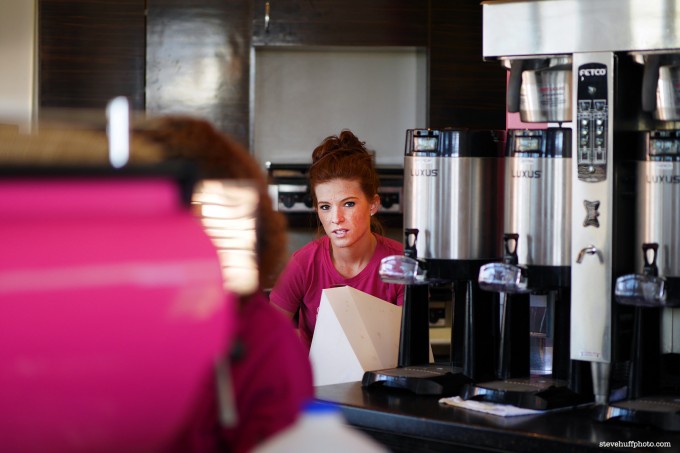

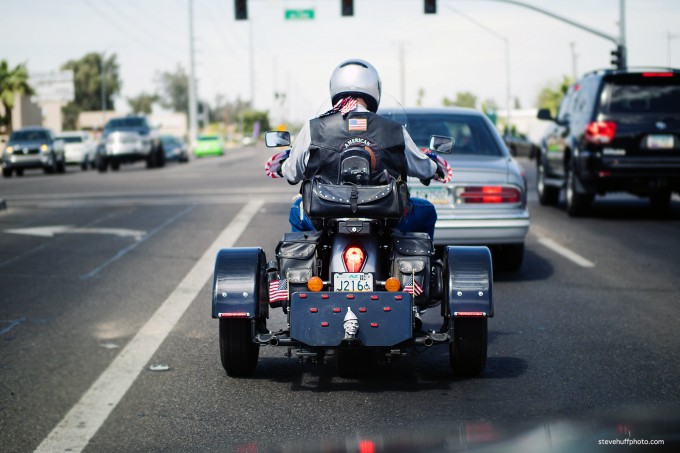
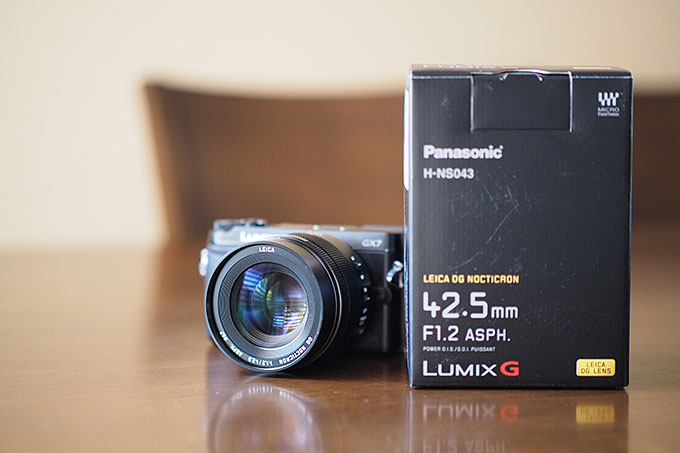
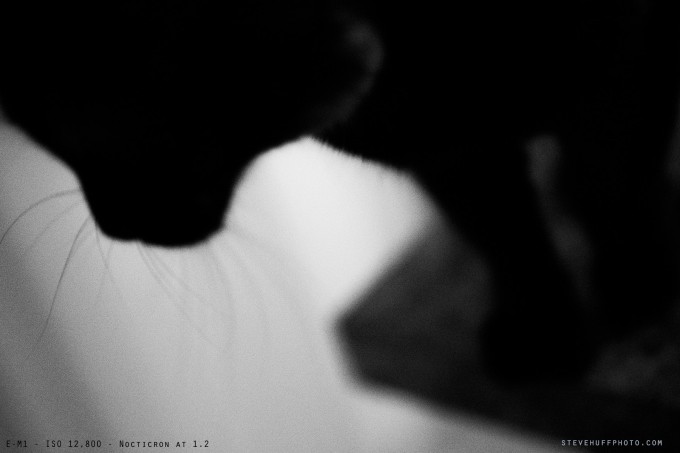
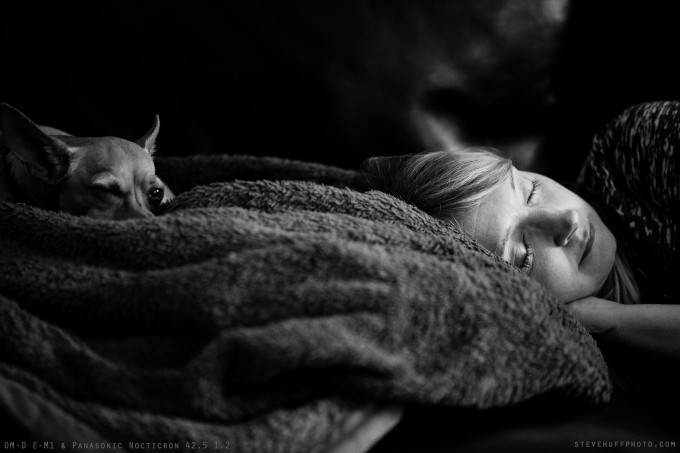
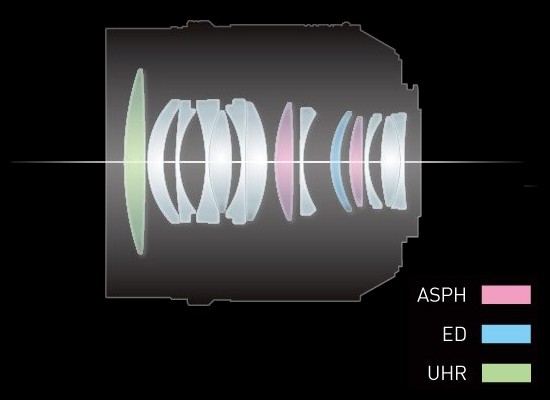
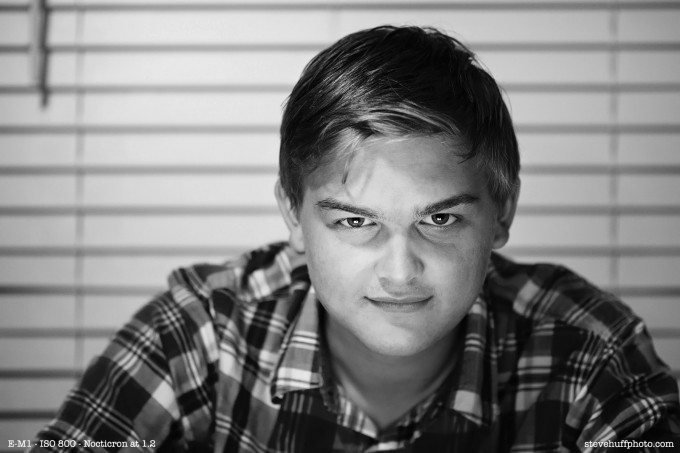
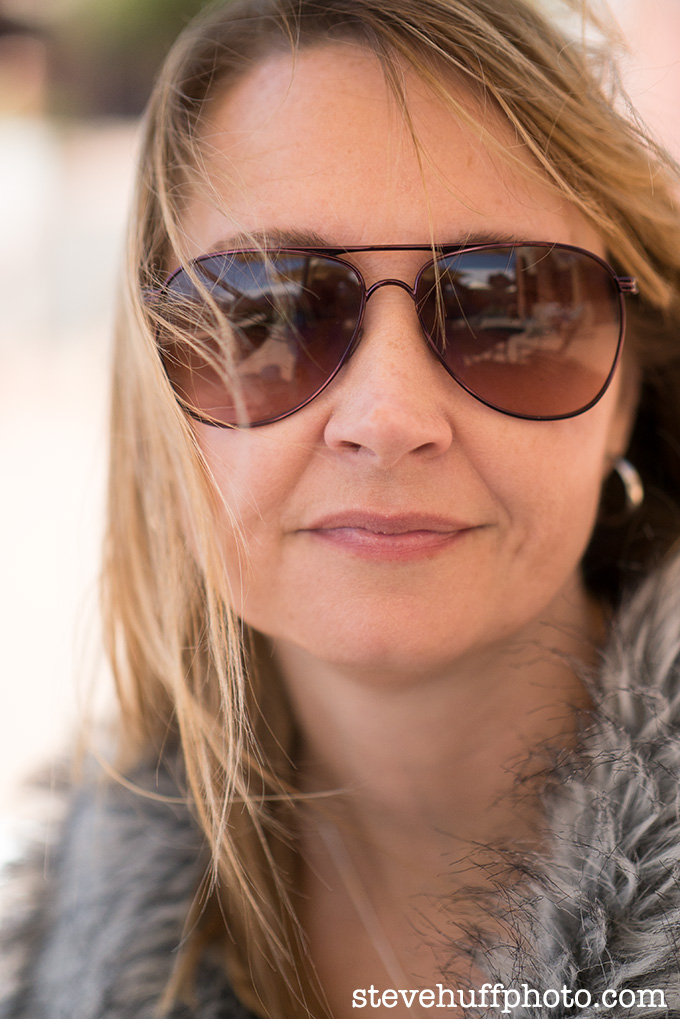
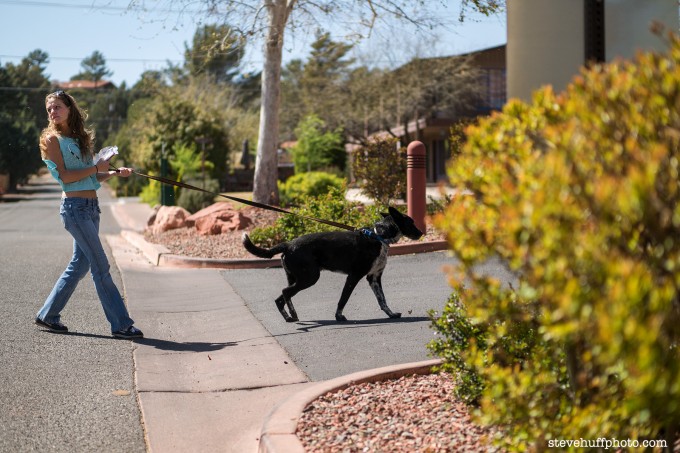
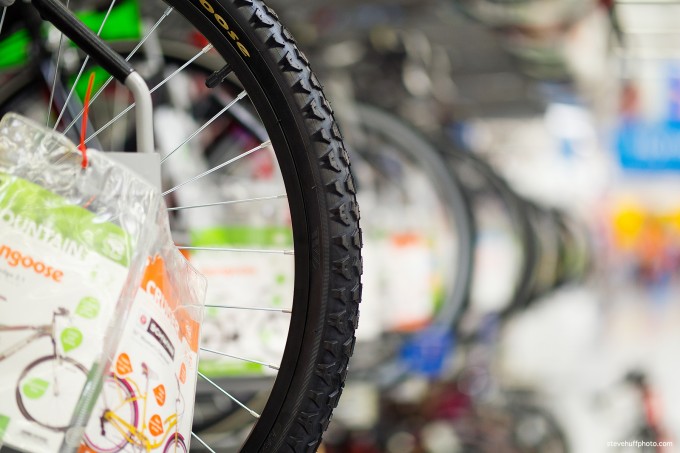
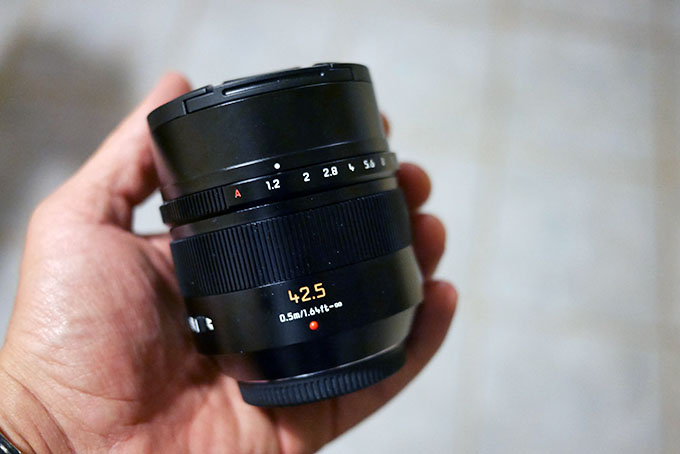
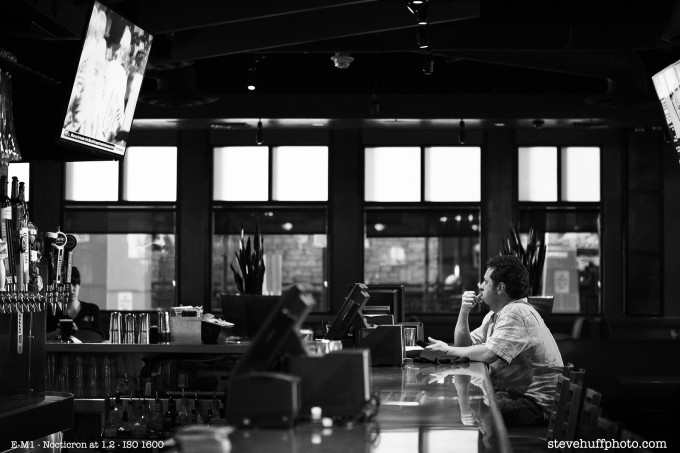
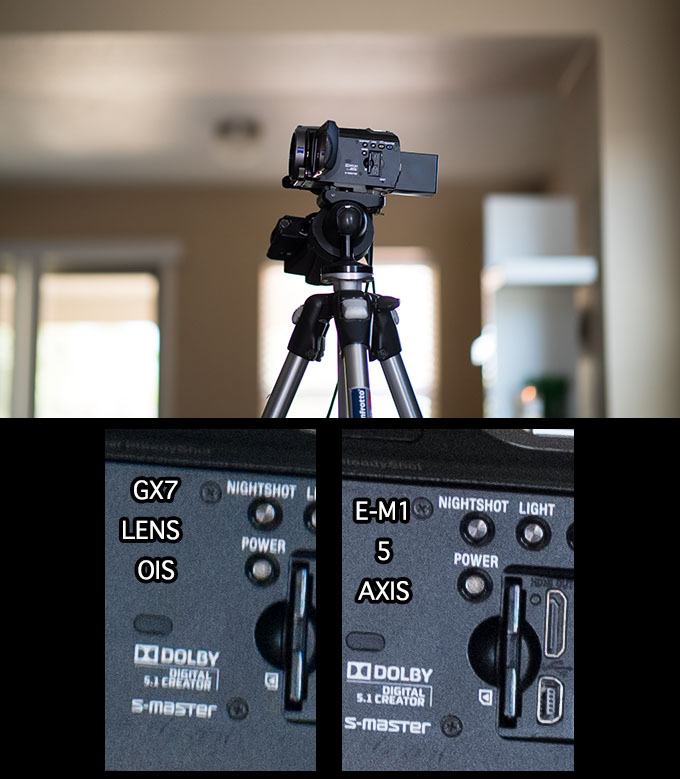
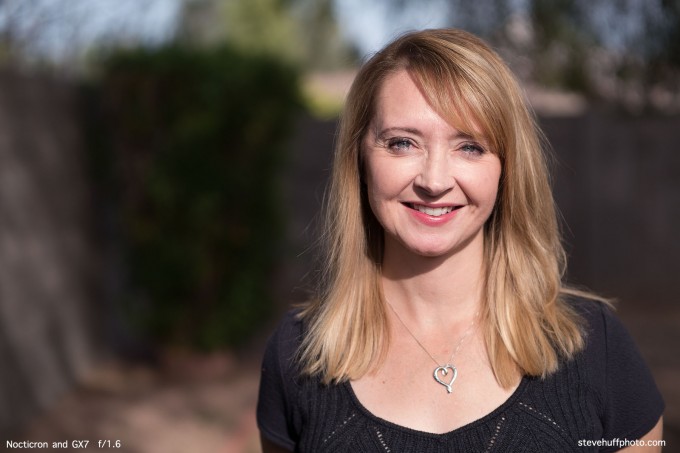
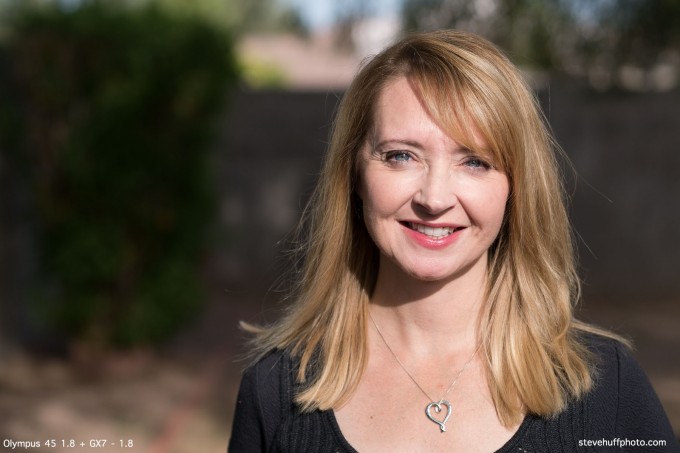
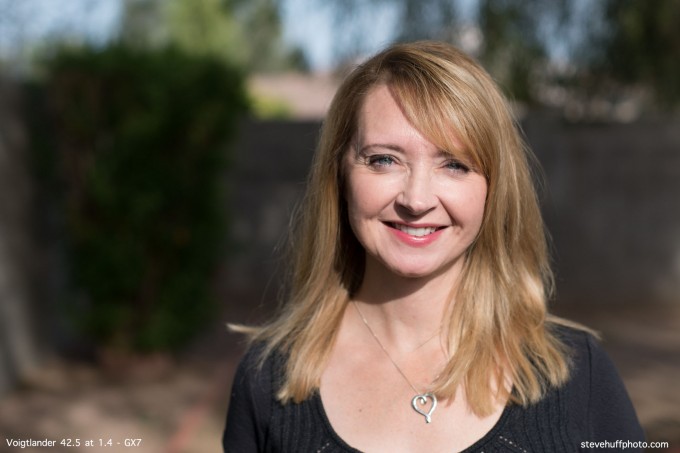
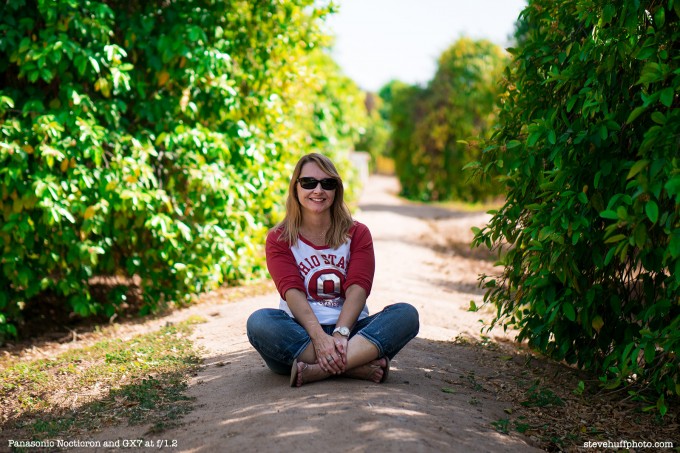

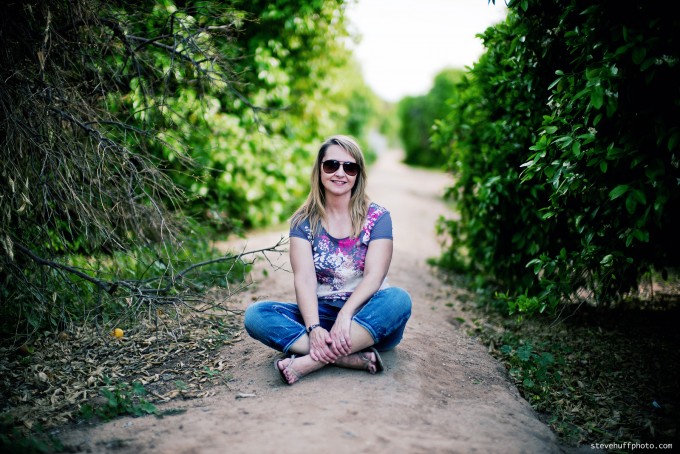
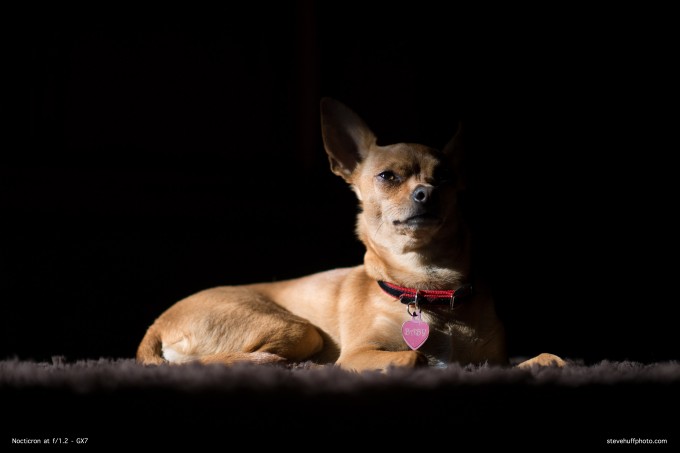
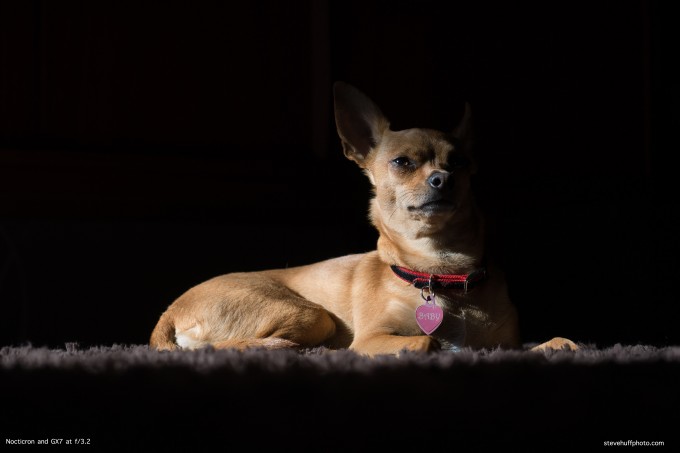
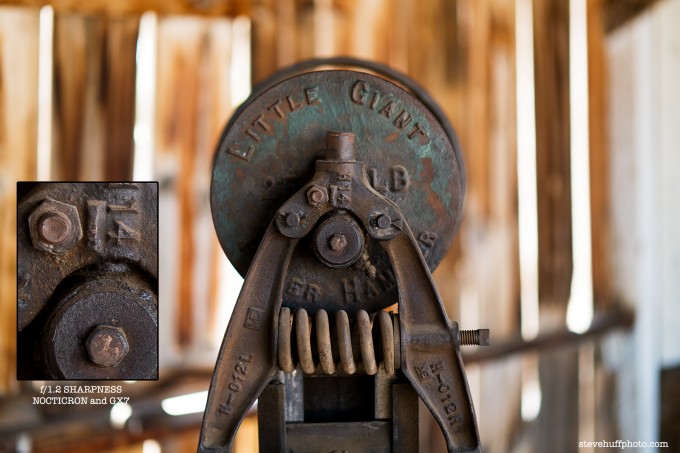
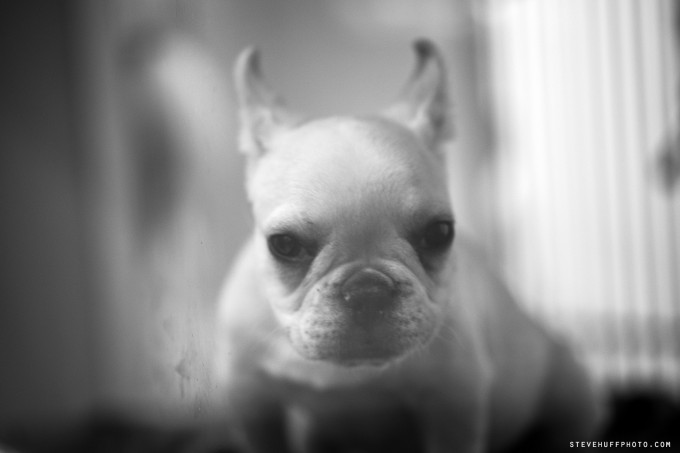
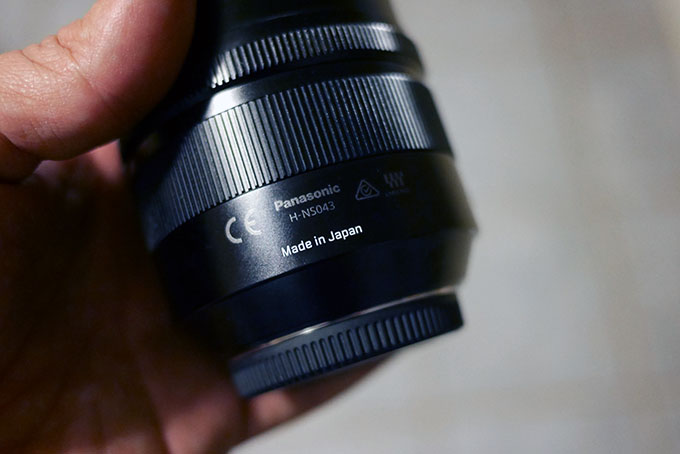
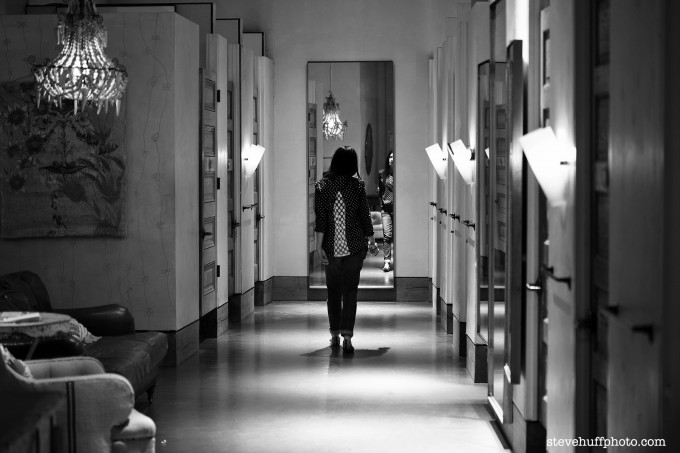
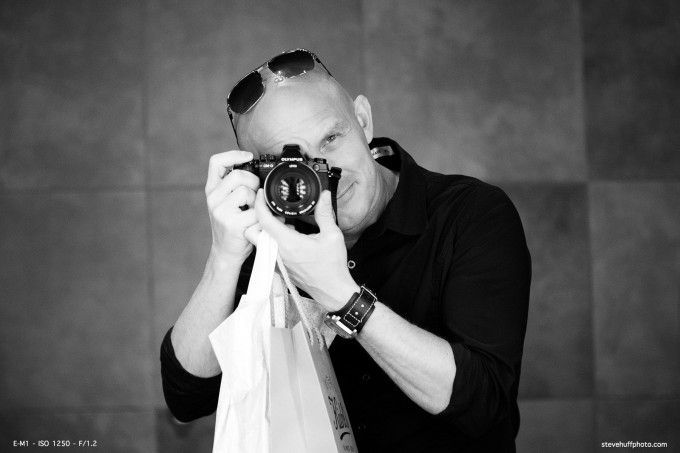
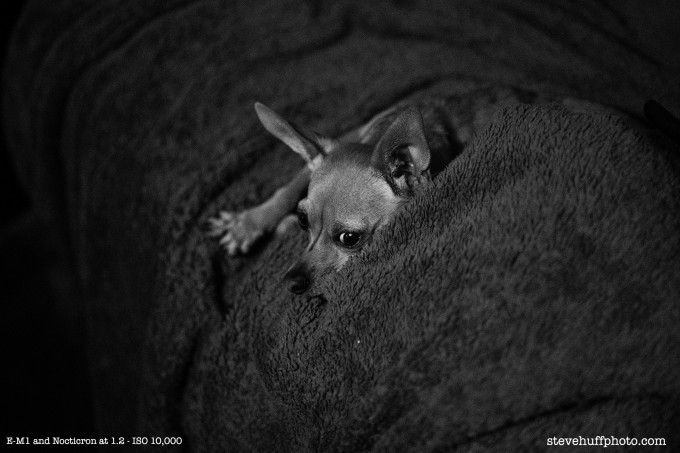
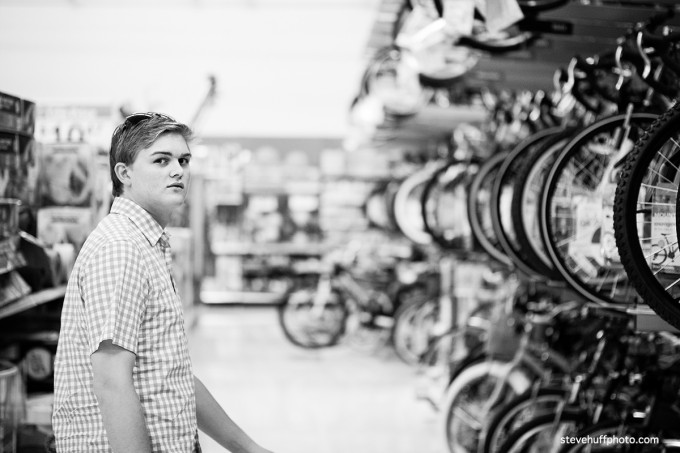
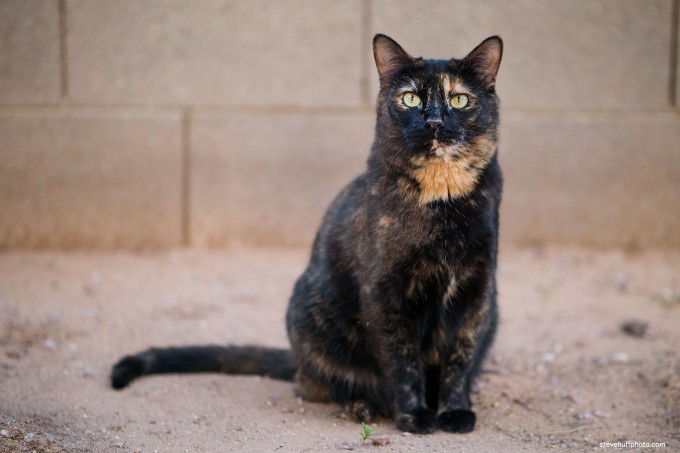
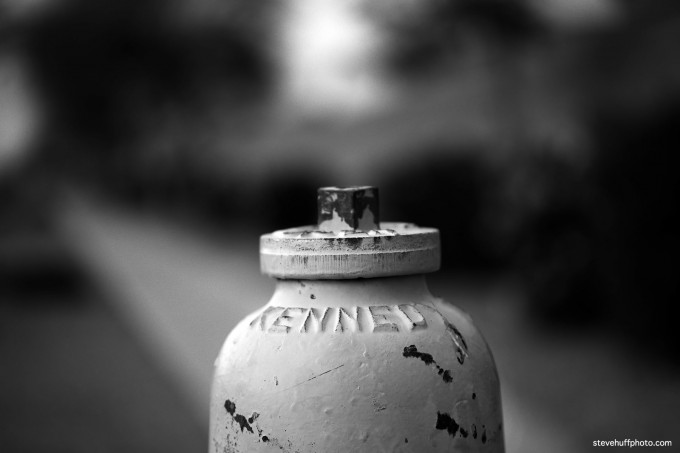
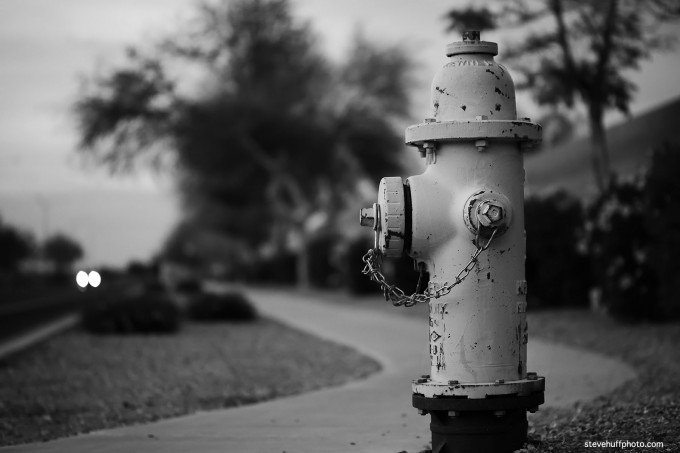
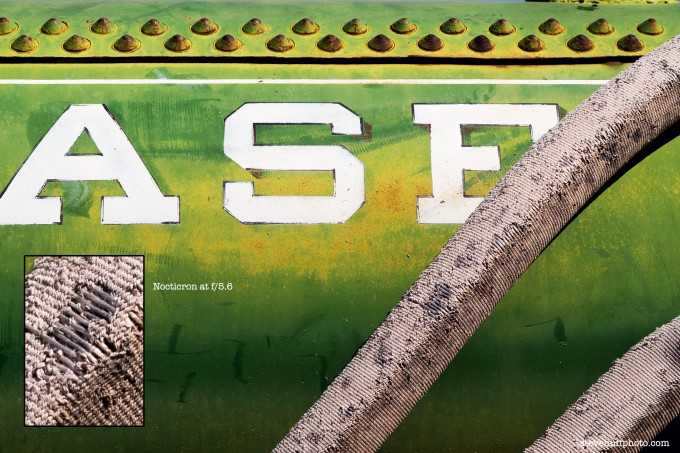
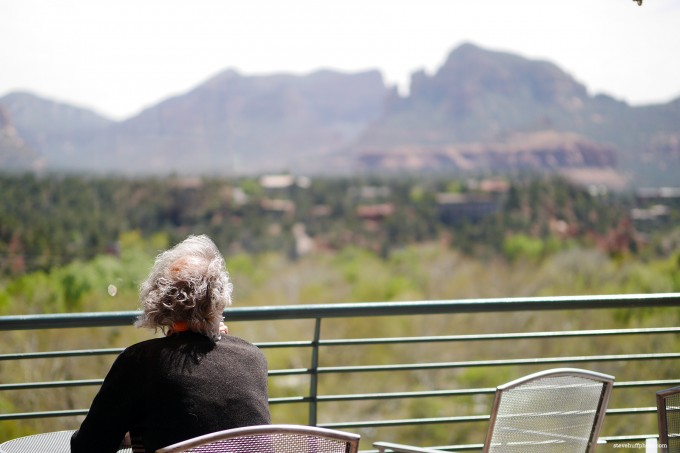
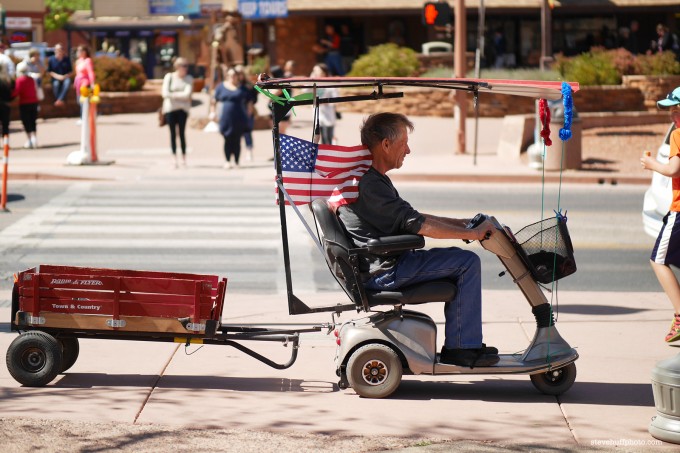
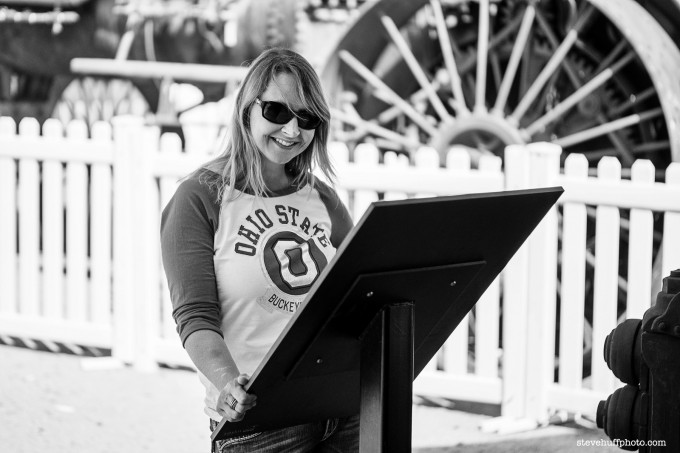

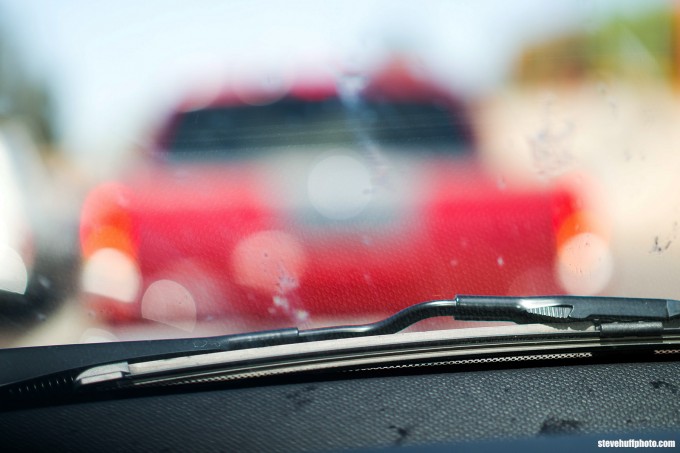

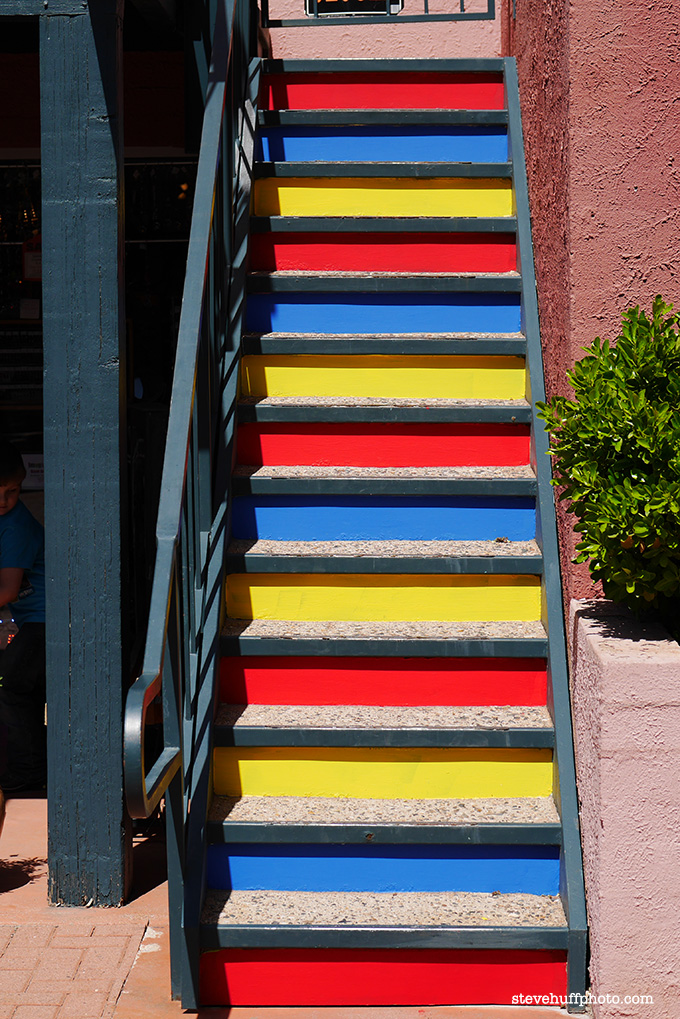
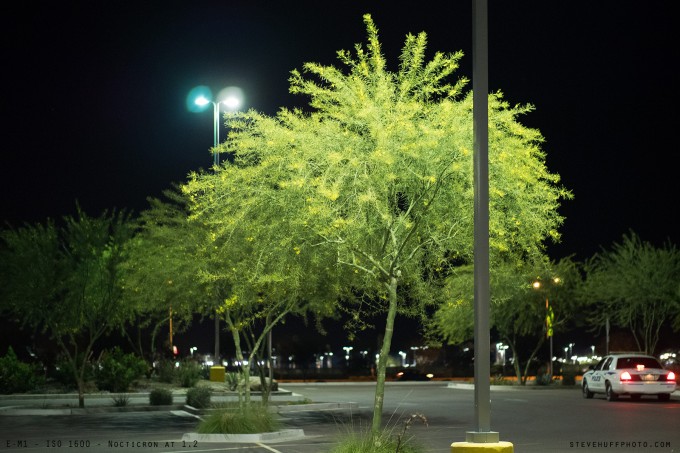
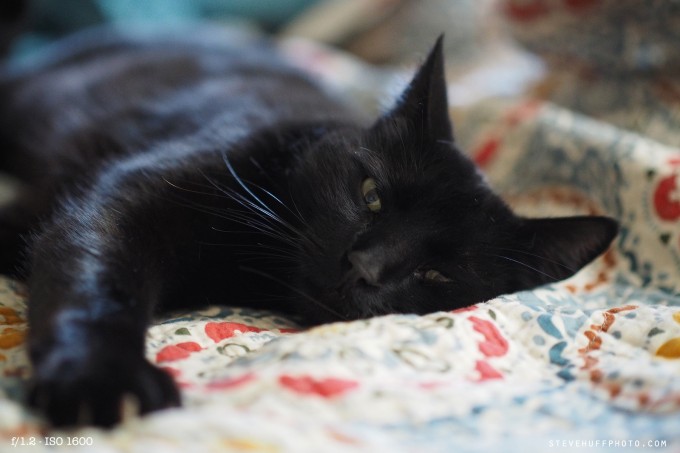
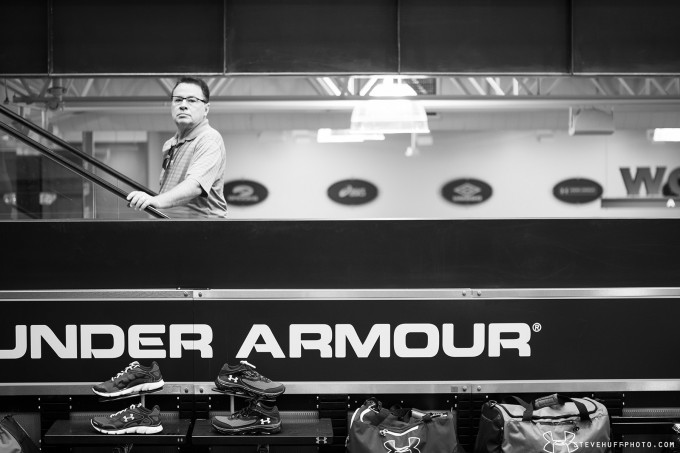
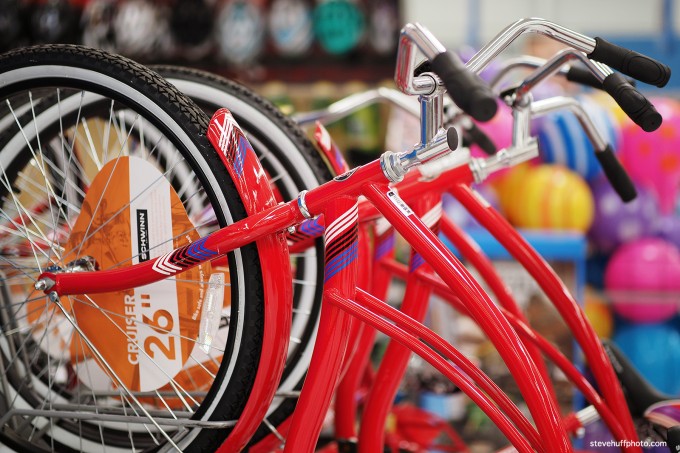
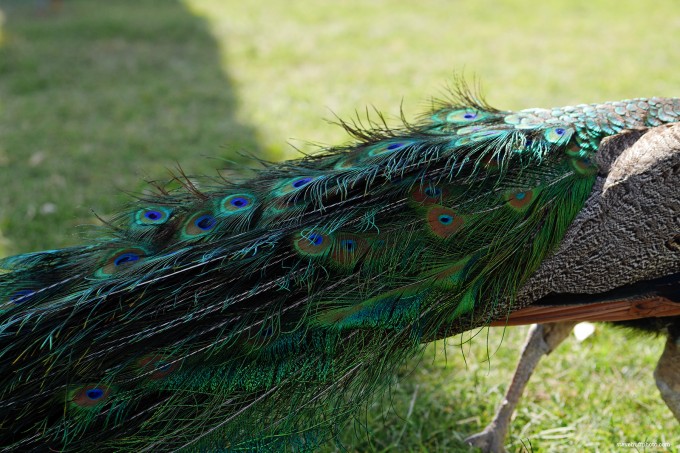
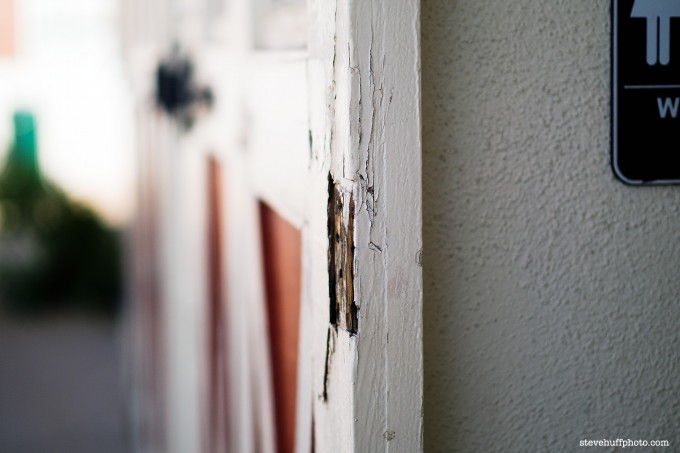
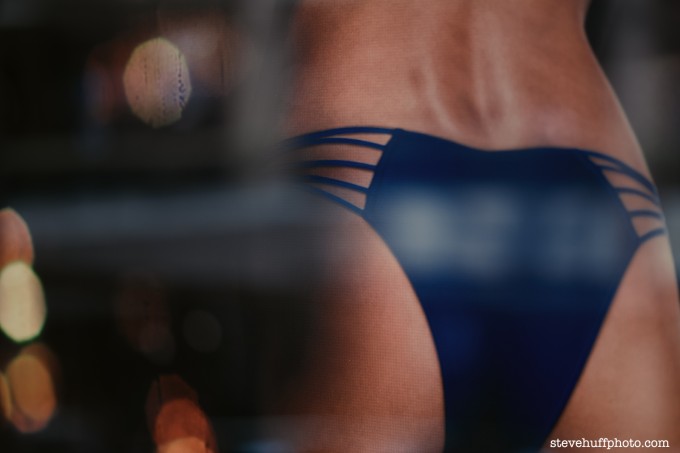
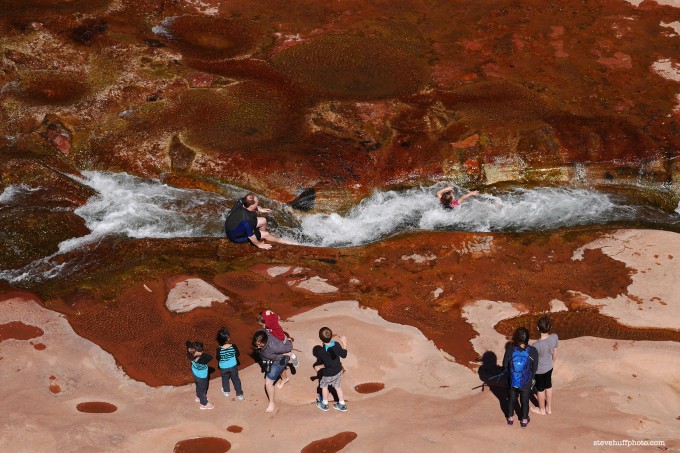
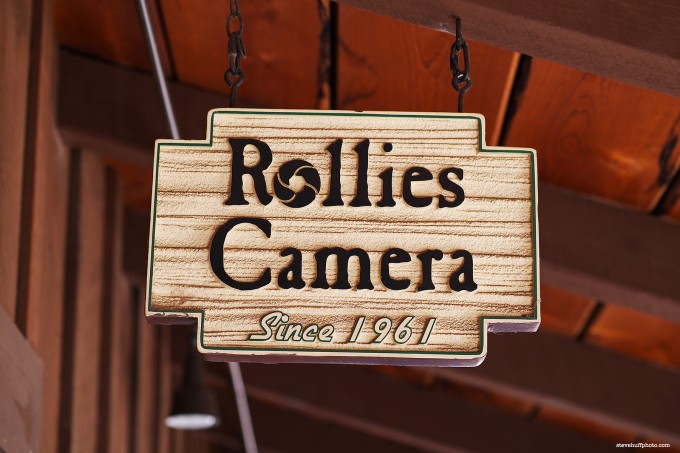

Hi Steve
Just to say thank you for all your informative reviews over the years. I’ve only just recently decided to get a portrait lens for my EM1mk2 and bought the Nocticron with help from your review. Typically, the day after buying it I see a bargain Voigtlander 42.5 0.95 too in a secondhand store for £400 so I bought that too as I love quality build like a tank but not had much experience on manual focussing except some on my Leica Q. Now I’ll have the tough decision which lens to keep!
Cheers again for your great site, All the best.
Both of those are lovely lenses! The Voigt is a tank, and feels awesome. The Panasonic has AF and lovely color and rendering. Tough choice!
Hi Steve, Just received both lenses – the Voigtlander is like a solid block of metal! In my quick tests, the Voigt seems softer than the Nocticron wide open. Do you remember if this was your experience too? And was it a large difference? Just trying to work out if my Voigt is ‘faulty’ if indeed there is anything to go wrong with mf lenses. Cheers
The Voigt will be slightly softer wide open, even if critically nailing the focus. If you are off with focus just a hair, you will lose sharpness. So the Nocticron is more hit than miss, and the Voigt offers a unique rendering but you may get some misses due to being manual focus.
Hi Steve, I just love all of your real world honest reviews! This review is very informative.
Could you please tell me how this Nocticron compares to the 1 nikkor 32mm f1.2 ?
The Nikkor 32mm f1.2 is my favorite lens I have ever used for portraits and street photography.
It was expensive although I felt it was worth every penny. I am assuming from your review that the Nocticron is even better. I only hang onto the nikon 1 because of the 32 1.2 . Is it advisable to sell the Nikon 1 and 32 1.2 to fund the Nocticron? Your opinion is highly valued.
Thank You Steve
Hi Steve, loved you review, thank you! I just want to ask, for the picture “Inside of a restaurant at f/1.2 – Olympus E-M1”, what did you use to process it into B&W? I absolutely loved the look. I’m playing around with B&W conversions right now with hit and miss results. A point in the right direction would be much appreciated!
Thank you! The only B&W tool I use is Alien Skin Exposure. One click 😉
Thanks for the info Steve, I’ll give it a try!
Hello . my business partner used a fillable UCA-RE example at this place http://goo.gl/QHxuL0
Thought-provoking commentary , I am thankful for the info , Does anyone know where my company would be able to acquire a template PUP CS Form 212 copy to work with ?
Hi Steve,
I really enjoy reading your reviews and it got me hooked to Leica. The more I look at Leica the more I love the rendering and colors, more than any other lenses. I currently have a Oly E-P5 with Voigt. 25mm 0.95 / Oly 45mm 1.4 / Pan 20mm 1.7.
Now I’m in a bit of a dillema. Your review on the Nocticron is amazing. Shall I buy this Nocticron 42.5mm 1.2 or shall I save a good year and get myself a A7RII with a Leica Summicron 75mm 2.0.
Many thanks
I made the mistake of taking a few shots with this lens on my E-M1 at a trade show. I’m now wondering whether to buy a Nocticron or not. I can definitely see that compared to the Oly 45 it’s slight sharper, slightly better in micro-contrast, slightly better in blur quantity and quality and notable better in edge sharpness wide open. However, the question is whether these differences are worth the extra cash. I guess we all need make our own decisions on that! However, what I will say is that some playing around with the images in PP I can get them pretty close to each other. The example below shows the two shots Steve took of Debby with the Oly and the Nocticron, but I’ve tweaked the Oly shot (slightly warmed it, added some clarity in LR). I think they’re now pretty close:
http://www.familekaye.com/OlyNoctComp.JPG
I do still like the Nocticron look though.
Oops – that link should be:
http://www.famillekaye.com/OlyNoctComp.JPG
Well, if the Panasonic 20 mm was new on the scene, it would amaze us,
Bought the lense a month ago. (Actually traded my 12-40 Olympus Pro Lense for it plus $1000 cash.) not much opportunity to use it because was still using my Panasonic 20 mm 1.7 on it. Used the 42.5 for Christmas this year and I can tell you the lense might never come off my OMD EM 1. It is worth every penny. Very warm almost cyan type renderings. Was comparing it to my brothers Zeis lens on a Sony NEX 7 and although his images were more crisp they lacked the vijay and the artistic rendering of this lense.
Ok, Steve you made me buy one : )
Finally, after months of wondering whether I should jump and buy this lens or not (after all, and as Steve, I also had the Olympus M Zuiko 45), I did it. The camera shop where I usually purchase most of my gear had a very hot deal and that was the push I had been waiting for: no more postponing!
Since I walked away from the store with the lens attached to my GH3, I have yet to take it off or shoot with any other lens. The feel and, specially, the rendering that comes out of this glass is simply in a league of its own in the m4/3 realm. Nothing I have tried before in the system comes close to the transparency and subtlety of the images taken with the Nocticron.
You can read my full impressions and see plenty of images at my blog:
http://gonzalobroto.blogspot.com/2014/12/a-friend-nobody-called-review-of.html
Based on this review I traded in my 12-40 MM pro lens and got this lens. Incredible. I do not consider myself a photographer in the same league as serious photographers or even serious hobbyists, but when I take pictures in to get developed at the photography store (not a big box store) they asked me who the photographer is and what my system is because they have not seen pictures like this. (And I mainly take pictures of my kids in different settings, nothing artistic or a picture taking outing.) I use the EM-1 and along with this lens I have the Panasonic 1.7 for its portability and the Olympus 75-300 zoom for my kids sporting events. The 42.5 lens is simply incredible. If I could only have one lens for my camera this would be it. Worth every penny.
Hi Steve! Thank you for the review.
Is there a version of this Panasonic-Leica Nocticron 42.5 f/1.2 without lens stabilization? I want to use it on my Olympus E-M1 so I will be using on-camera stabilization all the way.
If so, that would make the lens thinner, lighter and cheaper wouldn’t it?!
There is only one Nocticron and they will not make another version.
Steve – I’m thinking of upgrading my Oly 45mm to the Pana Leica 42.5. I also really like the Voigtlander 50mm 1.5 Chrome edition and might end up getting both eventually but would like to start with one of them first. Do they have any similarities or are they entirely different lenses and shouldn’t be compared. I’m shooting on an OM1 and understand I would have to use an M mount for the Voigtlander. Thanks
A few years ago, using a Nikon FM3A, arguably the best mechanical camera ever made, and a 50 mm and 1.8 I think, I was able to take a pix with a 3D rendering very similar to what I’m seeing in the image shot using a Leica Noctilux. The image of Steve’s fiancee in the park (Steve you should consider numbering your pix for easy reference … :)) and when I jogged my memory a bit … I realized that I had taken a pix with similar 3D qualities with my old Rollei SE35. I know this for sure, because the setting is nearly same, the foliage on both sides and my friend was in between. The light and focus was a fluke because the rollei is such a quirky camera that I love nevertheless.
From the images above … I actually find the Oly 45mm much more pleasing than the Voigtlander and Panasonic better than Olympus just by a bit. The Leica of course offers betters 3D visuals. I wonder if it is just me but I have heard so much about Voigtlander and I’m considering owning atleast one of its .95 series …
Hi Steve,
How would you say the 42.5’s image quality compares to the ol’ 4/3 50mm f2 macro? DXOMark has no data for the 50 macro, which is surprising to me.
Well, I used to own the 50 f/2 macro..the Nocticron beats it in all areas besides macro…but the Noct is also larger. – it is faster, sharp at 1.2 and has IS built in.
https://www.flickr.com/photos/28633816@N08/sets/72157643106521634/
Here is a link to some images I have taken with lens ….
finally there is one comparing with 85LII, I’ve been wondering about this..do you have photos that I and anybody else can see that? I was considering to get rid of my 5D3 and its L lenses, but before that I’d like to know if the next platform (E-M1) can at least hold the same quality using quality lenses like Nocticron or Voigt…
How is the MF ring of this lens? Smooth? Loose?
I have read this review and most of the questions many times. Since my retirement, I have been asked to shoot many weddings. I receive equipment for this. At this time, I have to chose between this lens or the manual focus from Voigtlander. AF vs MF is not an issue for me. I use the E-M5, not the M1. I have a E-M10 on the way as a 2nd camera.
All of your comparisons seem to be with the Olympus 1.8. Some places you even say best autofocus. How does this compare with the Voigtlander M43 42.5mm f/.95 and which would you recommend?
I prefer this lens to the Voigtlander.
mind to explain in a few words Steve? just like many people here, I am in between Voigt and Nocticron..I wish the aperture ring works on EM1 and it does not have OIS as it adds bulk and weight, also costs more.. Thanks!
For me, it is no contest. I would take the Nocticron in a Nano Second. It is a special lens, well worth the cost for its unique capabilities. Doesn’t matter that the ring does not work on Oly, as you just change the aperture as you normally do. Doesn’t take away from the amazing optics. The Nocticron is in the top 3 of the best lenses I have ever tested.
Steve, all the perpetual naysayers & tech. inspectors – do NOT detract one iota from REALITY – the reason for the tremendous popularity of this blog – you DEMONSTRATE in the FIELD, what can be done by DOING IT. The similarities that you point out – ie. the Pan. Noct. & the Leica Noct. and the GUT feel of the IMAGE that emanates from each – is really what is missing from most of the rest of the blogs on the web.
Kudos ! That said – I am moving more and more — BACK to F I L M ! The R E A L ~ R A W – esp. MEDIUM FORMAT for PORTRAITS & LANDSCAPES : Note – a FOLDER is pocketable in Medium Format. Ohhhhhhhh Yeeeeeaaaaaaaaah !
Thanks so much!
Steve, you are always a breath of fresh air…
I want to tell you straight up, the shots of Debby
with the Noct. are exceptional ! No apologies
necessary for the 4/3 format. Wow !
And ~ Brandon is looking like a man –
all of a sudden. Not a boy anymore…
I have always enjoyed your blog, and will
go out of my way to link re. purchases.
Thank you …
Thanks so much 🙂
Ugh why does every single review of a MFT product have to have comments about FF being superior. It is getting maddening having to sift them out there are over 375 mentions of FF or Full Frame on this page alone.
It is what it is. Some will never understand that M 4/3, today, can compete with any camera in IQ. The ONLY area with M 4/3 that you get less of compared to FF is shallow DOF.
If DOF is such a concern, why stop at 135 format? Why not go to Medium and Large format? M43 seems to be a great companion for some of the medium format cameras out there like the Hasselblads. I think it really depends on what the end product people are looking for. IMO M43 compares quite well to 135 format but medium format still gets more detail and DR.
Medium and Large format..who wants to carry those around every day? Not me.
Well…I rented the lens and all I can say is…Wow ! Like so many others have said…if you shoot portraits…this is a difference maker…I have the 75 1.8 and will continue to use that for my portrait work…until I can save up to get this nocticron…the bokeh is truly creamy…this is good for product shots and food photography as well…renting this has changed my mind…it is the next lens for me to get.
well Steve the 42.5 does have a different look…especially the bokeh and the color…the skin tones are much more true and the bokeh is creamier than the zuiko 45 1.8…but is it 1300 dollars better…not for my purposes…with a little effort I can achieve a similar look in post…thanks for the wonderful review
Hey Steve great review I really am thinking of buying this lens the only concern I have with this lens is that it’s not weatherproof can you share your thoughts about this lens not being weatherproof what are the dangers I am faced if I have humidity and such.
Think about it..weatherproof lenses did not start showing up until recently. We all managed to get along without all of this time. I have never needed a weatherproof lens, even when shooting in rain. Never an issue which is why I do not worry about it. Leica lenses that are 40-50 years old, none are weatherproof yet they still function as new.
I bought the famous Olympus 60mm f/2.8 Macro on end of the february and first thing what I did was to screw on it the protection filter so I can clean up the lens without worries in rain etc. I toke only few shots indoors with it because there was no flora or fauna to shoot, so I dropped the lens to smooth eye glasses cover bag and placed it to bottom of my camera bag waiting spring.
Now few days ago it has came a time to use the lens on norther atmosphere as flora has started to grow and small insects waking up.
I unpacked the lens and mounted on camera and did few test shots before leaving to outdoor. After couple hours coming back in and swapping lens I noticed that the rear glass had dust particle in it, like 0.5mm by size. So typical blow from side (never to direction of the elements) didn’t remove it, closer checking with sunlight reflecting revealed that the dust particle was behind the rear element. Then circling around the lens against sun checking what was other elements status and all of them has dust on them. Small but visible when seen against lens black inner side.
And then I noticed that the lens plastic had some scratches on it, but I don’t care about them. Only from the dust particle. The lens was brand new when I unpacked it from sealed Olympus box and it had even the transparent cover sticker on the distance meter.
Made few test shots then against blue sky on next day, only to find out that the E-M1 sensor is dirty. I never got any dust particles to E-520 sensor, what does have the mirror and mechanical shutter covering the sensor but still….. Turned camera On/Of few times facing down and didn’t help. Started the pixel mapping as well but didn’t help either. The dust particles are stuck on the sensor and there is nothing I can do for it, as Olympus doesn’t allow any sensor cleaning methods under warranty because IBIS and it has the sensor cleaning sheeting.
Sure the dust isn’t visible on shots until going over f/8 and against blue/light smooth scene.
But I can assure that first time really getting weather proof gear and in first month there are more dust than I have never got on any other camera.
Especially the 500€ ($700) 60mm Macro having lots of dust inside is just thing what gets me crazy.
I had read about lens renting stores not allowing their gear to be used on color marathons:
http://www.lensrentals.com/blog/2013/05/how-to-ruin-your-gear-in-5-minutes-without-water
And that was exactly the size of the particles I can see in the lens, not much, like one or two dozen. But still I can pull 50 years old OM lenses from dusty shelf and they are perfectly clear from inside.
I don’t know what it would cost to me to send E-M1 + 60mm to Olympus for cleaning up, probably a 1/4 of the body price….
I use to trust blindly to E-520 sensor cleaning system, so much that I dared to change lenses almost in a light sand storm conditions, but still always doing it smart way, quickly, downward, turned Off, blocking the wind with body etc.
But now when I have protected the new gear even more and I have found more dust than ever, it has raised some serious thoughts about mirrorless design when there isn’t even mechanical doors protecting the sensor while it is turned off when swapping lenses.
And I know about legal problems it brings in different countries if camera/lens manufacturer promotes their products as “Dust/Water/Freeze sealed/resistant” instead “Dust/Water/Freeze proof” what translates directly to “improved protection but not perfect”. As no sealing is 100% sure when it comes to water, dust and moisture and especially for time.
Water especially can be a real *itch, by experience of build construcion problems what newer buildings usually have when compared to buildings before 60’s. A single drop doesn’t harm, but when that single drop gets enough time to sit or seal gets repeatedly a single drop, water can get pass almost anything.
Why to get “weather proof” gear if it doesn’t work?
Very classy rendering. A great lens, for sure.
Steve,
Great review. I think you do a great job of illustrating micro-contrast and how it provides 3d pop.
Micro-four Thirds has a great number of choices now. I think other companies (especially Sony) need to wake up and provide better options to their customers…!
Now that this lens (42.5) and the 12-40 are replacing a lot of other lenses, do you have a revised dream team of micro-four thirds primes and zooms…?
Minimalist lens collection:
12-40mm
42.5mm
75mm
100-300…?
Tks.
Hi Steve! I really like your reviews, because they show equipment in practical way, but this one is crazy) This lens is ruining m4\3 system. Why it costs 1600$? For bright 1.2 aperture, bokeh and sharpness? Sounds good, but if you think about it, 45 1.8 for 400$ gives you 1.8 aperture, bokeh and sharpness and in bokeh department there is not that much difference for 1200$, AND if you are looking for bokeh why the hell you need m4/3 system when you can buy second market ff body and equivalent lens (for full frame you need only 85mm 2.4 lens for the same/better bokeh) which will cost like this lens 1600-2000$ (for example canon 5dm2 and 85 1.8 with much better rendering than 2.4 lens and this 1.2 too). Of course 5dm2 older camera\technology, but if you not always shoot in nighttime it will be pretty good (no stab). Marketing gone wild today. Also, when you compare 42,5 1.2 and noct 50 0.95 it sounds bad, 0.95 is overpriced as hell, but rendering of 1.2 is nowhere near to the noct, i mean those pictures of your comparison, only blind man will see that they have something in common. I think this 42,5 should not exist, because m4\3 is not about bokeh and highpriced lenses, if you need bokeh go FF body and lens combo for the price of this lens and you will have much better rendering.
Well, I think you are incorrect as CHOICE is ALWAYS good. CHOICE will not and can not ruin a system. As I said in the video and review, this lens is for those who want “the best” Micro 4/3 has to offer. You do not HAVE To buy this lens, but it is there for those who want it and it IS indeed a better lens than the 45 1.8. As for you FF DSLR comparison, those who own an E-M1, GX7 or similar DO NOT WANT a huge DSLR, and yes, a 5D and 85mm lens is MUCH larger than a GX7 and Nocticron. Also slower. (yes, an E-M1 and Noct is faster and more responsive then a 5D). In any case, choice is good. Just as Canon has the 85 1.8 AND 85L and 50 1.8, 50 1.4 and 50 1.2. CHOICE…
Micro 4/3 can compete with any format for IQ, this has been shown and proven over and over and over again by MANY users, pros, reviewers and enthusiasts.
I have a FF body (Leica M) but I enjoy M 4/3 more as it is much more versatile and just as fun to use. IQ wise, for me, both are just as good as each other. I would never buy a DSLR again. No need.
Of course everyone have a choice and this lens is sure really good, but people may understand this review from one side, like “this lens is super-uber-cool i need to buy it” (this is what i see in comments). But from their need for nice rendering style there are may be better choices for less money. And i’m not talking about AF speed or anything else when comparing ff 5d to m4/3 omd or Pan, i’m talking about bokeh only, because the whole point of 1.2 is bokeh, this is why people would buy it, not af speed, weight, stabiliser or sharpness. I mean when bokeh is the main thing you looking for in a lens and you ready to pay 1600$ for it, weight of ff may not be that big at all when it will give you twice bokeh you want=)
P.S. dont be angry at me, its only opinion of one man and sorry for bad english, i’m from russia)
Viktor,
Don’t do yourself down, your English is fine and the points you are making are perfectly understood. If the main thing people are wanting in their images is bokeh, then this should be the determining factor in deciding what kit provides this.
Taking an extreme example, if this desired bokeh effect can equally be met by an older digital camera and lens that costs 1/10th the cost of this lens, then it would make sense to get this, wouldn’t it?
Viktor:
It’s expensive, to be sure. But it fills an important hole in the m4/3 lineup that will appeal to certain professionals and very serious amateurs using this system.
The real benefit with this lens is a set up that is much smaller and lighter than say a 5DIII with an 85mm f/1.2. While the out-of-focus rendering of the Canon will be a bit softer, that full frame setup doesn’t give you image stabilization, either.
Plus, the Canon lens is $600 more expensive than this Panny-Leica lens.
The E-M1 with the Noctricon sounds like a very sweet setup for those traveling light or on the go … and, of course, for those who can afford it.
For those serious about portrait photography a FF DSLR & f1.8 85 mm lens is the better choice. Even the relatively expensive Nikon Df coupled with the excellent and inexpensive 1.8 85mm G does not cost more than a EM1 body with the Nocticron and weights only a little more. And IQ wise, there is no comparison. Replace the Df with a Nikon 610 and save some money compared to the mft combo.
Except the f1.8 85mm is not as well corrected and is softer in the corners at f1.8 than the Nocticron at f1.2. It’s also a stop slower than the Nocticron, though admittedly the high ISO performance of the Df more than compensates for this. Mainly though, the Df and 610, while not large for DSLRs, are still huge next to an OM-D E-M1. I’ve happily carried an E-M1 with Nocticron around all day – I would not feel the same about any FF DSLR. And IQ wise they are not as far away from each other as you imagine. I actually think you’d potentially get better (or at least as good) results from the OM-D E-M1/Nocticron vs Nikon 610/f1.8 85 in most scenarios. The Nocticron is a much better lens than the f1.8, wheras the Nikon shades it in ultimate IQ over the OM-D, but the OM-D has the fantastic IBIS. Horses for courses
Graeme,
If one is solely looking to this Panny lens for portraiture, imo, it is too sharp and won’t be that flattering for a woman’s portrait. And the fact that the lens retow is suggesting may have soft corners, or may not be as well corrected, why is this detrimental for portraiture?
One of the most pleasant lenses to use in 35mm portraiture is the venerable Leitz f4/90mm Elmar. It is not super-sharp and won’t offer the miniscule DoF that some seem to believe is necessary for good portraiture. But I wouldn’t mind betting, that this lens used by an experienced portrait photographer will give overall better portraits. Of course, the only problem is the crop factor of m4/3 which renders it unsuitable, except for FF users that can mount it on their camera. Hoorah for Sony A7/A7r.
That is nonsense (too sharp for portraits). The lens is not in any way too sharp for portraits. There are MANY good portrait lenses that are very sharp (Canon 85L is one of them, 90 Summicron APO is another). The Leica 90 f/4 is also fantastic for portraits when used on full frame, great lens but not when used on M 4/3. So that takes it out of the running for M 4/3 users.
Steve, I did qualify what I was posting by an “imo”. So my opinion is nonsense, then? OK, so is yours. LOL.
Well, I must have missed the IMO, sorry. But to state that this lens is not good for portraits because it is too sharp is not correct. At all. In fact, I would say it is just as good for portraits as most 85mm portrait lenses due to the lack of distortion, detail and micro contrast. (something the Canon 85L excels at as well). With this lens being a 42.5mm, usually, that is not a great focal length for portraits due to distortions but since this lens has no real distortion it does very well. In fact, it is quite the perfect portrait lens for this format. This is my opinion after using it extensively and using almost every other “portrait” lens made in recent years.
Steve, my friend, It’s an OPINION. That’s all.
Steve, I believe TerryB was trying to make the point that artistically, sharpness shouldn’t be your top priority in a portrait lens. Most people don’t want their skin blemishes to be crystal clear. And it’s funny, there are photographers now that will actually add in vignettes and blur in the corners of their portraits to mimic the “flaws” of those old portrait lenses, just to add character to the photo (I’m guilty of this). I’ve even adjusted the RAW processor to sharpen 0% when processing portraits so I don’t have to spend as much time on skin smoothing. Again, it just all depends on what you’re trying to achieve artistically and not let the equipment dictate your vision.
Yes, Jonathan. You’ve picked up on what lay behind my comment.
In a past eras, certain results were considered pleasing. For women, it was thought that a more pleasing, softer, result was required, for the reason you state – women generally don’t like see the natural flaws and blemishes in their skin, and make-up to hide these shows up too. Even today, I see adverts for software which at the touch of a button cleans up digital images to hide blemishes, which I assume will be more apparent with super sharp lenses. Hence you own view that software is often resorted to.
Now with a male portrait, the exact opposite is usually the case, and men don’t generally mind their natural features coming through. In fact a male craggy face would look decidedly odd shot in soft focus!
Looking at the work of the great Hollywood studio photographers, one can see all this.
Some reading this may even recall that, pre-war, Leitz even made a specific lens, the 90mm f2,2 Thambar for female portraiture.
Tastes change, but I bet the expectations of women having their portrait taken haven’t.
Steve, if you want an example from your own efforts, that studio shot you took using the A7r showed up the models blackheads, a feature latched onto by a respondent. This sort of thing is what basically lay behind my opinion that a lens can be too sharp.
“…artistically, sharpness shouldn’t be your top priority in a portrait lens.”
This is actually inaccurate. You absolutely want the lens to be as sharp as possible.
The dreamy effect is then adjustable through your aperture control, giving you selective fall-off from sharp to soft regions.
For example, you almost always want the eyes (or at least one eye) to be tack sharp (at least the vast majority of portrait photographers do).
You can then fall into progressive out-of-focus elements from there. Blemishes etc can be removed during retouching.
It’s also quite easy to add soft focus later in post. It’s impossible, however, to sharpen a soft image after the fact.
Terry, agreed. Robert, I was talking more about the artistic side and FIRST priority. Of course sharpness, proper focus, and DOF should be important, but putting sharpness first above all seems like forgetting the purpose of the lens, which is to make the person look good, not to make every detail of the person tack sharp. But if that’s exactly what your style needs, that’s fine, just make it an artistic choice rather than a gospel rule that can’t be broken.
I’m also an advocate for getting as much right in camera so you don’t have to rely so much in post. I don’t ever use photoshop anymore, iPhoto is actually where I spend most if my time for personal photos. For client work, Aperture is more than powerful enough for my editing needs.
Robert,
I’m not sure what your comments actually mean (1:24 am) as there are some non sequiturs in your propositions.
Firstly, you say absolutely a sharp lens is necessary, but then go on to say that the dreamy effect is controlled by the aperture control. EVERY lens gets sharper as it is stopped down from its maximum aperture to around f5.6/f8, so this does not give you a dreamy effect, just a sharper image over a greater depth due to depth of field. The “dreamy” effect may be achievable when diffraction comes into play by stopping down, but then so has the depth of field increased even more.
Having the eyes tack sharp, or simply sharp, this is a recognised necessity for good portraiture, so issues here.
But then I come to your use of extensive post processing to achieve the effect a good portrait lens will give naturally, and to remove all the blemishes your super sharp lens highlights.
I’m not deeply into post processing, I try and get my images right first time, and only use a modicum of PP, so whilst I have reservations that the PP you propose to add soft focus will emulate a good lens, I’m unable to comment on.
But what I can say, is you are relying on extensive PP to wipe out most of what your super sharp lens has produced.
In photography, there are many ways to skin a cat, so one way isn’t necessarily the right or wrong way. To say something is wrong or inaccurate doesn’t really exist when it comes to opinion.
It is my opinion but to get 15 portraits right at the taking stage has to be a better use of my time than to spend a lot of time extensively manipulating the same images in post processing.
Be careful with your generalization about what’s “better.” Portrait photography is a broad genre and there are a lot of different approaches and equipment used. If you want really shallow DOF for better separation of subject from background, it’s hard to beat an 85mm f/1.8 on FF. As for size and weight, this Panasonic 42.5mm lens is fairly large, bigger and heavier than the Canon 85mm f/1.8 USM. Sure, FF bodies are bigger and heavier, but that’s the trade off for the advantages FF still has (low light performance, dynamic range, etc.). Heck, if you want the ultimate IQ portrait setup, go medium or even large format. Corner sharpness is important in landscapes, but not so much in portraiture. I’ve seen really nice portaits with Lensbabies. So don’t let the equipment dictate what’s “better,” let your vision do that.
Making corner sharpness important when you’re considering shallow DoF; that’s a novel approach. Quality of out of focus areas would be where I would focus my attention. And yes, sharp (where you want it) images are important. How you can achieve that handheld, portrait fashion, with a small and lightweight body is anybody’s guess. IBIS (?) would probably help there, in an artificial way…
Yes a f1.8 85 on ff will have a shallower depth of field than a f1.2 42.5 on MFT (though not that much), but there’s not a 1.8 85 equivalent out there for FF thats as sharp to the edges wide open as the Nocticron – an optical advantage of having a smaller sensor (and I appreciate there are also disadvantages). If you always have your focus point near the center of the frame, then 1.8 85 on full frame is perfect, but I (bizarrely) don’t always compose my shots with focus at the center, so in this respect the Noctricron has an advantage (for me). Despite the Nocticron being a comparatively large lens, the body size is miniscule compared to any FF DSLR, and I can swap out the Nocticron for a number of great primes that are extremely compact if I want to travel really light. I also have a D800, but since I got the E-M1 it doesn’t get out much…
Correction means nothing when you shoot 1.8 (corners just out of focus), but 85 1.8 is really sharp lens (nikon not canon (canon is just good))
I shoot Canon, so I guess I’ll have to settle for just for a “good” lens. Since the Canon isn’t as sharp, I’ll be spending less time on skin smoothing in post. :-P.
Thats also right! Actually portraits have nothing with sharpness)
IQ wise there is a comparison. The Df will be softer and not as dynamic. I love the Df but the E-M1 and Noct can easily go head to head with it in IQ and offer better color/sharpness while being smaller and faster.
I don`t have the 42.5mm but an EM1 and a Df with the f1.8 85mm G. The Df sensor`s exceptional color rendition, tonal gradation, highlight and shadow detail is clearly out of reach for anything mft. Sharpening of mft files requires care to avoid artifacts and already above iso 400 IQ starts to suffer. The EM1 is an excellent camera and a joy to use, but not even close to the best FF sensor when sheer IQ matters.
http://www.ted.com/talks/barry_schwartz_on_the_paradox_of_choice
Choice is not always good, having a choice can be more harmful than not having a choice.
Great review Steve. So for those of us with both the 45/1.8 and the Voigt 42.5/0.95, would this be a good addition for portrait work or would you consider leaving one out of the bag? The Nocticron is definitely the more technically superior lens due to all the corrections on the lens but the Voigtlander is no slouch and gives a pretty different rendering.
If you have the Voigt and Oly you would not need this lens. If you did not have either and wanted the best in this focal length, the Nocticron would be it.
Thanks Steve! The sole purpose in my use of this FL is for portraiture and I wanted slightly thinner DOF but I also wanted fast transitioning between depth planes as well. I was using the Canon 1DX and 5D3 with 85LII before but the weight and consistency of images while hand holding in low light we’re not pleasing me, especially in low light. The Voigtlander is excellent but I don’t see a huge difference between the Nocticron and the Voigtlander in terms of portraiture. How do you feel about the rendering of the lens between full body landscape portraits and three quarter body landscape portraits with the lens?
So I picked up a Nocticron about 2 months ago and started putting it through the paces. It’s much better than the Nocticron for sure on almost every single shot. Micro-contrast/ rendering / contrast are higher on every single photo. Also locking focus is fast unlike the Canon 85LII. Overall, better photos are produced on this lens comparing with Canon
“It’s much better than the Nocticron..”
do you mean the Voigt? So Nocticron>Voigt, yes?
Yes, sorry for the confusion, much better than the Voigtlander across the board. Kind of shocking after using it compared to seeing test photos. It is outperforming the 85LII by quite a lot and for full body portraits, the bokeh is still present and better than expected. Compared to the Voigtlander, the optical corrections are better which leads to much better resolved photos.
finally there is one comparing with 85LII, I’ve been wondering about this..do you have photos that I and anybody else can see that? I was considering to get rid of my 5D3 and its L lenses, but before that I’d like to know if the next platform (E-M1) can at least hold the same quality using quality lenses like Nocticron or Voigt…
Unfortunately some L lenses can’t be replaced because m43 doesn’t have enough lenses yet. The 85LII is pretty much replaced by this Nocticron, it’s just that good. I would actually go so far to say that it’s better than the 85LII for my purposes which are hand-held, low-light, shooting with AF lock and recomposition. I am generalizing a bit but if you compare the images wide open between the 85LII and the Nocticron, the Nocticron won’t blur out the background completely but it will give you a “better” image overall. If you need extremely thin DOF, you would probably have to shoot with a medium format camera with a f/2 lens that’s made as well. Just for some background I sold my own 3 5DIIIs with all my L lenses after picking up the EM1 with a set of lenses. If I need a larger sensor, I would rather go up to medium format or go straight to a large scanback. If you’re considering switching systems, you have to see what’s more important to your style of shooting. The EM1 and Nocticron aren’t for everyone. It’s a compromise of DOF in order to get IBIS, better micro-contrast, weight, and cost. The Voigtlander was a great lens that slightly underperformed the 85LII. Even with great shot discipline, the Voigtlander isn’t as highly corrected as the Nocticron but gives you slightly thinner DOF compared to the Nocticron. The Nocticron however seems to have faster and smoother transition between planes which is what I think gives that 3D effect. It’s tough to use words to describe the rendering comparisons, the best way as Steve said is probably to pick a lens up and try it. It’s only when you feel it, and use it, you can really see the differences.
Steve,
Can you do a comparison with the sony FE 55mm f1.8?
I’m planning to make a purchase of either A7 + FE 55mm f1.8 or OMD EM10 + Leica Nocticron 42.5 f/1.2. I need to grasp an idea which will provide a better rendering to my taste.
I would but do not have the Sony on hand. The Sony, which I have used extensively is great. The Sony lens is pretty large, longer than the Nocticron but not as stout. As for rendering, the Nocticron is sharper t 1.2 than the Sony at 1.8 but the Sony is no slouch. Noct will focus faster on an E-M1 or GX7 or E-M10 than the Sony which can hunt, especially in low light.
Of course the Sony will offer the FF look. I would look at my Sony review or other Sony reviews online and compare the images to the Noct images. Then decide. The Noct will offer a more “noct” like rendering and the Sony a bit flatter.
Don’t forget to factor in your own style of shooting and the type of photography you’ll be doing. Rendering doesn’t matter if you can’t get the shot you want first, and those 2 bodies are vastly different. Sounds like you have money to spare, so you could rent both setups and try before you buy. I’m a fan of borrowlenses.com.
TerryB, 69? You certainly don’t sound like it. Must be the healthy lifestyle. Anyway, studying past masters not relevant (some poster said)? If you’re not curious by nature (a conditio sine qua non to improveing oneself) no, that’s not relevant. I got interested in photography (through my father) at the age of maybe 13 or 14, 61 now, and I’ve always been interested in what others did. Magazines, books, museums, now the net. Not to copy, but to look, wonder, be amazed or impressed or not at all, bored, mesmerized. Those impressions are stored somewhere in me, and they serve me well. I always carry a camera, and to be honest, I look more (and miss more) than I shoot. I don’t think that’s a big problem.
Of course the “gear” interests me as well, that’s also my curious side. As lomg as it works for you it’s fine. But the idea (that some here appear to have) that the next best thing will make you a better photographer is simply laughable.
Get out more, look more, shoot more.
Hello, Michiel. I know you are 61 as in an earlier banter in another forum you told me. So really you’re still something of a youngster. 🙂
Yes, I’m pleased my brain is still active, I only wish the rest of me had kept up. Just stairs can be a bit of a problem, nothing serious, fortunately. As for lifestyle? Well, I put it down to good red wine! But not to excess.
What you said makes total sense, as always. Perhaps it is a generational thing but, I too, can’t understand why the past is viewed by some is not seen as being relevant, or worse, is ignored. Photography itself was a natural development from the work of artists, and indeed is today viewed as an art form because of this historical link.
It has been stated here that rules should be broken, must be broken, overlooking that what makes a good composition in a photograph are some “rules” inherited from, and established by, some of the greatest painters the world has ever known. And some of the greatest photographers ever followed these rules in their images. Some don’t, but I bet they knew the rules and actively chose a different form of expression.
But I suppose if all someone wants to do is “express” him/her self, then rules really don’t come into play. For this, one only has to look at the Lomography craze, or the rise of the abominable “selfie” to see what interests the vast majority of people.
+1, sorry to make you and TerryB feel old, but I’m 35, just got more seriously into photography about 6 years ago. But I feel like I have so much to learn, especially from the past greats. I just see such a lack of knowledge and appreciation in people my age, and younger, for the history of the arts in general. I feel it’s partly due to our culture’s current emphasis on science and technology. When I shoot weddings, one of my assistants has better equipment than I do, she relies so much on her equipment, chimping after every shot, that she let moments go by. I love gear too, but I’ve spent a good deal of time trying to get back into the artistic side. I just feel such appreciation now for the past masters that I want to learn from what they have accomplished.
Thanks Terry and Jonathan for the support! Amazing how a mundane post about a new lens can turn into quite an interesting exchange about, well, important things. Let’s keep that up!
Michiel,
I did start to wonder if I was causing the post to be going off piste, but when erroneous information is peddled as fact I didn’t feel I could let this go. But what the subsequent discussions have shown is how instructional honest debate can be.
Despite how it may seem to Steve at times, when I take him to task, I am appreciative of what he has with this site that offers a simple vehicle for those interested in digital or film to post portfolios, AND it provides a vehicle for those of us who like to discuss photography unfettered, within the bounds of decency, by a censor.
I couldn’t have put that better Terry (well, English – which needs to be distinguished from American and Mid-Atlantic – is not my mother tongue, so I’m probably expressing myself awkwardly from time to time), debate like this is what should keep this site going (and the clicks of cour).
Michiel, Why is it that the Dutch speak excellent English? Because Dutch is too difficult for we English. If only I could speak it a little for travel. But then I don’t have to, because the Dutch are so very kind to me and speak to me in English. Ha, ha.
The Dutch don’t speak excellent English.
I do.
LoL!
Jonathan,
35, but with a wise head and enquiring mind.
Terry, thanks! I definitely have an inquiring mind. But any wisdom I have is only due to the greats that have come before me. I only hope I’m still thinking as clearly as you and Michiel when I get to my 60’s!
I get a lot of practice… in clear thinking… 😉
Hi Steve
I bought the Olympus OMD and the 42.5 lens last Thursday and was planning on submitting a report on it … you have beaten me to it !!
It took my breath away … as an M9 user i am used to stunning images and the OMD EM1 combination with the Nocticron lens does not disappoint .. quite the opposite … I now carry my M9 with a 35mm F2 Summicron and the OMD Nocticron combination and it is a great manageable duo.
I am just off to Budapest for a week with both and will report back … great report … glad I made a good choice !
Jon
Do I understand correctly that 42.5/1.2 is an equivalent of FF 85/2.4? If it is correct than it seems to me strange. The photos in this article have a much more pronounced 3D-effect than an f2.4 on FF.
It’s micro contrast that also adds to the 3D effect, and this lens had fantastic Micro contrast much like a real Leica lens. You are seeing the DOF of a 42.5mm f/1.2 lens. The only thing that is 85mm about it is the magnification from the crop sensor. Same DOF as a 42.5mm f/1.2 lens.
I understand this. However the DOF from a 85/1.4 is much narrower than from 42.5/1.4, but your photos look to me like from 85/1.4 on FF. (I am used to f2.8 lenses on APC-C cameras so I may be mistaken.)
Robert, Terry, and Steve had some interesting insights into this 3D effect in their comments above. For objective DOF measurememts, check out the link I provided previously to an online DOF calculator. DOF of the 42.5mm at f/1.2 on MFT and an 85mm at f/2.2 on FF are equal, given the same distance to subject. For an APS-C camera, you would need a 50mm lens set at f/1.2, or a 55mm lense set at f/1.4, depending on which is available for your system. But as stated before, there’s a lot more involved in the 3D effect than DOF, or for that matter, equipment.
Jonathan, thank you for your reply and the link! I’m sorry, I hadn’t read all the previous posts, there were so many of them.
Yes, I know about the DOF calculators. Thank you for reminding me about them, I’ll give them another try. The reason I don’t tend to use them anymore is because I read somewhere that a very easy way to find an equivalent of the lens is just to multiply not only millimeters but also f-numbers on a crop factor. So 42.5/1.2 should be like 85/2.4 on FF. Try to check it for yourself.
As for the compression talk of FF 85mm vs Micro 4/3 42.5mm, I disagree with the Steve’s point of view. There was a good link with photos demonstrating that a shot with wide angle lens blown up is the same as normal lens when both shots are made from the same spot. However I would like to show you another test, much more thorough. Here it is – http://translate.google.com/translate?sl=ru&tl=en&js=y&prev=_t&hl=ru&ie=UTF-8&u=http%3A%2F%2Fpodakuni.livejournal.com%2F651081.html&edit-text=&act=url
Steve, I have the Olympus E-M1 with the pro 12-40 zoom and Olympus 75mm 1.8 for portrait work of my family when traveling. The 150mm length is a little difficult to work with at times, but I love the quality of the glass. Should I invest in the Nocticron 42.5 wanting the best, or should my pro zoom and 75mm be sufficient for the far majority of applications shooting the family at home and on trips?
Depends as they are totally different focal lengths! One is an 85 equiv and one is 150mm equiv. I had the 75 a while ago but never used it as it was too long. I would have used it maybe 2-3 X per year, which would be cheaper to rent if I needed it. The Nocticron is 85mm equiv so much more usable for things. I feel it is a masterpiece of lens design and the fact that it is for M 4/3 is the icing on the cake. BUT the 45 1.8 is also fantastic, just a bit different in rendering and comes out to a 90mm. A little slower at 1.8 with slightly busier Bokeh. All up to you.
It would be interesting to compare IQ from the 42.5 Nocticron to the M.Zuiko 75mm f/1.8 … as the 75mm has (up to this point) been widely hailed as the best m4/3 lens to date … and one of the best lenses in the world, from anyone.
Jay I have the same 12-40 and the amazing 75 1.8. The 75 IQ is more then satisfactory. Wide open it produces some glowing portrait pictures. The focal length is a little bit long. But for the few times I use it for street the FL seems OK. Now I have to ponder this new Noct. I have a hole for this FL in the lenses lineup.
Hi Steve, I love reading your reviews.. Your Pana Leica 25mm 1.4 review is the reason why I bought it.. And now I want this lens!! I own the EM5, Thanks for the website..I check in often.
Thanks so much, appreciate it! I only speak from the heart and when I get excited about something new it shows 🙂 But always know it is real excitement, and for a reason!
It’s a fabulous review!
Steve, could you, please, review K-3 + 31/1.8 Limited + 77/1.8 Limited? And after this review it would be interesting if you also review Pentax 55/1.4. It’s something like Leica 42.5/1.2 in equivalent.
I had a K3 here for two weeks only and did not get a chance to use it much due to other cameras being here to review. Had to send it back. It seemed nice, fat, but nice. I loved the previous Pentax bodies as well.
It’s a pity. There is a very friendly community of photographers using Pentax gear. These photographers choose Pentax gear in spite of some limitations in comparison to Canon and Nikon gear. No matter of these limitations (absense of FF body, super-wide lenses, etc.), many Pentax users beleive that their gear produce much more pleasant photographs (with unique color rendition of Limited and out of production FA* lenses) than they could achieve even with the most expensive Canon and Nikon gear.
Some say that all 3 lenses in the Limited line are among the best of all lenses of all systems ever produced and can be compared only to some Leica counterparts.
Oh man. Fuji 56mm f.12 for the X-T1 and/or this 42.5mm f1.2 for the E-M1?
Decisions decisions…..
I have tried both, Nocticron and OMD won me over for speed, sharpness and metering
I knew you would get this lens…and a very nice review with some stellar images…but at the beginning of your review…you said you shot it on a GX7…I always got the feeling you didn’t care much for the GX7…I know that the rest of the article you used the E-M1
I had both cameras here during the review of the lens so I used both. I prefer Olympus. I actually prefer the E-P5, E-M1 and E-M10 to the GX7.
I currently have both the GX7 and EM10 (wife’s). I really prefer the GX7 to the EM10. The olympus does seem to feel a little more solid then the panasonic but the silent shooting mode and being able to move the focus point with touchscreen are the best features I have seen on current cameras in a long time. If you add a thumb grip and the eye-cup it makes a totally different camera.
http://www.amazon.com/Fotodiox-Mirrorless-Digital-Cameras-Type-A/dp/B00D62VZBW/ref=sr_1_2?ie=UTF8&qid=1396402637&sr=8-2&keywords=thumb+grip+small
You can do it on em-1 with touch screen, http://vimeo.com/82453040
You are able to move the focus point while looking through the viewfinder. Like a touchpad on a computer…… Best feature ever!
If E-M1 would have same feature, it would be totally unusable. Holding camera typical way, left eye on EVF, there is no space for right hand thumb to touch the screen because photographer nose is on the way.
Using right hand thumb to use touch screen is unusable as well because user needs to move hand from under lens and body to side, what makes camera less stable in shooter hands and removes left hand operating the lens.
And photographer nose will touch the touch screen so it would trigger now and then accidentally too often the focus point movement.
Why I do prefer the E-M1 way that press button and use wheels to move focus point around, use D-pad or then tap the touch screen when looking at it.
Great review Steve – thanks – incredible lens – can see why you bought it – I have the OMD-5 with 5 axis IS and 2 GX7s which I also love –
I still love the fact this prime has IS – I just get so much sharper images with my OMD-em5 and GX7 with primes with no IS –
Yet the purists says they do not need any AF or IS –
One of the reasons I love M43 is the fact that OMD-em1/5/10 have IBIS as well as the Panasonic GX7 –
I am getting much sharper images and less blur vs my DSLR’s with fast primes but no IS and no IBIS –
Really nice pics of your wife and dogs 🙂 makes it personal – they deserve a thanks for being models 🙂
So even though I have the 25mm F1.4 and 20mm F1.7 and 45mm F1.8 I am still putting this lens on my budget
Thank you, glad you enjoyed it!
What does this mean Steve?
—- sharp corners is one of those things —- it is to compare FF to the M4/3.
Hello Steve, will the 42.5 have enough clearance when on the E-M1 + battery grip? Thanks.
Someone just told me that the grip will not fit on the E-M1 with this lens.
I think that’s untrue. I’m looking at my E-M1 right now with both the Olympus vertical grip and the 75mm f/1.8 (which is only a little smaller than the Nocticron)…and there’s MILES of clearance all the way around. I can’t see anywhere where the grip would interfere with this lens…or vice versa.
If this were the case, then other, larger Olympus lenses wouldn’t mount to the E-M1 with the grip attached, either … and yet they do.
Not sure as I do not own the grip but I have now had TWO emails saying it does not worth with the grip..so unless we try it ourselves we will not know.
Interesting. Get them to send you a picture.
I cannot see anywhere where the grip could or would interfere with ANY lens, frankly. If it were to interfere with anything I would expect the new Nocticron to actually hit the bottom of the “pentaprism” (below where Olympus is written) … and there’s WAY more room on the underside of the lens mount before you ever come close to the grip protrusion.
I had the grip and the 42.5 was fine for me with the grip on the em-1. Now I have read somewhere the em-5 plus grip doesn’t provide enough room, but I can’t confirm. I would snap a photo but I sold the grip and just stuck with the jb one.
Exactly, the HLD-7 battery grip doesn’t have anything what would cause this lens be impossible mounted on E-M1. First the body grip would touch the lens before the battery grip.
So if you can hold E-M1 with lens without problems, then you can use battery grip as well.
Hi Steve – Another great review – thanks. My question is what is your RAW converter for these shots? I have the EM1 and Oly 75/1.8 for portraits and find both Aperture and ACR to give sub-par detail/noise results – while the “free” Olympus Viewer 3 is slow but good, Photo Ninja faster but not always better – while consistently the best results overall come from Capture One. Chris S.
I use ACR.
Here’s a tip I got from Jay Dickman concerning processing E-M1 RAW files >>
“Initially, try opening your Olympus raw file in the proprietary Olympus Viewer software, export that raw as a 16-bit TIFF, then open that file in ACR as a camera raw. Just use the dialog box at the bottom and tell it to open in Photoshop as camera raw, then you have highlight/shadow tools available. I saw a test another pro did, showing how much better the proprietary raw reader is than ACR.”
The impression I got was that using the Oly software upon first opening the raw file automatically makes for a better transferable conversion file.
Robert,
I find this fascinating, but must admit I don’t understand it. It is my understanding that a TIFF file is a processed file, but not compressed and does not suffer the penalties of jpeg compression. In the sense of processed I understand it is the equivalent of a jpeg in that parameters are set by the in-camera software, but the TIFF is simply not compressed and is therefore of potentially higher quality, and the large file size makes it very suitable for further processing.
I can’t then see how further processing as if it were a RAW is possible. Or is this a type of work-around that is better at working with the TIFF image, than ACR is with the original RAW file? If this is the case, then I do understand why.
Let me put my electrical engineering hat on for a second. The OEM’s RAW processor will always be better than a third party RAW processor because the OEM knows the sensor and camera better. But for convenience, we like to use the third party RAW processors built into our software of choice. We have to remember the third party RAW processors are only an interpretation of the RAW file, while the OEM’s RAW processor is going to be more “accurate” to how the sensor actually captured the image.
RAW files are normally 12 or 14 bits, therefore having the Olympus Viewer do the RAW conversion, then saving the photo as a TIFF ensures the least amount of quality is lost. There may still be some compression happening with a TIFF, but it’s negligible since you’re using 16 bits. You have 2 or 4 bits more than the original RAW file to play with. Whereas saving the photo as an 8-bit JPEG will lose 4 or 6 bits of data due to compression. I’m simplifying because there is a such thing now as lossless JPEG compression, but that’s a whole other discussion.
When you import the TIFF into ACR as a “raw,” it isn’t re-converting the file back to the RAW format, you are actually importing the TIFF file. My guess is that the software designers just wanted to keep it simple and used the term raw in this case as a catch-all phrase for high-quality image file. For example, I’m guessing you can also import a DNG file using the same method and get the same results.
Thanks, Jonathan.
I have no problems with the first two paras, which I am familiar with. The Sony Image Data Converter that comes with my A7 is a RAW converter, but not with the scope of more elaborate software. However, it is the best converter for Sony’s A7 RAW files, pulling out more than my other programme.
The same is true regarding my Panasonic FZ200, which came with the odd working Silkypix. However, a special paid for and updated version of Silkypix which works only with Panasonic files, was subsequently made available to Panny owners. And it is quite amazing what this can do with the small sensor RAW images, especially with regard to noise, which the FZ200 does suffer from.
No, what was exercising my mind was how could a RAW converter accept a TIFF file to work on? The RAW module in my processor simply won’t respond to a TIFF image, so this is why I couldn’t understand the procedure described by Robert. But what is now being described is a process whereby ACR can accept a TIFF file and will open up tools that ordinarily are there for RAW files.
Terry, yes, what you described is what I was trying to get at in my last paragraph. I use Aperture and it does the same thing behind the scenes when you edit a RAW file in another program or plugin (like when I use Photomatix HDR). Aperture exports the file as a TIFF to the software, then when the separate software is done, Aperture imports the TIFF, but all the editing tools are available as if the file was a RAW.
“But what is now being described is a process whereby ACR can accept a TIFF file and will open up tools that ordinarily are there for RAW files.”
That’s how I understood Jay, yes … though I haven’t yet had occasional to try it myself.
And ACR will open tiffs (and jpegs), yes.
Robert, although my normal photo suite won’t open a TIFF or jpeg using the RAW converter, it does, of course, open them for normal processing.
Re: Build quality.
I received a copy of this lens a couple of weeks ago. While unpacking the lens it felt like there are moving parts inside the lens when gently rotating it around its axes (not attached to a body). I can feel it strongest when wrapping your thumb and forefinger around the part that has the 42.5 engraved.
Some element towards the back/mounting flange seem to not be rigid but held in place with springs allowed to move. Hard to tell without disassembling it. I think it may be part of the O.I.S but it feels like a bit of a liability. I don’t have any other lens that feels like that.
Shouldn’t the lens internal IS lock in place when either turned off or the lens is not attached to a body?. One person said he had a lens fail shortly after they felt something like this (not a Nocticron)
Bottom line is that I’d like to know if this is normal or not…it does seem a little odd.
Does anyone else have a copy that behaves like this?
all the Panasonic OIS lens have sounds when you shake the lens by itself. So it is fine.
Gee, it must be April Fools: the internet is just on fire right now with reports that Panasonic is about to announce that they’re exiting m4/3.
I think it was prompted by a Financial Times article from a few days ago entitled “Panasonic merges divisions to cut losses”. Which says nothing about cutting cameras in it.
But it is sort of what Thom Hogan predicted when he said Panasonic would likely fold still cameras into the video division as a means to organize and stem m4/3 losses (cause they are losing a lot of money on m4/3).
It’s April Fools…
But Panasonic IS losing money on M 4/3 as they do not sell nearly what Olympus does in this format. They have released stinker after stinker until the GX7 and the new GH4 is supposed to be superb. BUt remember that blogs post April fools stories for traffic and links…I will not be doing this but many do.
Yeah, I think it’s fake, too. Supposedly, below is the translation from the “alleged” YouTube recording of Panny execs talking about the death of m4/3 >>
Second: … factories sold, and now we will follow.
First: Really?
Second: Yep
First: How they plan to do it all in three months? What will happen to most engineers?
Second: Have no idea. They must know better than us.
First: And current products?
Second: Said that we have bunch of unsold stock that is enough for many months.
First: Do they plan to have meetings with staff?
Second: Yes, they’ll be soon, in two days time, so keep mouth shut until then.
First: You said 70% will be fired or transferred from our division?
Second: Yes, they plan to transfer some people to work on smartphones sensors as 30% must be enough to work on big bodies.
First: Sounds good. And we will be left working of new full frame to compete with Sony?
Second: Yep, they need people to design them and new lenses also.
First: New mount, new lenses. What they are thinking?
Second: May be that we produce huge losses still.
First: Yes, we loss a lot.
Second: They just could not wait any longer. Sad is that micro four third system will be dead in two years time. As Olympus is planning to merge with Sony in same time and can abandon small sensors also, as I heard.
First: OK, thanks for information.
Second: Sad day.
First: Sad day.
I much prefer the Nocticron images. Whether the difference is substantial or not is in the eyes of the beholder, but for me the Nocticron has that Wow factor. The only hesitation is that most of my shooting has been done at 24, 28, or 35mm (equiv.) and I have used my Oly 90mm (equiv.) only occasionally (but with very pleasing results). I’m going to use the Oly 90mm (equiv.) more to see if can enjoy that focal length enough to justify the Nocticron because your images with it look terrific.
http://www.43rumors.com/ft5-panasonic-will-restructure-camera-division-micro-four-thirds-project-will-be-killed-and-focus-now-on-full-frame/
If this turns out to be true, is the investment really worth it ?
April fools day prank. Many sites will be doing it to get traffic and links.
I wouldn’t call those anymore april fools day pranks, but as deliberate damage production.
A prank is one what doesn’t cause any problems among peoples decisions and information.
It started with a Financial Times article titled “Panasonic Merges Divisions to Cut Losses”.
I read the article, and while they’re folding electronics into IT, nowhere does it say anything about them killing cameras. If that were true, it would have been front and center in the article.
Love the shot of your son, and your wife is always a great subject. But lets compare this with the voight. I can aprpeciate the IQ on Olympus only. Apples to apples. Skip the ostensible ok? Dont need to weight the manual vs auto thing. Meat and po-tatoes pleAese! I have already dropped m43. Its very worthy but not unique enough for me. Ive had them all- 17.5 voigt kept me dragging my feet.
Still, kept the M8 and am loving the Df. But, back to 35 with the M6. Im rounded out now. Just cant seem to stop following m43. Why, why why?
If anyone looks at DXO and compares same generation cameras, they’ll see FF cameras have about a 2 stop advantage over MFT cameras for noise, probably no great surprise as the sensor has 4 times the area. So ISO800 on a FF sensor is about as clean as ISO200 on a MFT camera. Not that controversial.
There’s also nothing controversial about f/1.2, it’s a physical property of a lens.
DOF isn’t that controversial either as we have online web calculators to give us the answer.
So I don’t get why putting the pieces of the puzzle together is controversial and people become naysayers for doing so? It’s a simple and useful method for comparison, it’s not a value judgment.
very wise, so just twist the coin: while same sharpness (means FOV) you can shot 4:3 with 2x lower ISO as FF and gain FUN (weight/AF/bright VF/money etc.)
+1, I think the internet echo chamber and hype machine is in full effect more than ever. People get excited about the newest, greatest thing. When you try to add some objectivity to the discussion, people for some reason get defensive because they don’t want their excitement diminished. We all like to fantasize about having the perfect camera/lens/whatever that will help us become better at photography (I’m guilty of this too).
Wow. Super sharp wide open. That said, then you went and showed the real deal Noctilux + M image and blew the m4/3 cameras out of the water. Just goes to show what a special combination that is, even if it does cost as much as a compact car.
Well, an $18k combo vs a $2400 combo 🙂
Yes I love all the images but the Noctilux with the M really is stunning. You get what you pay for as they say.
Great review as always! Thanks
Thank you!
Borrow me ~$50k and I show you camera what would blow Noctilux + M out of this universum. 😉
I saw a comparison between the Fujion 56 F1.2 and the Nocticron 42.mm F1.2. They were very neck to neck. the Nocticron won out in contrast at wide open, all the rest was about the same. Fujion just loves 7 round blades, they may never change. The Fujion is $999.00 and the Nocticron is $1,600.00. In 4/3 I like Oly, it has a built in 5 axis IS. Would be nice to use the f stop ring. I prefer my X-T1 over the Oly. But I must say the Nocticron is a fine lens, but nipping at it’s tail is the Fujion f1.2. I also love my APO-Sum-M f2.0 90mm Leica, that is a fine lens too. If Fuji was not in picture I would be shooting 4/3, But with the X-T1 and line up of Fujion lens, one lens cannot change my mind. Enjoy 4/3 users, it’s agreat lens.
I was able to shoot off a few frames with an X-T1 and Fuji 56 1.2 today. IMO, Build goes to the Nocticron. OIS goes to the Noct (doesn’t exist in the Fuji), Bokeh goes to the Nocticron (Fuji can get busy with certain BG) and AF speed goes to the Nocticron (at least when used on the E-M1). That $600 gets you a 9 circular blades, OIS, better build, nano coatings, TWO aspherical elements and a minimum focus distance of 1 feet 6 inches. The Fuji has 7 blades, min focus of 2 feet 3 inches, one aspherical element. BOTH provide beautiful IQ.
So to break it down:
Nocticron:
Two Aspherical Elements
Min Focus of 1 feet 6 inches
9 Circular blades for smoother Bokeh
Built in O.I.S.
Nano coatings
Superb AF speed
Fuji 56 1.2
7 Circular Blades
One Aspherical Element
No OIS at all in lens or body
2 feet 3 inch min focus distance
So I would say if the Fuji is worth it at $999, the Noct is worth it at $1600 due to the extras you get as well as the even better build and faster AF. I have yet to see a Fuji 56 1.2 shot look as nice as a Nocticron image and I have seen a TON. But I chalk that up to me not liking the rendering of the X-Trans sensor so much.
I think I said what you are saying. I would not buy a camera system for one lens. The Fuji is not a mile away from the Nocticron. It is a great lens. The thing about Fuion lens is that they are all, in general top level optics. I love the 16MP sensor idea as a good compromise. But the pitch will tell you that the Nkon Df or D4s is the best, the Fuji comes next and the Micro 4/3 rounds it out. It is just hard to hear that Fuji is a second rate sensor and lens maker. We all know Kodak and Fuji stared digital and Fujion lens are world class. Maybe Fuji will come with a lens like the Noct. if it has market. But the 56 f/1.2 well go down to about $750 in the next 6 months..what a deal half price. I would be an Oly owner, if not for Fuji.
+1 Steve, after trying XT1 and 56mm. Nocticron with EM10 (or any OMD) is miles better
Great review Steve.
Contrary to others, I am not totally satisfied with the Oly 45 1.8 as I find that it tends to miss focus at times. Particularly on moving subjects such as kids.
That said the Oly 45 1.8 can produce wonderful images. However, the reliability is lacking and I have never experienced this with any other Oly lens.
I would forgo the weight and size of the Oly for the reliability of the Nocticron (if only I had the cash).
Oh interested to know if any one also has had SAF issues with the Oly?
I had issues with my 1st copy of the 45 when it 1st came out. I swapped it and did not have the issue any longer.
Thanks Steve. It is in warranty so may send it back and do the same.
I can’t believe that so many say how sharp it is and mine seems to be soft and more and more focus unfriendly. Utilising your comment to assist with product support.
What problem did you have with your 45mm olympus, just curious.
Hingo.
My issue is that I utilise an OMD EM5 with SAF and mostly Aperture Priority. A lot of the time I pre-focus with the centre focus then recompose. However with the 45mm I find I miss a lot of shots. Sometimes the image is just fully soft, others entirely out of focus other times the focus point seems to have picked something distant and the subject is left out of focus. Not all the time however to much and last weekend I missed at least every third shot and had to revert to my 17mm 1.8. I find no misses with the 17mm 1.8 or the 12-50mm kit lens and all images from it are sharper by a long way.
Given the rave reviews at how sharp the Oly 45 is, the lens is either faulty or it just does not like my way of shooting. So unfortunate as I like the 90mm equivalent focal length.
Every shot you see in this review was shot using focus and recompose and no issue. There are some faulty 45 1.8’s out there for sure. I had one.
I’ve had no trouble, ever, with the (my) Olympus 45, but BOTH of the Pana/Leica 42.5mm f1.2 which I’ve tried on two different Oly cameras have both given exactly your problem: softness and focus misses.
From everything I’ve read, the Pana/Leica 42.5 would appear to be wonderful and marvellous: in practice I’ve found it (them) unreliable and – of course – nothing like the (my) wonderful and marvellous Canon 85 f1.2 ..because the Pana/Leica f1.2 depth-of-field is increased to something like that of the Canon 85 at around f2.4.
So, much as all the reviews I’ve seen – Steve’s especially! – make the P/L 42.5 seem like the gods’ gift to photographers, my experience is that it’s been, so far for me, a large, heavy disappointment. Maybe it works really well on a Panasonic (I don’t know: I haven’t tried it on one) but I couldn’t get anything usable from either one on an Oly EM-5 or an EM-1.
I don’t think I’ll bother trying another one, as the greater d-o-f achieves nothing like the full-frame Canon 85 1.2. I’d be cheaper and simpler, I think, to get a more compact and slightly longer focal length, and just step back a foot or two.
Yours disappointedly,
David.
You must have had a couple of lemons or there was another issue. The Noct is the best lens I have ever tested on Micro 4/3 in all areas. I did not have any issues with softness, even at 1.2. I did have a funky 1st 45 1.8 but after exchange it was great. But the bulk of these images here were shot on the E-M1, with a few on the Panasonic. Worked great on both. The Nocticron IS a special lens, it is in no way soft or with bad AF. You either have a camera body issue or had two lenses with issues. It is possible that it is the body, as this also happens from time to time with some lenses. I have no idea though. Sorry to hear you had a bad experience. The 45 1. is fantastic though, so you saved some money and have a great 45 🙂
Well, with the money I saved, have a drink on me, Steve! (..I’ll buy you a real one when you’re in England sometime!)
In that shot of Brandon near the top of this post only his eyes are sharp, the rest melts away. I can’t see why anyone would want less DOF than this. Just beautiful. Plus there’s the amazing M43 AF and face detection. For those of us with less than perfect eyesight this is an absolute godsend. I use it all the time with my EM-1 and Panny 1.4 25mm and I can trust it to lock critical focus on the nearest eye 99 times out of 100. I can’t believe how good these cameras are getting and this new lens just makes M43 even better. Time to start saving I guess!
Thanks for the review Steve. I love the look of this lens and your shots. I can feel me reaching for my wallet again. This will be a great combo with my pana Leica 25mm and Olly 75mm lenses.
looks like a very nice lens for m4/3rd cameras… but at that price would think you could get a used leica or new zeis lens that would be a much better investment long term. the build quality and iq would be much better as well. m4/3 cameras advantage now is in their size and low price compared to full frame… over time this advantage will go away as ff cameras shrink in size and price.
A used Leica 50 cron maybe for $1600 but then you have manual focus only, no O.I.S., and it will not be any better in the IQ than the Nocticron, and it will be an f/2 lens, slower – PLUS be a 100mm equiv on M 4/3. I would take the Nocticron any day over a used Leica Summicron 50 f/2 for M 4/3. On a Leica M, yes, the Summicron but on a Micro 4/3 you are much better off with native lenses.
a 35 mm cron version 4 (bokeh king) would have been my choice…. As u have pointed out, the cost of owning Leica lenses is very low… In 5 years you would still get your money back or a profit, while the noctocron will have lost money. On a Olympus body you still would get the benefit of the in body 5 axis as well. But if having auto focus is important and u own a micro 4/3rds body…. It’s still to expensive…. Buy a Leica m6 and rigid summicron instead.
That lens is NOT good on a Micro 4/3 body. It will be soft, manual focus only, slower aperture, etc. I would not buy Leica glass to shoot on M 4/3 as the native glass is much better in performance and use and cheaper.
“m4/3 cameras advantage now is in their size and low price compared to full frame… over time this advantage will go away as ff cameras shrink in size and price.”
Full-frame cameras cannot shrink further in size; are unlikely to come down much further in price (more than microchips, silicon wafers require very high levels of QC and rejects are common — so production remains a complex process); and full-frame lenses (that aren’t prohibitively slow) will remain large, thereby negating any advantage of a small full frame body.
Meanwhile, m4/3 sensors will almost certainly continue to improve in IQ and high ISO capability with successive generations, to the point where they will reach an overall level of performance that is more than good enough for 95% of amateurs AND professionals…while retaining their size and weight advantage.
The A7R is quite small…it’s just the lenses that are big. Mount a Leica full frame lens and bingo…you’re done. My 50mm Summicron is smaller than this Panny lens and it’s full frame…and cost the same amount of money.
The A7 body is already on the limits, while m4/3 can be even squeezed smaller than what is actually good to handle.
And there are always some few other than Leica lenses what are small and fit to kino size too, like example check what Olympus did with their Zuiko line (not Zuiko Digital or m.Zuiko Digital but the original Zuiko lenses) decades ago. Those lenses were small too (Some Leica M lenses really looks silly because they are so small ;)).
I often think that what really happened on markets because Canon and Nikon? Other manufacturers could keep lenses small but Canon and Nikon lenses size quickly got big like their bodies!
Is Canon and Nikon reason why people believe that larger camera and longer tube == professional and better shots? As when pulling small camera from bag, people look at camera, then you and then again the camera and turn around or ask a silly question about the small camera.
I use to love shooting with Olympus OM-1 and OM-2 cameras, the size, weight and quality was in them what gave better results than what Canon and Nikon offered at 70’s. You could strap couple of them on your neck with even motor drive, when compared to todays “monsters” (by size and weight) what Canon and Nikon manufactures and people love to see.
Sure I thought (and still do) Olympus missed a change with digitalize OM line by not using OM-mount and do what Leica had. Offer a 35mm sensor on body like OM… but I am more than happy with E-M1 because I don’t really have lost anything serious, more like gained because I can shoot lenses wide open and get subject separated AND focused on eyes. I can actually manual focus easily because I can see easily when subject is in focus. I can manual focus easily fast moving subjects as I have twice the space to move focus area.
Sure I do sometimes miss shooting portraits where only iris is sharp or products where only product front surface is sharp. But that would not be possible with full frame cameras like I would like to do it because I got pampered by architecture cameras and medium format cameras. Sure they can be pain to use if not knowing what to do, but for work where they fit, they do it very well. I always wondered how it was such problem to so many photographers understand how to use large format architecture camera? Simplest camera ever, did give you all the possibilities and didn’t stop you getting those ultra-good looking product shots and portraits.
Since then I have only dreamt to have enough money to buy a digital back what would revive lovely cameras to digital era.
And sometimes I just wonder that full frame is just a magical playground for snobs who have enough money to show it, but too little to get in to real cameras.
Robert, I think it is dangerous to say “cannot” or “never” when it comes to technology.
As Clint says, put a Leica rangefinder lens that doesn’t need AF, IS and auto aperture,on an A7/7r and you have a very compact and fairly light FF system and which combo will be capable of some of the best IQ out there.
I’m getting truly excellent results from a Russian f6/28mm Orion lens used at f8 on my A7. True, this is a very slow lens, but it suits my style of photography, and still feels fairly compact. In fact the marriage looks really odd as the lens is very small..
Unfortunately, there’s a few problems here. Setting aside the fact that I was speaking about native systems for a moment, mounting Leica glass to the Sony bodies has led to some specific IQ issues that have been widely reported, most especially with the wider fields of view.
I’m also not a big fan of adapters as they add another machining surface to the mix which can reduce overall planarity and thus reduce IQ. Any slight variances or tolerance issues will be magnified that much more on a 36 megapixel sensor. For that reason alone I would stick to native glass with the A7r.
Which brings us back to available native lenses. Fast autofocus ones are going to be big…thereby negating the weight advantage (to say nothing of creating balance issues) of the A7 cameras.
Just to be clear: Leica M lenses remain small because they contain no autofocus motors or image stabilizing mechanisms. Is it possible to build full frame autofocus lenses the size of Leica M lenses? Possibly. But I think it would be a significant engineering challenge and greatly expensive. Thus, I don’t think you’ll see it happen.
So full frame autofocus lenses faster than f/4 will continue to remain at roughly their current size.
Meanwhile, IQ from m4/3 sensors (like all sensors) will assuredly improve.
Advantage: m4/3
Oh, Robert, I entirely agree about the alleged benefits of using legacy lenses on the Sony A7/A7r.
Performance can be very variable to say the least. It is very much a “suck it and see” approach. I have a variety of legacy glass from Leica (M and, mostly R lenses) Olympus, Minolta, Zeiss, Canon, Fuji, Kiron, and some Russian optics. Lenses are primes and zoom. The results often surprised me and left me wondering why some primes that worked exceptionally well with my film cameras, such as my Zeiss f1.5/50 used on a Contax IIIa, work abysmally on my A7.
I’d assumed that the retro designs of slr lenses would be superior because of their greater back projection distance, but this isn’t always the case. My Russian Orion f6/28mm in Leica screw mount is a superb performer. I’ve got excellent results from Olympus f1.8/50 and Minolta f1.7/50 lenses, and what was very surprising are the results using an Olympus 35-70 zoom and a Canon 28-105mm f3.5/4.5 Mk II.
I accept that they will not equal modern day lenses, but some of them certainly pass muster for most of the time.
My 40mm f/2.8 pancake lens is pretty small on my FF Canon 6D. 😉 And it was only $150! I think lens manufacturers can make smaller FF lenses, the technology and materials are readily available. I just don’t think the big FF DSLR manufacturers felt a need to shrink the lenses for various reasons (past market perception of bigger is better, high cost of high refraction glass, etc.), until now that is. Hopefully with the MFT and new APS-C mirrorless cameras eating into their DSLR market, maybe they’ll start shrinking the lenses. We can only hope.
I’m not sure it’s possible to make tiny full frame lenses with autofocus. Have you ever seen a modern lens torn down? Two-thirds of the mass of the barrel is devoted to electronics and the autofocus mechanism…only about one-third to the actual glass.
So if we assume a certain fixed exit pupil size and a certain objective size for faster lenses (say f/2.8 or faster), then we arrive at a sizable optic before adding ANY mechanicals (note the size of Leica’s Noctilux f/0.95).
Once all the mechanisms surround it, it gets big. I think going smaller would require new autofocus technology or a quantum leap forward with existing autofocus technology.
And we haven’t even talked about in-lens image stabilization. That adds more size still.
This is why I believe the A7 cameras — while an interesting engineering achievement — will remain white elephants for many photographers.
Meanwhile, the smaller sensor cameras will remain small … while their sensors get better and better.
In a race between sensor evolution, and building smaller, faster, full frame autofocus lenses … sensor evolution is going to win.
The 40mm f/2.8 pancake is autofocus, it uses electro-magnetic stepping motors, which are tiny. Go to Best Buy and check it out. Stepping motors have been around forever, but Canon only now started using them because of their silent operation, hence they’re great for video. If Canon can make a tiny, f/2.8 autofocus lens for full frame, I just think they are holding back on shrinking their lenses, and technology isn’t what’s holding them back.
You’re talking about a 40mm focal length, which is minimal to begin with. And at f/2.8, it’s comparatively slow for a fixed minimal focal length. That’s how they can make it so small.
Normally lenses of that focal length are at least f/1.8.
Now try shrinking a full frame 50mm f/1.2. Or 24-70 f/2.8. Ain’t gonna happen, sorry.
I guess I just think Canon has tricks up their sleeve. They seem to release proof-of-concept products, like the 40mm pancake, then they don’t follow through with more products. Here’s another lens they teased with: http://usa.canon.com/cusa/consumer/products/cameras/ef_lens_lineup/ef_70_300mm_f_4_5_5_6_do_is_usm
Although it’s a relatively slow lens, it shows how much they can shrink a 70-300mm lens using diffractive optics, just compare it to the 70-300mm L version. Maybe when Canon finally abandons the mirrorbox and goes all mirrorless, they will utilize all the lens technology they’ve been keeping behind doors. I can only hope!
Canon’s Diffractive Optics (fresnel) lens is an interesting idea, but it comes with it’s own set of problems: It’s slow. It’s still stout (thick-barreled). It’s soft at close range when wide open. And for a relatively slow lens, it’s expensive.
Robert, I’m just reprising some of the posts here and the point you raise in yours of 2nd April.
Stripping out the requirement for AF, IS, and auto aperture it is easier to design a smaller fast aperture lens, and the smaller the imaging circle required, the easier it is too. I give three examples to illustrate this.
Firstly, just to show how a small lens can be made that incorporates all of the features, look at Panasonic’s LX7 with its f1.4 zoom. OK, it is a variable aperture, but I think the point is still valid.
Secondly, with a small sensor camera, in this case my Switar kitted Bolex H16 Reflex and my Bolex D-8LA with TTH lenses, the top quality constant aperture lenses can be f1.4 or with a Macro Switar 26mm f1.1, and which is a smidgen wider than Panny’s f1.2. These lenses are small.
Thirdly, for FF 35mm my Zeiss f1.5/50mm Sonnar is, I suspect, as small as this spec will allow in view of the fact it is a lens unit only, and does not have helicoidal focusing. as the old Contax RF system mount did the focusing. I use this lens purely to illustrate that in optical terms alone, it is possible to make a small fast aperture optic even for FF. It is all today’s “add-ons” that increase the overall bulk.
I overlooked mentioning Pentax’s 110 system lenses, which image m4/3 perfectly as the 110 film gate is the same. These lenses are incredibly small, and I accept they are f2.8 and fixed at that. But they do focus.
if one were to say that nex FF cameras are abberations, which i do not think thy are, then, i guess you could come to the conclussion FF will always be big.
But it doesnt have to be THAT big. streamlining tbe designs could probably cut the size/weight down by 1/3 or more and still be large enough to be well balanced against the larger FF glass. of course, not counting longer focal lengths which are going to be gigantic and heavy, but even there, it exceeds the body anyway.
i would not say never. in time, the pentaprism will lose ground and the reduction in size will come. it’s already started. it’s only a matter of time and how much the big two resist that change that will draw it out.
Again, it’s not about the bodies … it’s about the lenses. See my comment above.
Robert, you know I value your opinion, but still. I can see full frame DSLR bodies (my preferred way of shooting, but that’s irrelevant) shrinking by another 5 or 10% in size and weight, that’s it. I’ve got the four 1.4’s on my D800: 24, 35, 58, 85. They’re not small nor (except for the 58) light. Given the outstanding high ISO capabilities of current full frame bodies, I would be perfectly happy with the same set at f2.0: smaller, lighter, preferably made to the same standard. In Japan.
I agree. I don’t see full frame bodies shrinking much more in size. Particularly full frame bodies. Because it’s a balancing act with the lenses. I do see some simplification occurring, though … which may drop the size a smidgeon, and the weight more significantly. This will come when the mirror box is jettisoned.
I would argue that the natural evolution of the DSLR will be to mirrorless — but it will be gradual and in steps.
I believe simply doing away with the mirror box reflex assembly will greatly reduce costs and I can foresee Canon and NIkon looking to do this as ultimate replacements for their dslr technology. With a wealth of legacy FF lenses in their catalogues, the bodies won’t need to be as shallow, as say, the Sony A7, and I think this would be a good thing, and this is coming from an A7 owner.
The once big drawback of EVF’s has seen a significant improvement from the early low res units to the best of the modern units, which in many respects are not far off the optical capabilities of FF reflex systems, and all this has taken place since Sony released its first high quality, for the time, EVF for the Nex 5N and 7 models. Yes, there is still some way to go, but it is only a question of technology, and as we have seen this develops exponentially.
As for physical size, well the main factor will be the human hand. Already we have small digital cameras, but what a game it can be to set and use them.
Exactly Terry. There is a minimum to the size a body can comfortably have. Ergonomics, ease of handling, largely ignored by the “shooting with stretched-out arms” set, play a very important role. Than there’s weight. A featherweight body is nice to carry around, but not so good for shooting. Mass, you know. Oh, but then we have all sorts of stabilisation…
I prefer being able to do 1/8 with a 35mm. Sharp.
I think yes and no to your statement about MFT advantage going away.
First, these days, not sure if cost for MFT is an advantage… as some other talks have gone around, the cost for a MFT like the E-M1 is more than a APS-C X-T1 and not that far off from a FF Sony A7. That being said, it’s hard to measure cost and value for each camera system as it’s purely subjective. If a particular camera and system seems more to your liking and has what you want and you can be very satisfied with it, the cost to get into and maintain such a system almost becomes irrelevant as you will do whatever you feel is necessary to get the best out of that camera and system you can. If it’s worth it, you will justify the purchase and be happy with it. There’s just a lot of factors that go into what anyone can potential invest in any camera system for a mix of particular reasons, results and performance requirements that pretty much anything goes… it can be an equally rewarding experience whether you go cheap or more expensive route, everyone is different.
Talking about size & perhaps weight as well…
FF cameras can shrink in size, they already have, but I think the physical limitations and requirements for the lenses for FF can only go down so small. To get a quality fast lens for FF, it’s going to probably always be big. You’ll end up with a really disproportionate and unbalanced handling camera with a tiny body and big lens, it’s hard to see a way around that. And if you could shrink a lens small enough to something like Leica M glass, then the cost will be really high for such high quality glass in a very small package, and to be as small as that, they’ll probably have to be MF only. I believe you can only get that small with a mirrorless system, as well. In addition, a FF DSLR has a mirror and the optics and science behind what you can do with such a mirror system would dictate the lens has to be a certain size to maintain certain properties. So, forget FF DSLR & cameras with mirror, they will be as big as it can get… if we still strictly talk about FF sensors & mirrorless, you have a little more liberty to downsize the lens, but not nearly as much as an equivalent MFT setup. Even so, if you want nice high quality fast glass and with AF for FF, it will probably always be large.
You take for example the Sony A7/A7R’s, their lens line up that is out and will be out have relatively conservative max apertures. I don’t dispute the glass is not very good, but to keep the relative size down and make the A7/7R system looked so enticing for a FF mirrorless system, the glass is not exactly the fastest. If they made more f2.8, f2 or faster, you’d start to see just how big the glass is needed and it will not be so small and light anymore.. Then again if you have the $$ and/or a good collection of nice rangefinder glass, you’re vert well equipped to be able to adapt those fine lenses that are much smaller to the A7 and keep a very compact FF camera with equally very compact high quality glass.. but, I believe that can only work if you have a mirrorless system. But, you will only have MF.. if you could get similar glass with AF, then the size will go right back up again.
In that regard, I think the generally smaller size of MFT cameras AND lenses will always have that advantage. Sure, DOF might always be not quite as shallow as APS or FF, but for what it is and what you can get in an equivalent performing MFT lens, MFT camera and lenses can and will always be smaller and lighter than any larger sensor lens in comparison. I don’t even think high ISO or supposedly better DR will always be a FF advantage, it seems like something that is more likely that technology can improve in smaller sensors to better equalize this particular performance issue… again, shallow DOF may be the one remaining factor that cannot be improved that much more in MFT, however, though it ain’t bad as long as you have the right glass and know what to do to setup the shot to take as full advantage of the situation as possible.
Hi Steve, love your reviews and always have to smile. After over sixty years of taking pics I have seen a lot and like to stir a little. When I started the then ideal was to get a picture sharp, not out of focus or blurred, which was quite an achievement years ago.You needed lots of depth of field and a small f- stop plus careful wet processing.There as even an f64 group of photographers. Cameras and lenses were updated only every few years. Now we have new equipment being announced every few months.The marketing guys have to create a demand by stimulating in us, the desire to have improved, Iso, noise,mega pixels etc. For lenses, Bokeh is the recent in thing, which helps the marketing guys to sell more faster and expensive lenses. Frankly your review was not convincing, however it showed another aspect of photography, namely GAS. We all suffer at times from this and I am as guilty as most! However I never deluded myself that newer equipment was going to improve my photography. I was always lead to believe a good photograph has to capture an interesting subject at an interesting moment with good lighting.The camera and lens was not so important. Presenting nondescript picture with super bokeh or micro contrast does not make them great. Recently looking at some of my older pictures I was surprised how good they were from a 3.3 megapixel camera with a bokeh free lens. Still love your site.
David, ah, memory lane.
And in those days one had need of fast lenses because slr screens were comparatively dim, or there was a real need for speed due to slow high-speed film stock (talking here of 200 ASA) compared to today’s super ISO performing sensors, not to use outdoors in full sunshine wide open, or to get pleasing “bokeh” This was often taken for granted in those days as not to be a discussion point, the word never existed until fairly recently when someone thought they were being clever in adopting it, and most non-auto aperture lenses would likely as not have upwards of 9 aperture blades producing near perfect circles.
Terry, one of my best friends (Hans Pattist) was a professional photographer since I first met him over 40 years ago. He started shooting road accidents, weddings, festivities etc for a local newspaper. He had an exhibition of his late seventies b&w images in Schiedam some months ago which we visited, and I can tell you they were great, a real memento to that era in greater Rotterdam, but things like bokeh, 3D effect, “awesome”, “wow” etc didn’t come into it. Just a pair of F2’s, some primes and rolls of Tri-X. As simple as that.
Of course they do not when you do that kind of work. He was also not a reviewer talking about the qualities of the lens nor did he care. Newspaper work does not need anything but a cheap lens and fast camera. Where the character of a lens comes into play is when you shoot things such as weddings, portraits, etc. For example, I know many Leica shooters that do high dollar weddings and their work is jaw dropping – mainly due to the photographer but also due to the lenses used and the rendering they give. It makes you stick out, be original and have something unique about your work. That is a simple fact. Lenses make a difference which is why the Leica Noct costs $11k and people buy it up! It has a unique rendering like nothing else. Do you need it for accidents and newspaper work? NO! For reportage you just need a simple prime. But if you want your work to stick out, be original and unique and make a name for yourself you have to take it to the next step. Lenses can help you do this and choosing one is all personal preference which is why these are reviewed, so others can see what the lenses do.
Then there are those who buy gear just to buy the new thing, not because they need it..because they enjoy it. That is why I wrote the article a week or two ago about “shaking the disease”. Many do not want to shake it as they enjoy the gear just as much as they do shooting it.
Same with cars, watches, hifi, boats, gold clubs, etc.
It is everywhere.
What I meant was, it didn’t make any difference for THE IMAGES. I always (well, sometimes) think, that while we’re discussing the finer points just mentioned, someone else is making great images not caring one bit about them, just knowing his tools and using his eyes.
Steve,
I don’t see how you can say that because a photographer, and a professional at that, who was not a lens reviewer and submitted his work to a newspaper, did not care about his lenses and thus by inference, the quality of his images?
And quite how you can attribute to this photographer who was probably shooting great images in the more demanding film era, long before you got interested in camera gear, that he would be using a cheap lens and fast camera? 5×4 press cameras, Rolleiflex TLR’s, M3’s, Canon and Nikon, were and are not cheap cameras, and neither are their lenses, but they were the mainstay of press photography for a long time, until the digital era.
It is true, that for reproduction in a newspaper or magazine, the actual process produces images of generally poor quality compared to a photographic print from the same negative. And here is what is important not to lose sight of. The images press photographers took weren’t exclusively used for reproduction in newspapers as newspapers provided a print service to their readers and agencies. In the case of the latter, images shot with a fast camera with cheap lens would not pass muster, unless they were of some really important world event, when any image could do in the absence of anything better.
I have no connection with the photographer, for that is what I sincerely believe he was, and can well believe he possessed skills way beyond some modern day digital junkies,
Should I be surprised at your forthright views expressed in para. 1 of your comment? Well, yes, I am, and not for the least reason that Michiel was expressing his memories to me.
Thanks Terry. Actually, Steve’s reply illustrated my point perfectly. 35 years ago, it seems, photographers like my friend were more interested in capturing the moment (and he did; he’s really talented) than endless discussions on bokeh (if the term existed then) or whatever. I couldn’t find something b&w of him, but here’s a probably much later one I received framed as wedding gift: http://www.nio.nl/category/infrastructure/
The one with the cyclist!
Hi, Michiel.
I’m getting on a bit, will be 69 soon, and have been involved with photography since I was 14, reading up on technical matters and its history, building up a smallish collection of interesting cameras because I admire them, and admiring the work of the good and great photographers and wishing I could be as good: doing my own d&p using anything from 16mm sub-min to 5×4.
And, no, the word “bokeh” was not in use then, it is a fairly modern import into the photographic lexicon.
Yes, I know I’m an old fogey, but I am amazed at how little many a modern digital photographer actually knows about the technical side of photography, its history and technical development. OK, one may say he doesn’t need to – simply go and grab the latest all singing, all dancing dslr with as many bells and whistles on it one can find, and all will be dandy.
I could go on, so perhaps it would be better if I were put out to pasture!
+1. Amazing how ignorant, and even condescending, modern day photographers can be about the history of the art form. It seems to be all too common nowadays, not just in photography, but all arts.
@TerryB
I can totally agree with you!
“But if you want your work to stick out, be original and unique and make a name for yourself you have to take it to the next step.” Can’t that next step be to study the photography masters, take a seminar, and work on improving your eye? I think that’s all David and TerryB were saying, that photography used to be more about developing your vision as an artist, rather than relying on that next equipment purchase to make you stand out.
No argument here against the notion that people like to collect things. It’s just a shame that people can fall into the trap of GAS and think their equipment will make them better at what they do, especially in an art like photography.
No I do not think so. Why study others when you can forge your own path. Those who stand out and become successful – really successful in life – did not go out and copy someone else, they forged their own path. I am a huge believer in originality and I also do not feel one has to follow the “rules” all of the time. If I started this website and copied the other few sites around at the time it would have been doomed for failure. Instead I went out and made a site with REAL WORLD reviews (yes, I was the 1st) and it became a successful site. I did the same when I wanted to conquer a photography goal. I did it my way in my own style. Ended up with an album cover and album booklet, all my photos..a lifelong goal achieved. I then decided since I reached that goal I would no longer shoot pro jobs, so I stopped. I then continued this site and went on to other things in life being original and successful. Sticking out from the pack and others is a good thing. I always tell people to NOT study the masters as that just leads to more of the same. Be original, be daring, be confident and those things can really take you places.
As for GAS, it is a hobby in itself. Not a bad thing at all. It is a hobby just like any other hobby. Beats drug addiction, that is for sure. 😉
Great idea, Steve, and I’m pleased it worked for you fine. But it is like the myth of the great American dream – anyone can be President, but it just isn’t true, unless you’ve got millions of dollars to buy your way there.
But there is a well known adage: you need to know what the rules are before you are able to break them.
And every great composer, even Beethoven, learnt the rules before they branched out with their unique signature.
It’s not a myth at all, I have seen in over and over again with MANY individuals. Break new ground and move ahead, not back. I do know the rules of photography, but not by studying past masters..even so, I break them as often as I can. Of course with music you must LEARN how to play music before you can play it. Doesn’t mean you need to study past musicians in your field to be good. I learned guitar on my own, 100% without studying or looking up to any other guitarist. Sure, I have some musicians I like but would not try to copy them or create a style out of it unless it was just for fun and messing around. I learned over years by just trying finger positions on my own and basically learning the sound by ear, knowing what fret and string produced what sound. So I started by writing my own music and not playing others music as most do. It may suck, but it is what it is. 🙂 Just how I am, odd I guess. But it always works for me. Does this mean I do not admire others works? NO, of course not. I love many photographers and feel some are vastly over rated but many have amazing talents that I could never reach or come close to. Still, does not mean I would ever copy them or use their style or rules. But we are all different in our approach, anything is possible in life though. No myths!
Why study past masters? Because every great artist, no matter what medium, did. How do you know you’re being original unless you study what has been done before? You even mentioned you had to look at other photography sites before deciding on a different format for equipment reviews. Sure, you shouldn’t blatantly copy someone else’s work all the time, that’s not what I’m saying. Miles Davis had to learn all of Dizzy Gillespie’s licks before he came up with his own style. Henri Cartier-Bresson studied the great painters before picking up his Leica, and Paul Strand studied Steglitz before starting the modernist era of photography. As Einstein said, you have to study the past so you can stand on the shoulders of those who came before. And as the Beatles said, everything’s been done before. So, IMO, I just don’t think people should start out with the false notion that they can create completely original work (or create original work by buying gear) from the get go, because that’s almost impossible nowadays. As past masters have demonstrated, it seems the best way to come up with something original is to first study the past, then react to it, not be ignorant of it.
We can agree to disagree 🙂
Ironically, I’m self taught on guitar as well and have written my own tunes. But I’m not arrogant enough to think I’ve come up with totally original material. Tell you what, Steve, I’ll listen to your stuff and tell you who you sound like. And you can listen to my stuff and tell me how original I am. 😉
Did not mean to push your buttons but that is just me, how I am and how I live life. I am in no way arrogant, quite the opposite..ask anyone who knows me. I am as humble as they come. I suck at guitar, and am not nor was i ever interested in being a musician of any kind. I do it to wind down on some days or for fun. But like I said, the things I have done (with music), while not very good, are indeed original which is probably why they suck. I have never sat down to read music or tabs to play a well known song or copy a style. Ive learned a few songs by ear but not by studying other musicians as that is not what I am interested in. Same with Photography. I do it for enjoyment..not to please anyone else, not to make money, not to try to be the next great “master” – just for fun. Like 90% of others here who just enjoy going out to shoot. If one was trying to be something in the photo world, then by all means, learn from the masters. I am not, so I do not. I love it for what it really is..making memories that last a lifetime. A memory I can look back upon when I am older and grayer. Not to say “ohhh, look at this work of art”. Every photo I have ever snapped is a memory for me, nothing more, nothing less which is probably why I really could care less about the “rules”. I care about the “emotion” more than the rules.
Steve, shouldn’t it be a question and request “Can we agree to disagree?” and not a command? In which case my answer would be “yes”, but not because I was being told to. 😀
Ah, the subtleties of the English language.
Steve, no worries, you and I agree more than disagree, and I think part of our disagreement is due to semantics. By study, I don’t just mean academic study, I mean just taking the time to learn about something, whether that’s through books, the internet, etc. For example, you did learn some songs when learning guitar, so I would consider that study. I also do photography for enjoyment. Being a fan of photojournalists, I consider capturing my family’s memories in photos my ongoing assignment! I just don’t see any harm in checking out the past photography greats and trying to incorprate their style into my own. I enjoy it when I take a photo of my kids and think, hey, that looks like a Cartier-Bresson photo, or a William Eggelston photo, or etc. Photography is an awesome artform, and I just think there’s way too much history of it to just ignore.
“People will not look forward to posterity, who never look backward to their ancestors.” — Edmund Burke
Looking at the work of others fertilizes the imagination. As does reading, listening to music, or absorbing elements of popular culture.
Creativity can’t happen in a vacuum.
Another great, review, Steve. Thanks for giving us some more insight into this exotic lens.. yes, for MFT, it’s definitely an exotic lens in almost everyday conceivable.
When I first heard about this lens, I was excited, but yet I was reluctant at the same time to hold back my enthusiasm.. well, yes, the price was a bit of a shocker considering comparable lenses, but with all the points you pointed out, it kind of makes more sense to me and have accepted if you want such a lens and all that it comes with, the price isn’t that bad, though not a small financial pill to swallow.. still, I think it would be worth it for my E-M1.
You can definitely save A LOT OF $$ and do very well with the Oly 45/1.8. I have had it in the past and loved it, amazing rendering and IQ for sub $400 lens. But I ultimately sold it to get the 12-40/2.8 for more flexibility at the time.
Thinking about getting a fast lens dedicated towards portraits, I was considering getting another Oly 45/1.8, which I use to have, but sold because I felt I could get close enough to a usable portrait length and IQ with the very flexible & useful Oly 12-40mm f2.8… which I think it does a fantastic job of being a high quality flexible fast zoom from Oly. But, admittedly, though the price is great for what the Oly 45/1.8 offers for performance and IQ, I’ve been trying to keep a certain look and feel for my E-M1 system and lenses I will use on it.
Though the plastic build on the Oly 45/1.8 is actually pretty good and solid, I like & prefer a metal build for my lenses. I know… It’s a bit counter-intuitive since most people adopt MFT for being smaller and lighter, but that wasn’t necessarily the case for me. Part of shooting, for me, is how it all works and feels in the hands, and if that means a more solid metal & glass construction that is probably going to be a bit bulkier and heavier, that’s okay with me.. The E-M1 feels solid and nice metal to hold in the hands, and I like the lenses I will use on it to match.
So, I was seriously considering the Voigt 42.5/0.95 Nokton for about $1k, or spend that extra $600 on the Pany/Leica 42.5/1.2 Nocticron. Sure, the build on the Voigt is pretty nice and solid, and you get the fastest 42.5mm available for MFT, and I’m not particularly bothered by MF since the EVF in the E-M1 is superb for MF, But it is just a bit longer and noticeably heavier.. might be just that bit too front heavy and longer than I would prefer. It is a heavy lens and probably the heaviest prime for MFT.
Now, I’m leaning towards the Nocticron. It’s a bit shorter, but it seems to have just enough weight and the metal build looks outstanding. Coupled with the fact it has fast AF and probably better glass and better optical correction than the Voigt, it seems to be a better overall performer for portraits which I do a lot of. It is a bit fatter, but I don’t mind actually.. again, counter-intuitive to why a lot of people adopt MFT, I feel a camera and lens should maintain a certain size and weight.. it’s probably a good bit to do with what’s in my head, but I feel there can be something called being too small and lightweight.. too small become not ergonomically supportive and harder to hold and the lightweightness can make a camera seemingly feel cheap (though I will yield to the fact that lightness doesn’t always equal cheap build or quality).
I think a nocticron mounted on the front of my E-M1 would look the business and actually work the role very very well.
Time to save up!… I do have a nice Oly 75/1.8 and admittedly it can be a bit long at times, though if I concentrate on head shots and maybe upper body shots at most for “portraits”, you can get some great shots like this with great detail and bokeh with that 75. Thinking of trading it up to help fund for a Nocticron which would probably be easier to use in more circumstances, but, the Oly 75 is one of the best built primes for MFT and for that extra reach, at 150mm FF equivalent, it has a very good usefulness beyond a nice head shot, definitely not to be mistaken as being confined to only doing portrait shots. There are moments where a landscape shot can benefit from something a little tighter and closer focusing.. not to mention having some distance to be extra discreet if seeking candids and not interrupting a moment you may not necessarily be part of.
I’ll probably try and keep the Oly 75 and just add the Nocticron to the mix as soon as I have the funds saved up.
BTW, hope Oly adds the ability to use the aperture ring on the Nocticron (and upcoming 15mm f1.7 Pany-Leica lens) to a future firmware update. Can do well with just the command dial to adjust aperture, but would be very nice to be able to use full functionality of the Nocticron.
Looks like a great lens if micro 4/3 is your thing..
I guess what I have a hard time getting my head wrapped around is the price…$1600 for a micro 4/3 lens?? I know The PanOlympus crowd likes to dismiss the sensor size as irrelevant but for me I would never invest that kind of money in even an APS-C lens let alone micro 4/3. I recently bought the Fuji 23mm 1.4 and had a hard time even paying the $900 for that lens…
Great review demonstrating what this lens can do in capable hands. MFT starts to look like an alternative with the 15mm, 25mm, 42.5mm Pana and 75mm Olympus.
So did you imply that Olympus has better colors than fuji? F2.5 is not that shallow for full frame,mi would rather the fuji 1.2 56 mm that is 1.8 full frame and it’s fast too. I don’t know why you have to out fuji down all the time,
I did not cut down Fuji in any way. I prefer Micro 4/3 top Fuji X-Trans in every way, simple as that. My preference after using them ALL. Both the Noct and the Fuji lenses are true f/1.2 lenses for light gathering abilities and the Noct is built better and has O.I.S. inside. I’ve seen hundreds of shots with the Fuji lens and Hundreds with the Noct. I know my IQ preference, but it may not be yours and that is 100% OK and 100% normal as we all have different tastes.
Basharar, if you’d like to really compare DOF, here’s a great website for you:
http://www.dofmaster.com/dofjs.html
According to this calculator, to get the same DOF as the Panasonic 42.5 at f/1.2, you would need a 85mm lens set at f/2.2 on full frame. Or on APS-C (like Fuji), you would need a 56mm lens set at f/1.4.
But this is purely DOF we’re talking about. Obviously, all other aspects (contracts, color, sharpness, etc.) would be different between all these lenses.
Yes, only with DOF but for light gathering and speed of aperture, this is an F 1.2 lens. An f/2.2 lens ca not gather light like an F/1.2 lens.
you must keep in mind: 3:2 format has to CROP to look nice for portrait, so the different is LESS than calculated,
also the FOV is less (thats tasty, most FF have to be 3,5 to show a overall sharp face)
Steve, not arguing with the fact that f/1.2 gathers light better than f/2.2. Just trying to put some objectivity in the discussion about DOF.
heypek, that’s an interesting generalization that 3:2 needs to be cropped for portraits. Where did you learn that? Photographer Jared Polin never crops his portraits and they look fine at 3:2. Also, the f/3.5 assertion is highly dependent on distance from the lens to subject. If you’re taking a head shot, I would agree f/3.5 is a good place to start so the person’s nose and ears are in focus. But if you’re taking a waist-up portrait or full body portrait, you can go with a much wider aperture, as Steve Huff showed with the Nocti f/0.95.
I’ve just updated the firmware on the E-M1 and the aperture ring on the Nocticron unfortunately still does nothing. The new electronic first curtain, on the other hand (anti shock zero second setting), makes a really significant difference (at least on my E-M1). I just fired off 10 hand held shots of the same subject, 5 with the electronic curtain off and 5 with it on (anti shock set to 0), (using the Nocticron at f1.2 1/50 s with IBIS on and lens Power O.I.S off) and all five with the electronic curtain on are VERY significantly sharper than those with it off. That’s a revelation and a really, really worthwhile firmware upgrade. Steve – any chance you can try this to and confirm??
Thanks Graeme. I was wondering about the aperture ring with the new firmware update too.
I thoroughly enjoy reading your review inside out. Vivid, gut honest, and totally user oriented. Make my day. Thanks.
Thanks for an inspiring review Steve.. There are more samples at our Flickr Page
https://www.flickr.com/groups/dg_nocticron/
Steve, thank your for your great review.
for my eye, the color is quite difference between pana and olympus.
I would like to know which lens give color close to the real?
It was huge surprise to me that the colors were so different between this new one and those two older ones. But this new is Panasonic lens what is mounted to Panasonic camera, while others were not Panasonics lenses. So I got interested to see how would this lens look on E-M1.
Great review Steve! Thanks! It looks like today’s EM1 firmware update doesn’t provide support for the aperture ring. Unless they just didn’t document it in the release notes. Will you be installing the latest EM1 firmware upgrade to test the aperture ring on the Nocticron?
It didn’t…the aperture ring still doesn’t control aperture on the em-1, even after the new firmware.
You know what would be useful and interesting? A comparison to the Nikon 1 32mm 1.2?
I don’t know if I am imagining things but, my 50USD Helios 44m-4 gives the same 3D pop without any fuss. It’s also sharp and has a nice interesting bokeh. Smooth when you need it smooth, swirly when you search for it.
https://www.flickr.com/photos/95921786@N05/11019080874/
or
https://www.flickr.com/photos/95921786@N05/12274872655/
Same goes for Helios 77m-4:
https://www.flickr.com/photos/95921786@N05/13387805005/in/photostream/
Also Nikon Nikkor 35mm f1.8 does the 3D pop:
https://www.flickr.com/photos/95921786@N05/8760484969/
What is the difference between those images and Noct ones?
Quite a bit. The Helios is a manual focus lens and is not always sharp and the Bokeh can be very odd at times. The Nikon 35 1.8 is not a great lens, I owned one for many months and my son owns one to this day. It renders in a flat way, colors are dull, it is softer at 1.8, it is a cheaply made lens, etc. It is also NOT for Micro 4/3 and this is a review for a Micro 4/3 system lens. There are MANY differences between ALL lenses. That would be like me saying “what is the difference between the Nikon 50 1.8 and the Leica Noctilux”?
Steve, I’ve asked about an explanation for the 3D pop you keep mentioning and I haven’t really gotten one. You compare lenses of different formats all the time, so I don’t see why we can’t try to at least agree what the 3D effect is.
The best explanation I received was from photographer Chris Marquardt, and he concurred that the “3D” pop was most likely due to the extremely shallow depth of field produced by extremely fast lenses, like the Leica Nocti f/0.95. DOF is a function solely of the lens, focal length, and focusing distance. So with that in mind, this website shows what the true DOF of the Panasonic 45mm f/1.2:
http://www.dofmaster.com/dofjs.html
Just choose the Olympus E-PM1, f/1.2, and focusing distance of about 5 feet. DOF is 0.13 feet. To get this same DOF on my Canon 6D, I just need an 85mm f/1.8 lens (my next planned purchase) and set it to f/2.2 to get the same 0.13 feet DOF.
I have stated MANY times on this very website that “3D Pop” has to do more with the Micro Contrast abilities of a lens, which is why Leica is so good at this 3 Dimensional look and feel. Their lenses have amazing Micro Contrast that 98% of Canon and Nikon lenses do not have. The Panasonic/Leica lenses do have great Micro contrast and this lens is no exception. The Olympus 45 1.8 does not have nearly as good Micro contrast, but it is also MUCH MUCH cheaper and the effect/differences can be subtle. But I am not talking about full frame – I would not have a 6D..as good as it is, and I really LOVE the IQ from it with L primes, it is just too large and heavy. It was a nightmare carrying it around NYC all day and night with two lenses..an 85 and 35 (85L and Sigma 35). I would not own one for that reason alone.
The Nocticron is the best solution for Micro 4/3 owners (not Canon owner) who want a very well made lens with exceptional glass to provide that look that one gets from lenses such as the Leica 50 Lux or Noctilux. It is not about DOF as I can get a 3D effect with this lens at f/4. It is about sharpness and micro contrast.
Also ,this is a 42.5mm lens, not an 85. It does not have the compression and tele effects of an 85mm lens but the character of a 42.5mm lens. Much different.
Sorry to be pedantic, Steve, but your last sentence is not strictly correct. Merely having different focal length lenses does not give rise to the so-called tele effect or compression you refer to. It is how you use them that does.
If you shoot the same subject with both lenses from the same camera position the perspective will be identical. The longer focal length lens simply takes in less of the subject. This is a simple test: blow up the image shot with the shorter focal length lens so that it is the same size as one shot with the longer lens, and you will see that the perspectives are the same.
You may end up with different DoF, but even if you were to select apertures to roughly equate to similar DoF from each lens, you would end up with the same result.
I am sorry to correct you but longer focal lengths do indeed give more compression. If you shoot the 42.5 on a M 4/3 body next to an 85mm on a FF the 85 will have more compression. It is a fact. Why? Because the 42.5 is a 42.5mm and the 85mm is an 85mm, it is a longer lens X2. The M 4/3 sensor CROPS the image but does not create an 85mm focal length.
From Wikipedia on Perspective Distortion:
“Framing the same subject identically while using a moderate telephoto or long focus lens (with a narrow angle of view) flattens the image to a more flattering perspective. It is for this reason that, for a 35 mm camera, lenses with focal lengths from about 85 through 135 mm are generally considered to be good portrait lenses. Conversely, using lenses with much longer focal lengths for portraits results in more extreme flattening of facial features, which also may be objectionable to the viewer.”
Hi, Steve.
Sorry to correct you, but your first paragraph above is wrong, whereas I broadly agree with your second, although wikipedia wouldn’t be my choice to back up my argument, but, importantly, you are not making the same argument in refuting my initial post.
What I was propounding was not just my opinion, but gained from knowledge of reading many expert photographic manuals , Andreas Feininger’s “The Complete Photographer” for one, and many books published to do with Leica photography. I think these are better reference manuals than wiki.
Please re-read what I actually said in para. 2. There was one specific requirement that had to be met, namely, the subject was to photographed from the same camera position. Thus the only change would be the focal length and this test is independent of the size of the image sensor used, as the true image size is solely dependent upon focal length.
If this criteria is met, then perspective will be identical, irrespective of the focal length of the lens used. To show this, though, the smaller image from the shorter focal length lens needs to be blown up to the same size as that from the longer focal length. (This is best done in a print.)
However, in your second paragraph, you are simply highlighting the fact that for the same FoV the smaller sensor needs a shorter focal length lens but, interestingly, whilst the images will be physically smaller on a m4/3 sensor, they will be shot at the same distance as for the FF sensor with an 85mm lens, with the sole proviso that both images exhibit the same FoV.
Taking your portrait example, and using lenses of 42.5mm and 85mm, as the math is easy, if you first frame with the 85mm and then frame using the 42.5mm so the subject is the same size, you will only need to be one half of the distance away, and as every portrait photographer knows, me included, shooting portraits from too close a distance produces unglamorous results due to perspective distortion. Have you seen any Weegee?
Here’s a test for you. First, frame a head and shoulders of your wife looking straight at you with a 90mm Leica lens on your M9, or whatever is your currently preferred M digital, so you have a flattering portrait, and take a picture. Now from the SAME camera position, put on your favourite 35mm lens and take the same portrait again. Now, move in with the 35 mm so you roughly have the same image proportions as with the 90mm and take this picture.
When you blow up the 35mm lens image taken from the same distance as the 90 to the same size as the 90mm, you will not see perspective distortion. But when you look at the close-up shot with the 35mm, I bet you wife won’t be flattered.
The exception to all this is if one goes in far too close, with any lens, image distortion will be the inevitable result, as protagonists of macro will testify, and this is extreme and worse with w/a lenses. But our subject under discussion is alleged telephoto compression, not close-up distortions.
Phew, I feel like a nice cup of tea after all this brain activity.
Hi, Clint, tch and HF.
I submitted a somewhat extended, perhaps too extended, reply to Steve on what I accept is actually a discussion about the lens, not the alleged effect of tele lens compression. This is awaiting moderation, so you may still yet see it.
If anyone can get access to Andreas Feininger’s “The Complete Photographer, The Definitive Guide to Modern Black-and-White and Colour Photography” (ISBN 0-13-162222-6) one will find a rather lengthy discussion about the various forms of perspective, and “distortion”. Critically, on page 344, para. 2, he says, and I quote:
“This brings us to one of the most consistently misunderstood aspects of space symbolization with photographic means: the fallacious assumption that changing the focal length of the lens will affect a change in perspective of the picture. This is simply not true.”
Note, however, that for this to be true, the camera/subject distance must not change.
He then proposes a test to show this, but this is rather cumbersome for today’s photographers as it involves using a slide projector and projecting images from slides using a wide angle and tele lens.
There is an interesting article on the subject of compression here:
http://admiringlight.com/blog/perspective-correcting-myth/
Was initiated by a statement at imagine-resource on the 42.5 per coincidence.
Steve is correct….there is a difference between ‘field of view’ (which you are referring to), and compression. Ask any portrait photographer the difference between using a 200mm lens and a 24mm lens. Besides the obvious FOV difference the 200mm lens ‘compresses’ the subject and is more flattering (flattens out facial features as opposed to a wider lens that shows more of the topography of the face).
Clint, you have to step way back to use the 200mm lens, that’s where the “compression” happens. If you took a photo at the same spot with the 24mm lens and then cropped in to get the same subject framing as the 200mm, you would get the same “compression,” although the DOF would be different. Try it for yourself.
TerryB is correct. Subject to camera distance is what gives the compression effect, not focal length. The Wikipedia is also correct but is a little misleading as I think it is assuming changing distances for different lenses.
I’m with TerryB. I think, too, that the Wikipedia article assumes having the same sensor size, so both should give identical images. Using DOF calculators you get that both combinations have exactly the same in front and in back focus DOF distance, as well as hyper focal distance. This compression effect of the 85mm lens is mitigated by the smaller sensor, so that all optical formulas don’t change (I looked into the optics formulas to check that).
both f and distance have same effect on FoV (and framing), the larger entrance pupille nessessary with FF gives you the bigger magnification (blurred fore/background)
BUT: the number of the focal length means an ANGLE!!! and that`s why IT IS more COMPRESSED
Your view is narrower and the picture Looks more concentrated
http://www.smt.zeiss.com/C12567A8003B8B6F/EmbedTitelIntern/CLN_35_Bokeh_EN/$File/CLN35_Bokeh_en.pdf
+1 for TerryB. Compression is actually a misnomer and the experiment he mentions is accurate, it’s been done by other photographers. All a telephoto lens does is CROP the scene, it doesn’t change “compression.” What changes the “compression” is the distance from subject to lens.
So the 42.5mm on MFT and 85mm on FF would have roughly the same look with the same distance to subject and subject framing. The only variable relating to DOF that would change between the lenses at this point would be the aperture.
“The only variable relating to DOF that would change between the lenses at this point would be the aperture.”
The DOF would be much different if you shot a scene with the 42.5 at 1.8 on a M 4/3 camera and an 85 1.8 on a FF. The 42.5 is a 42.5 lens with DOF of a 42.5 lens where the 85 has DOF of an 85mm lens. So same aperture on those two lenses and systems would relate to much different DOF. So the variable that would change DOF is the focal length as each are totally different.
Steve, please read my earlier comment, I mentioned already that you have to stop down the 85mm to get the same DOF as the 42.5. TerryB and I were trying to clarify the myth that “compression” is dependent on focal length, when it is actually dependent on distance to the subject.
If you were to take a 42.5mm lens and put in on a FF camera, and did NOT move from the spot where you took the photo with the 85mm, then you cropped the photo in post to get the same field of view as a MFT sensor, you would end up with the same compression as if you took the photo with the 85mm. Obviously, DOF would be different, but the compression would be the same. Please, don’t take our word for it, try it for yourself.
Hi, Jonathan.
I think what this string of comments shows is just how ingrained the “compression” myth is. The truth is out there, if only people would do proper research and/ or do the simple experiments that many have done that actually prove what nonsense the myth is.
One new point I’d like to introduce into the mix:
if a 150mm lens on a 35mm film camera or FF digital sensor allegedly causes the perspective “compression” myth, why doesn’t it when the same focal length lens is used on a 5×4 camera? According to the compression myth it should.
Is there some mystic thing going on with the lens when it is used on different formats? Well, it’s a rhetorical question as I know you, and some others, know there isn’t.
And now, for some inexplicable reason, DoF is supposed to have some part in the myth of compression as well. What this tells me is how little understanding in some quarters there is of the whole issue, and frankly, the mind boggles.
The suggestion in your second paragraph reminded me how easy it would be to follow it using the A7/A7r. For those who use these models, we know that FF and APS-C lenses can be interchanged at will. When fitting an APS-C lens we can elect to crop the FF sensor to APS-C or leave it at FF with the intendant huge cut off. I’m sure other FF cameras must be capable of this as well. I can see that I’m going to have some fun over the next few days.
TerryB, right there with you! And we haven’t even touched the circle of confusion and how it changes with the resolution of the medium. 😉
Oh, Jonathan. Don’t get me going with circle of confusion, as it is likely it will undermine nearly all those posting comments about DoF here. And please, please, don’t mention Airy Discs. 😀 Oops, I just did.
“I were trying to clarify the myth that ‘compression’ is dependent on focal length, when it is actually dependent on distance to the subject.”
That is actually incorrect. “Compression” — depending on how you’re defining it — is a function of three things:
1. Subject distance from camera
2. Subject distance from background
3. Focal length of lens being used
Playing with all three will affect what we call compression.
It’s not an either/or argument.
This is true.
Robert,
You’re opening another can of worms.:-D But you have moved the goalposts.
The effect you are now describing is somewhat different to the original post by Steve where he simply stated that compression was a property solely introduced by tele lenses. In another later post here, I added if this is the case with say, a 150mm lens on a FF 35mm sensor or film, why does fitting a 150mm lens on a 5×4 camera not produce the same result? Was it mysticism? No, it is just further proof that focal length doesn’t by itself create the so-called compression effect. Those of us who have used 5×4 extensively know this to be the case. No argument.
“Compression” is the word used to describe the effect, although I have seen this so-called effect also described as a flattening of the image depth or plane, hence how the word compression comes to be used as well.
What you are now postulating relates actually to control of perspective, to be more technical, by the very means you describe. But what we are now considering involves placing a subject at various points within the frame from the camera to the background, and moving the camera relative to the background. This is by far a more complex discussion than the simple a tele lens creates compression. The argument that it does not emphatically still applies.
Somewhere in my photographic library I have a book written by a Leica specialist in which he describes the very scenarios you now raise and the interesting visual effects that can be created by doing exactly what you now raise. And his section on perspective control, which is what you are now talking about, is illustrated with some very illuminating images to show the different effects. And the differences can be remarkable and show how a proper understand of perspective and how to manage what one wants to achieve in the image by the use of lenses of varying focal lengths can be very rewarding.
Feininger also talks about it at length, but in his book he does not illustrate with photos the actual effects. It is a cerebral discussion, but images are not that necessary, except in posts here where they would certainly help kill the misconception for ever that tele compression does not exist, as there still appear to be some that really haven’t grasped what it is all about. Sorry, but I can’t be blunt without stating the obvious.
Now what we see are indeed remarkable changes in perspective, and we will see a flattening of the image plane, with subjects appearing closer to the background and equally as large, to subjects of different height, in this case, the photographers children, who he makes the same height by placing them at different distances from the camera and using a longer focal length lens. He uses lenses of varying focal lengths to illustrate many of the options.
But what he is basically showing is the impact on perspective and how it can be controlled and varied at will by a knowledgeable photographer. For those that do not understand, seeing such images makes words redundant to try and explain it all.
In the book, perspective control is managed on a grand scale outside, with a large castle in the background.but a knowledge of it is equally important in product photography, often to the target audiences detriment where products are made to appear larger than they are.
Thanks for raising the subject.It has helped clear some cobwebs from my brain.
Steve, guess we’ll just have to disagree about the “large and heavy” 6D. I love using it with the 40mm f/2.8 STM pancake lens, which is almost like using the 6D with a lens cap. I don’t own any L primes, so I don’t blame you for hating the weight of the 2 big primes you used with the 6D. The only L lens I own is the 24-105mm f/4, which is fantastic for general purpose photography and some of my favorite photographers (Ed Kashi, Penny De Los Santos, Sue Bryce) swear by that lens. The primes I do own (28mm and 50mm) are the USM, non-L versions, so they’re not that big and I wouldn’t mind carrying them around with the 6D. Even with MFT and the new APS-C cameras, most of the weight is in the lenses. So I figure if I can just stick to the mid level primes and work on the artistic side of photography, I can let go of the desire for the best glass. But that’s just my own personal approach.
Jonathan, good points about the 6D. The Canon 6D is not especially large or heavy. It all depends on which lenses are attached. With the 85L and Sigma 35/1.4 it is a pain to carry. But the Canon 6D is relatively light for a full frame camera. It weighs just 3 ounces more than a Leica M 240. And the Canon 85mm 1.8 weighs 15 ounces, the *same* as the 42.5mm Nocticron. The excellent Canon 35mm f/2.0 IS weighs just 3 ounces more than the little Leica 35mm Summicron. The Canon 28mm f/2.8 IS weighs a little less than a Leica 28mm Summicron. Some full-frame DSLR lenses are very large & heavy, but the smaller & lighter options are very good.
The “3D pop” that everyone talks about is actually a function of a number of factors.
It’s not just focus separation of subject and foreground/background elements. It also has a GREAT deal to do with light & shadow and how they are used together in an image.
You can achieve 3D pop with almost any quality camera and lens if you understand composition, effect of camera to subject distance and subject to background distance relative to focal length you’re using … and the positioning — and perhaps even more importantly — quality of your light source(s).
Exactly Robert. There’s a rational explanation for that effect, that some people would rather see as “magical”. I’ve seen that 3D effect rather to my surprise in a b&w image, taken with an old Nikon slr fitted with the rather mediocre (though eminently useable) 2.0/35 AiS (a lens not noted for its micro-contrast) due to a combination of contre-jour and mixed lighting, dusk and street lamps, and very shallow DoF (2.0 or 2.8; I don’t take notes).
You have to see it to be able to capture it.
Robert and Michiel953, can you post a link to a photo that illustrates this 3D effect? Steve mentions the micro-contrast of a lens also contributes to the effect as well, but I guess I just don’t see it. I do appreciate the explanation in relation to composition and lighting. My teacher in high school explained the 3D effect in the same way and I tend to believe composition and lighting are more important than equipment in creating this 3D effect.
Hi Jonathan. That would take some digging up…. Anyway, what I’m saying, like Robert who as a professional knows infinitely more about this than me, is that there are more factors in play than the microcontrast of the lens used. While reading your comment just now I thought of another factor not yet mentioned: digitalisation. My developing and printing days are some 25 years if not more behind me, but I can’t recall all this pop and 3D blather from those days. When I look at a (very good and calibrated) screen I can see it like others can, but what am I really seeing? Slightly, digitally, exaggerated separation of the in focus parts from the out of focus parts?
I’d like to hear the opinion of others on this phenomenon.
Jonathan, this is the 2.0/35 AiS image I was referring to: https://www.facebook.com/photo.php?fbid=10202065155163308&set=a.1341329926202.49632.1019802137&type=3&theater.
I hope the link works, and let me know if you feel I’ve illustrated my point!
Cheers,
Michiel
Sorry Michiel, the link didn’t work. Maybe the privacy setting needs to be changed?
Jonathan, the image is now on my Flickr. Here’s the link: https://www.flickr.com/photos/66360321@N06/13605893354/in/photostream/
Let me know if you feel I’ve illustrated my point!
Regs,
Michiel
Michiel, thank you for the link to the photo. I think I can see what you’re getting at. The shallow DOF and micro contrasts do help with the illusion of 3D, but also the way the composition is structured (like the line located lower right, separating street from sidewalk, and the line of trees on left side) and the blurry people in the background also add to the perception of depth in the image. It’s a really interesting image.
It’s also the interplay of light and shadow in Michiel’s image that helps create this effect.
And the natural rim light on the subject, which is clearly seen on the right shoulder. Something that’s clearly in any photographer’s tool box for separating subjects from background.
Well put.
+1, Robert.
What I would add to the “mix” to what contributes to this so-called 3D Pop effect, is the distance at which one should view an enlargement,
There is, generally, an optimum distance at which to view a print and it is fairly easy to find out what this is simply by looking at it and moving it closer or further away. At some point one will get a feeling that at a certain distance the image simply “looks right”. Funnily enough, there is a relationship between the focal length of the lens that took the picture, and this optimum viewing distance. But for this exercise we don’t really need to know this. Now utilising the skills and knowledge that Robert refers to, the print is already a top candidate for the so-called 3D effect and indeed it will appear to “pop”.
I suspect, but this is all it is, a suspicion, that micro contrast may indeed play some part in that if the in-focus image is really sharp, it may naturally in a 2D print be more clearly delineated from the out of focus background.
Thank you Steve.
My problem is, I just cannot see the difference.
You say Nikon Nikkor 35mm f1.8 is rendering images flat, does this image look flat:
https://www.flickr.com/photos/95921786@N05/8760495409/in/photostream/
The colors are exactly as my eyes saw them live, there is a nice “3D pop” and separation of the subject. It’s also as sharp as it could be.
This is the same Nikkor at f1.8:
https://www.flickr.com/photos/95921786@N05/11040565293/
It’s rather sharp and the colors are exactly as they were when I took the picture.
Is it maybe preferred to have colors more vibrant than they are in reality?
Does cheap mean being prone to mechanical failure?
https://www.flickr.com/photos/95921786@N05/11040569444/in/photostream/
I fail to see difference between this picture taken with sony 35mm f1.8 and those of more expensive Leicas:
https://www.flickr.com/photos/95921786@N05/11188027296/
That’s a nice 3D pop and pretty good sharpness at f1.8
Helios does have a swirly bokeh, when you ask for it:
https://www.flickr.com/photos/95921786@N05/12267383633/in/photostream/
Still, there is a nice 3D pop and subject separation. Sharpness is also pretty good. That photo was taken at f2.0 (wide open).
Look at this “pop”:
https://www.flickr.com/photos/95921786@N05/12267791516/
It’s a 50 USD Helios lens at f2.0, how can it look so close to pictures made with the Leica?
This one was made with Helios 77m-4, at f1.8
https://www.flickr.com/photos/95921786@N05/13387945813/
What I am trying to figure out is, are we entering into the waters of snake oil “Hi-End HDMI cables” or there really is a difference.
Maybe we should turn to MTF’s and imatest to objectively compare lenses?
Looks like a great lens Steve. I’d be interested to see a comparison between this lens and the 1 Nikkor 32mm f1.2 on the V3. Interested?
+1
+1
Also because the Nikkor was criticized for price, but this one i near +40%
This big glass (f/1.2) really shows what a difference a m4/3 sensor makes versus a full frame (or to some extent an APS-C.) You do give up quite a bit when using smaller sensors.
Actually YOU GAIN so much..sharp corners is one of those things, very hard for FF cameras to deliver this. SPEED..these cameras are much more responsive and faster than FF cameras. Overall sharpness, again, better than FF. The ONLY thing that you “lose’ compared to FF is some shallower DOF and super high ISO.
“…these cameras are much more responsive and faster than FF cameras.”
Not faster or more responsive than a pro full-frame camera, a.k.a. D3s/D4/1DX.
But then we’re talking about really big cameras.
So? Weight and bulk slow down your responses?
then we’re talking about cameras that are leagues more expensive and leagues bigger and heavier. i think it should be clear at this point that m4/3 is a serious photographic tool. and like everything else in photography, it’s give and take, pros an cons. no pro or no con is more right or wrong than another. it’s only a question of your use case.
How can you even compare a sony A7R to the 16 megs sensor?
The 3D look?
This lens is so over priced, the sony 55 1.8 is much much better in any aspect, and cost 800$…
When you want quality, A7R is the way to go, not EM1.
Nonsense.
Bla Bla
I have GX7 with full of lenses and A7R.
Talking about IQ – They are not in the same neighborhood.
You are clearly a troll. The 55 1.8 MSRP is $999 not $800. The A7R does not have IS built in, nor does the lens you are referring to. While the A7R has some advantage due to sensor size, it gets obliterated in low light performance when compared with EM1 and a Nocticron (1 stop faster lens + 4-5 stop effective IBIS).
The A7R is useless for video. In fact if you want good video, you probably end up with either a GH3 or a GH4. On these, they can use the Nocticron OIS which is good but not as good as Oly IBIS.
I want crystal clear 16MP pictures, and M43 delivers in spades, plus unless you plan to do billboards, the 36MP is useless except for cropping. Oh, and the guys shooting Billboards, they use Medium Format cameras…
Steve lots of great shots, you can tell it inspired you to shoot. Now I must have one for the E-M1…. Dang you Steve…
Very cool, Steve. Is it just me or does the Noct somehow control for highlights better =\ (looking at the images of the portrait of the lady shot across the three lenses).
It is lenses like this, coupled with the IS of the EM-1, that make me second guess my equipment choice.
Wow, this looks pretty decent. Thanks for taking your time to write the review! Although I reckon it’s quite fun as well to get your hands on all the latest cameras and accessories ,-)
Listing price in Switzerland it is CHF 2199, but street price is around 1596 (1 shop) – which is USD 1804, 8 % VAT/TAX is already incl.. Probably not too bad compared to the US..
It still is a hefty price tag and I am wondering about the future of mft-mount?? Will we be able to use all this wonderful glas in 10, 20 or even 50 years from now? Personally, I have just taken notice of Tamrons adapt all and I am intrigued by that idea.. But it’s probably too late for me anyway, already owning all the major mft lenses..
PS: After I have got the Voigtländer 17.5 a couple of weeks ago, I so fell in love with that lens that I’ve ordered the 42.5 as well (CHF905.40/USD1023). Looking forward to seeing a comparision of the two ,-)
Looking at the way technology has been developing, none of this will be there after 20 years. we might have completely electronic cameras without any physical lenses. – so I wish 🙂
Micro 4/3 is not going anywhere anytime soon but in 50 years? You will not even be able to use a Canon or Nikon lens from today unless using it on an antique body.
Hey! (putting in my best teeth and getting my walker)
Me an’ my Nikon F2 represent that!
Whippersnappers..
Well Huss, as you and me and some other people know, you have to know one (an F2 in this case) to be qualified to express an opinion on one. Since I have my mint F2AS (and I’ll never sell it) I know the depth of real quality. Rock on with your F2!
Hey Michiel, mine is an F2AS too! I guess I call them all F2 as the AS part is the prism.
I’m actually looking for a DE1 meterless prism to go with it. Then it will be the SLR equivalent of one of my M3s.
Hmmm, maybe I should just get an F2Titan…
The reason I never bought a DF after I rented one is that it felt so cheaply made compared to the F2. And the viewfinder was just so disappointing in comparison.
Best regards
Huss
Huss, I felt the same way when comparing the Df to my D800. Too toy like for my taste… But a terrific camera nonetheless. That D4 sensor…
Cheers,
Michiel
Ha, ha, ha! Makes me want to take out my Nikon FM2. Yeah, those where the days. Real quality. I have lots of that stuff. Stereo cassette deck, turntable, filmcamera, VHS player, you name it. Still, I prefer modern stuff for most things. It’s not just about quality, but also about easy of use and the end result.
Ha, ha. In 50 years maybe no one will be using digital at all and film could get “re-invented”. So, guys, hang on to your analogue lenses, as surely your antique body will still be working, unlike digital bodies which will have suffered terminal electronic failures and/or you can’t get a battery for it. 🙂
My 64 year old Leica IIIf and 60 year old M3 are still going strong. Now when I last checked, these were good old analogue cameras, not digital.
Nikon had an ad in the 1980’s. The same 105mm f2.5 that took a picture of the president in the White house, late 1950’s DDE, the same lens with an F3 took a picture in the White House RR. Glass is forever.
That’s the beauty of it. My small collection of compact F’s plus the F2AS will never fail with my use, the AiS lenses will not deteriorate if well taken care of, exposure meters will continue to exist (my eyes and my iPhone have one), no worries there!
Oh, film…
I go back to the F2s. I shot a lot in low light, my Nikkormat was easyer to see from the standard F2, the store manger knew me and trained for the prism that had LEDs in place of the meter needle, now I can see. What would they think of next. Put an MD2 motor drive on, you would also have a weapon.
Hi, Michiel.
No film, but… you can still wind on to cock the shutter and fire it, and you can do everything with it, bar actually capture an image on film. it is still working and you will still feel the tactile sensation of using it.
Why not take a nice stroll in the park with your F2AS, use it as though there was film loaded, and shoot away as you used to do. Then just imagine all those perfect shots you took, and not one failure. Wow, this is better than the real thing!
Where there’s a market, there’s a way. All kinds of antique lenses are useable on today’s camera via adapters, so I’m sure today’s lenses will be useable in the future if the market is willing to pay money for third parties to make adapters.
Heck, Canons EOS mount is coming up on 30 years and it’s still going to be around for a while longer as long as Canon and third party manufacturers keep making lenses that people want to buy. Even if they go completely mirrorless, they’ll probably use the same mount, or use a mount that can be compatible with EOS (see what they tried to do with the EOS M).
What I am concerned about is the sensor size. Or say, the mft lenses are made for mft sensors. Old glass, or Canon EF glass is made to fit fullframe.. Hm. On the otherhand there are also conversion made available or “hacks” to make APS-C lenses fit ff.. Or ff bodies that crop the picture to work with APS-C lenses.. Well, maybe I shouldn’t worry about future compatibility. There will be ways to use todays glass in 10-30 years ,-)
Don’t worry, but use what you like. Life is too short. You’ll be dead before you know it, realy.
Thanks for the review Steve.
Great review, thanks Steve. Unfortunately, I sent my Voig as well as Nocticron back as I am more happy with 45/1.8. Nocticron’s breathtaking sharpness and extra light gathering wasn’t worth considering the bigger size and the weight. I also did not feel that the difference in pop was that much. This is even without considering the price.
I feel 45/1.8 is much easier to carry around and obviously a great performing lens. I was afraid that nocticron would be left at home.
The one thing that Nocticron demonstrates is how good 45/1.8 is.
I can agree that Nocticron demonstrates how good 45mm f/1.8 really is, why I now re-bought it after reading this review. (I am still wondering why in the ______ name I sold it….).
Even that those comparision shots were with f/1.6 and f/1.4 and not with their widest aperture, that Olympus small wonder just is reasonable. And why?
If I would now go to store and buy 45mm f/1.8 or 42.5mm f/1.2, I would need to consider very carefully what I get for my money. I can only say that it is nice to live in America where you can buy stuff with lower price than europeans while US dollar inflation is huge and the value compared to euro is large when comparing price ranges of lenses.
Like now these are cheapest prices I could find:
45mm f/1.8 188,90€
42.5mm f/1.2 1899,90 €
That is just little bit 10x of price difference. And if converting those to dollars:
45mm f/1.8 $252
42.5mm f/1.2 $2542
Now you can laugh…. I would gladly pay $1600 as it would still be $942 cheaper 😀
Just for comparison: Voigtländer 42.5 mm f/0.95 Nokton would be 999€ what is $1336.
All what I would like to know, how well does Nokton f/0.95 work in star shooting, because the CA in bright light edges? As it would be only reason for me to buy that lens.
So now I ask from Steve, is that Nocticron worth of $2540 when comparing to $252 Olympus? 😉
Thanks for that amazing review about a great lens. Full Frame seems obsolete in comparison.
So if nikon eventually produces a lens and sensor equivalent to the m4/3 will it make micro 4/3 obsolete in comparison? Why must statements such as this even be made?
I am talking from a practical point of view. Steve shows it’s the lens not the sensor. Compare a FF picture to one of his MFT pictures on a 27inch screen and tell me the difference. Or explain the difference watching photo books or prints up to A3 sizes. The average hobby photographer won’t see a relevant difference but can save weight, size and money, what might be of priority. That’s what I mean. MFT is very very close and FF needs to improve to make a real difference again. As a Canon FF owner I expect Canon to improve in several departments to justify owning a FF camera. But I doubt improvements will be relevant to the most of us since bigger sensors only show in the 1% where one would print really big.
The differences can be observed with:
1. Enlargement sizes (as you already mentioned). As you go bigger, FF definitely starts to pull ahead … ESPECIALLY if the images were shot at a higher ISO.
2. High ISO performance (but mostly when compared to pro full frame bodies like the D3/D4/Df series).
3. Range of tonal gradations when transitioning from highlights to shadows (this also shows up more when you make bigger enlargements).
Outside of those exceptions, I agree, there’s little to separate the two for most practical applications.
Two things I like to add is first the ability for shallow DOF at comparably lower lens prices, especially wide angle. 50/1.8g, 85/1.8g 28/1.8g or now 35mm/1.8g (Nikon)
are light, relatively inexpensive and offer nice shallow DOF especially at lower focal lengths with good quality (the 85mm is great).
Second boosting shadows is something quite handy sometimes on my D610. But 80% of the time I feel more comfortable with my EM1, especially with the 60mm macro, which is great (one of the best macro combinations out there imo).
I recently bought a Novoflex Nikon to m43 adapter. Although I loose autofocus using a 85mm/1.8g on the Olympus gives me a VOF of an 170mm lens with incredible shallow DOF to separate subjects further away from me. This is really a great combination.
At OM-D line by my opinion m4/3 went clearly over the line what is reason to buy a full frame body in the first place. With E-M1 it is possible to pull details from shadows and highlights as required in harsh shooting conditions like wedding in bright sunlight where bride and bridegroom has high contrast or when shooting under direct sunlight in back lighted situation and it is possible to pull details visible.
The ISO or gradients ain’t problem anymore either if not being serious pixel peeper or requiring a huge prints (over 40×60″) with requirement of 300 DPI and printed on glossy paper from shots what has lots of red/purple lights (concerts etc).
When comparing m4/3 before OM-D line with Sony and Panasonic sensors, it was too often situation where exposure range was just 1-2 stops too small and ISO noise came up too soon. Now by my experience we are way over the situation where 99% of shots is possible to be captured without using a FF body. And still by my opinion, if I really wanted to get the blurred background for (full) portraits, then I wouldn’t even use FF body but I would rent medium format camera because FF is too limited even for those special cases where it is required.
With OM-D E-M1 it is way more about the photographer than it is about the used body. Same thing is with a D800 and rest similar with their exposure range. http://www.thewanderinglensman.com/2014/02/the-practical-difference-part-2-between.html
There will always be those who believes they need the best tools for their skills. E-M1 is over my requirements and I can enjoy more from shooting that I can with top lines of Canon or Nikon cameras (including D800 etc).
So instead dreaming a next body or next lens, I can just enjoy and shoot instead doing research and comparing stuff as I can leave that to people who knows how to do it like Steve.
In the end, it comes in photography gear to same situation as it has been last 15 years with computers, where there is no reason to add RAM or get a faster CPU than what low/middle level computers has as most users just browse web or use spreadsheet and word processor. Simply because you don’t see the gain while all kind tests show other is 15-20% faster etc.
Some people seems want to capture everything and then spend time re-creating the situation in post process by their memory.
Others want to capture the moment and spend less time getting the photo hanged on the wall.
Apparently Sony doesn’t think so, as their A7/r proves. And Steve still can’t help but compare the panasonic lens to his Leicas, which are FF. So I would think FF will be around for a good long while.
It has been clear that over the past couple of years there has been significant strides made with the IQ of m4/3rds sensors, such that for most they may be considered on a par with the best APS-C and indeed FF, baring the Sony A7r.
But m4/3rds will always have one handicap when compared to FF and this is the focal length needed for equivalent FoV of the FF sensor. Having a 2x crop factor means m4/3 lenses will always be half the focal length and, therefore, m4/3 cameras will never achieve the more limited depth of field and bokeh capabilities of FF lenses.
That’s true. But on the other hand MFT delivers DOF @ f1.2 whereas on FF we need smaller aperture to get the same DOF what could be a limiting factor e.g. in low light portraiture or makro shots. But I don’t want to dive too much into theory. I am not going to dump my FF system because of this one leica-panasonic lens. But I have to acknowledge the progress in MFT toward a capable mainstream format while FF and bigger sensors are pushed towards the task of special purpose cameras. And MFT itches my manliness since it questions my theorem of bigger is always better…
Hi, Dave.
I agree. Taking my point but going in the opposite direction, shorter focal length but very fast aperture MFT lenses, permit more DoF at these extreme apertures than the equivalent f stop lenses on FF sensors for the same FoV. One can’t get around the laws of optics. But conversely, the shorter the focal length the more this works against narrow DoF, and which is an effect many posting on this site are going for.
The bigger is always better really only stands scrutiny with film, IMHO. My Leica 35mm negs are not a patch on my 6×6 Rollei negs. The difference is very noticeable, whereas getting back on piste, with today’s sensor performance, except at the extremes, the difference is not as great.
Dave, totally agree as well. I just got into FF digital last year with my Canon 6D and love the shallow DOF possible even at f/4, but I also really enjoy shooting my Sony RX100, which can get fairly shallow DOF at f/1.8 but still has enough DOF to be practical in focusing in everyday shooting. And it’s really fun to use for street photography, as f/5.6 gets plenty of DOF and keeps the ISO lower. If all point and shoots migrated to 1″ sensors, I really think it would save that category of camera, as the image quality jump with today’s technology is enormous.
As for FF, I think it will be around for a long while, as Sony is keeping it alive in the mirrorless realm. But I also think MFT, and even 1″ sensor cameras, will have more than enough IQ for 90% of the people who would normally own a APS-C or FF DSLR.
Never? What about with software? I think we’re only a few years away from a micro four thirds camera that automatically creates a depth map when you take a picture. You’ll be able to make your bokeh as creamy as you want…
It has always seemed odd (but understandable) to me that limited depth of field is touted as a feature of larger sensors…
This ‘handicap’ is actually not. I dislike the shallow depth of field of a full frame system. I find it very unpractical and an overrated ‘feature’. No need to stop down this Nocticron on my MFT camera, but on a fullframe camera, I would have to stop down to at least f/2.8 to get the necessary depth of field for a portrait.
Dave, on your planet full frame obsolescence is already a FACT.
This lens seems to have a very nice vibe too bad I don’t have a camera to stick it on but oh that noctilux
The only lens I long for .Steve is the panasonic lens made in japan?
Yes, made in Japan. Also comes with a metal lens hood (will add a pic today)
Made in Japan but probably by Chinese or Filipino workers that travel to the factory in a Panasonic owned bus everyday, Nothing wrong with that though.WHERE the product is made doesn’t have much significance these days. I live here in Japan, Also some of the top HiFi audio gear like the GenevaSound speaker i just bought ( It’s a Swiss company!) and all my Apple products are made in China and are of excellent quality.
I also think my EM5 is made in China and I can’t fault it. I wouldn’t put much significance on a product just because it has a “made in someplace sticker”. Those days when Japan had superior manufacturing and assembly plants are long gone because these days you can set up a factory almost anywhere in the world and still get the same high quality. Similarly, you can buy a bicycle hand made in The U.S.A. (which is good because it supports local builders living there) but it won’t necessarily be BETTER than one built in Taiwan which has some of the best bike building tech and welders to be found. The “made in Japan” moniker is mostly nostalgia for the 1970’s and makes the Japanese feel good about their products ( as they should really ). The made in J
apan sushi though..that’s something else!
Now this is an interesting reply, thanks!
Thanks. Well spoken. We’re mostly clueless.
You really like making life difficult for us don’t you Steve? LOL I currently have the olympus 45 1.8 and it’s easily my favorite lens for shooting video and pictures with. This with it’s OIS and added light gathering capability would be a dream lens for me when I get my new GH4. It’s also great focal length. I think I’ll rent it first just to make sure, but your review has me trying to figure out what to sell to finance this bad boy! Great review! Oh, and I definitely see a little of that leica pop in a few of your excellent images.
On the GH4 this lens will be perfect. I highly recommend renting it 🙂
He wants to torment us with his gear pain… ;P
Urgh!! I have been reading reviews all day and this is by far the best. Have the Olympus 45 1.8 too and now this has just gone to the top of my wish list (which includes bags and shoes as well). “An Artists tool” – SOLD!!